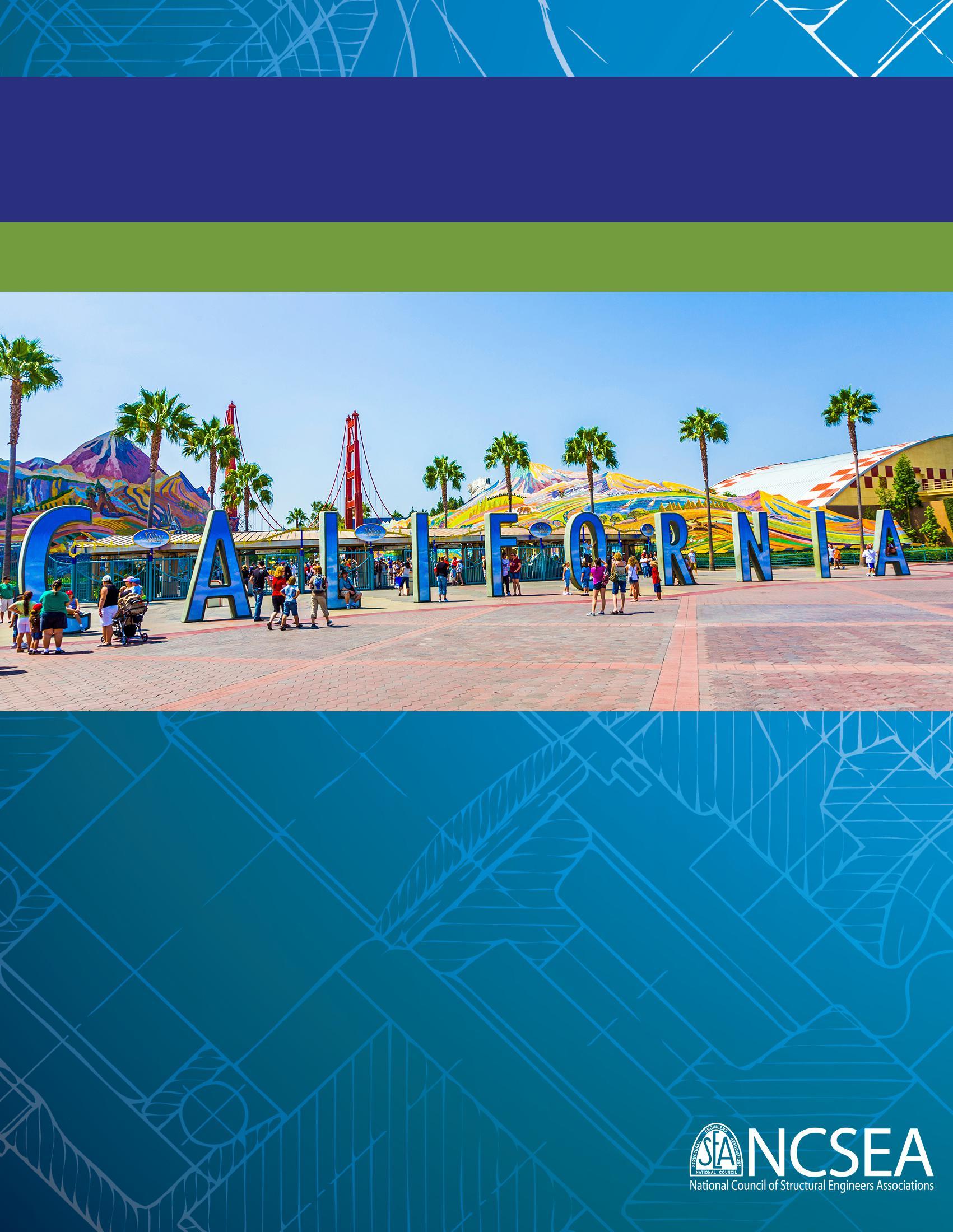
anaheim: disneyland hotel| November 7-10, 2023 EARLY BIRD PRICING ENDS 9/30! 2023 STRUCTURAL ENGINEERING SUMMIT ncseasummit.com Join the best and brightest SE thought leaders this November! Engage in 14+ hours of high-quality education, reconnect with colleagues, have fun with friends, and network with suppliers showcasing the latest in technology and services to help you be the best you can be.
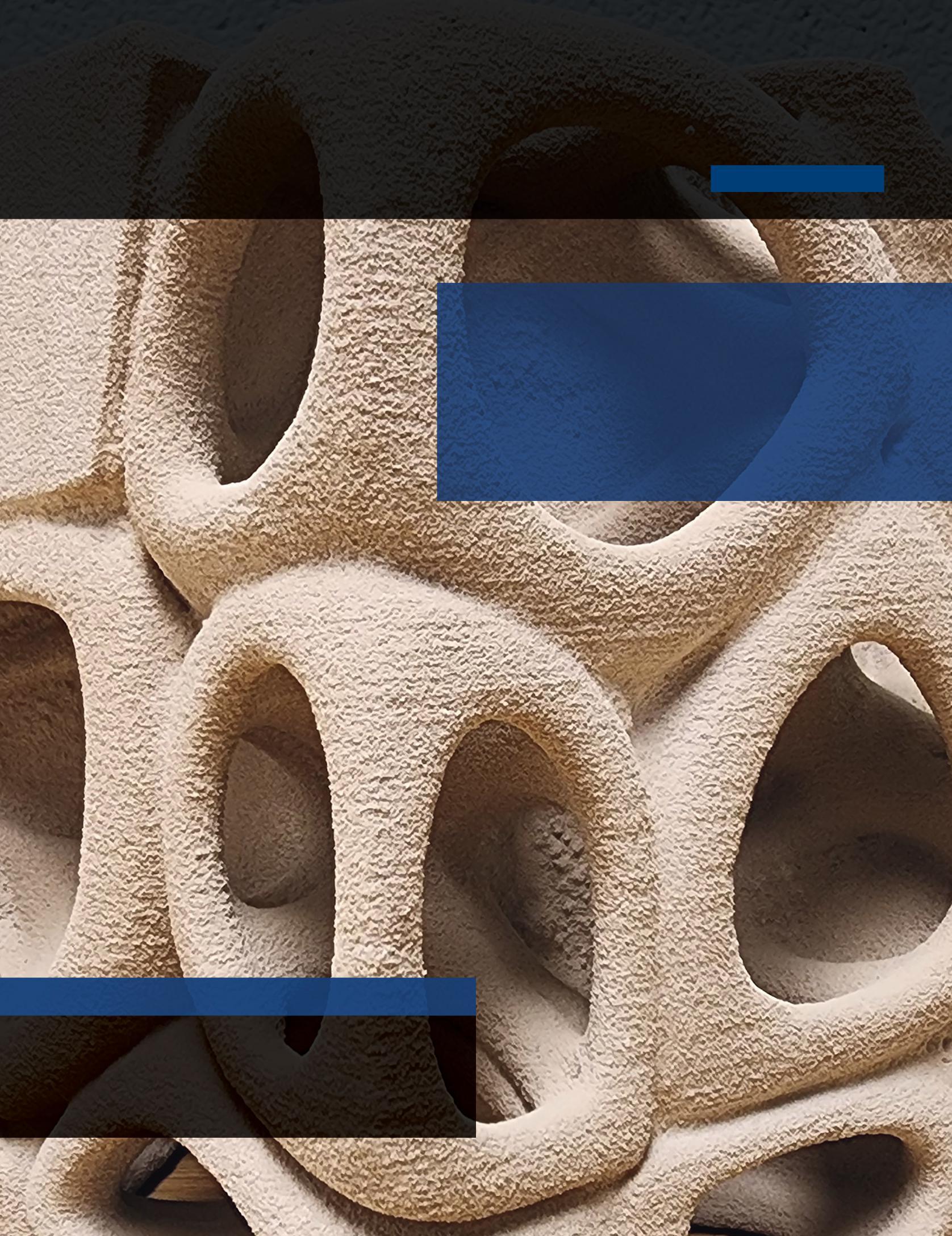
cONcRETE/ MASONRY INSIDE: Concrete Art Exhibit 10 Perforated Brickwork in Anchored Veneer 13 Ferndale Earthquake Observations 22 Two Approaches to Slender Masonry Walls 44 STRUCTURE SEPTEMBER 2023 NCSEA | CASE | SEI

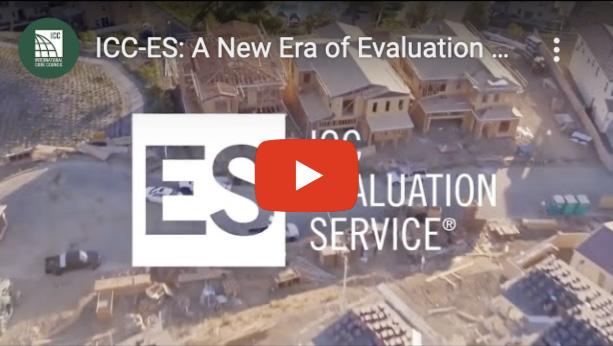
ICC-ES provides total conformity assessment solutions for building products • Over 90 years of industry experience • Experts in building product testing, inspection and certification • Acceptance Criteria development for innovative products • Trusted by code officials for ease in approvals and installation 23-22862 www.icc-es.org | 1-800-423-6587 Look for the ICC-ES Mark of Confidence™ ICC
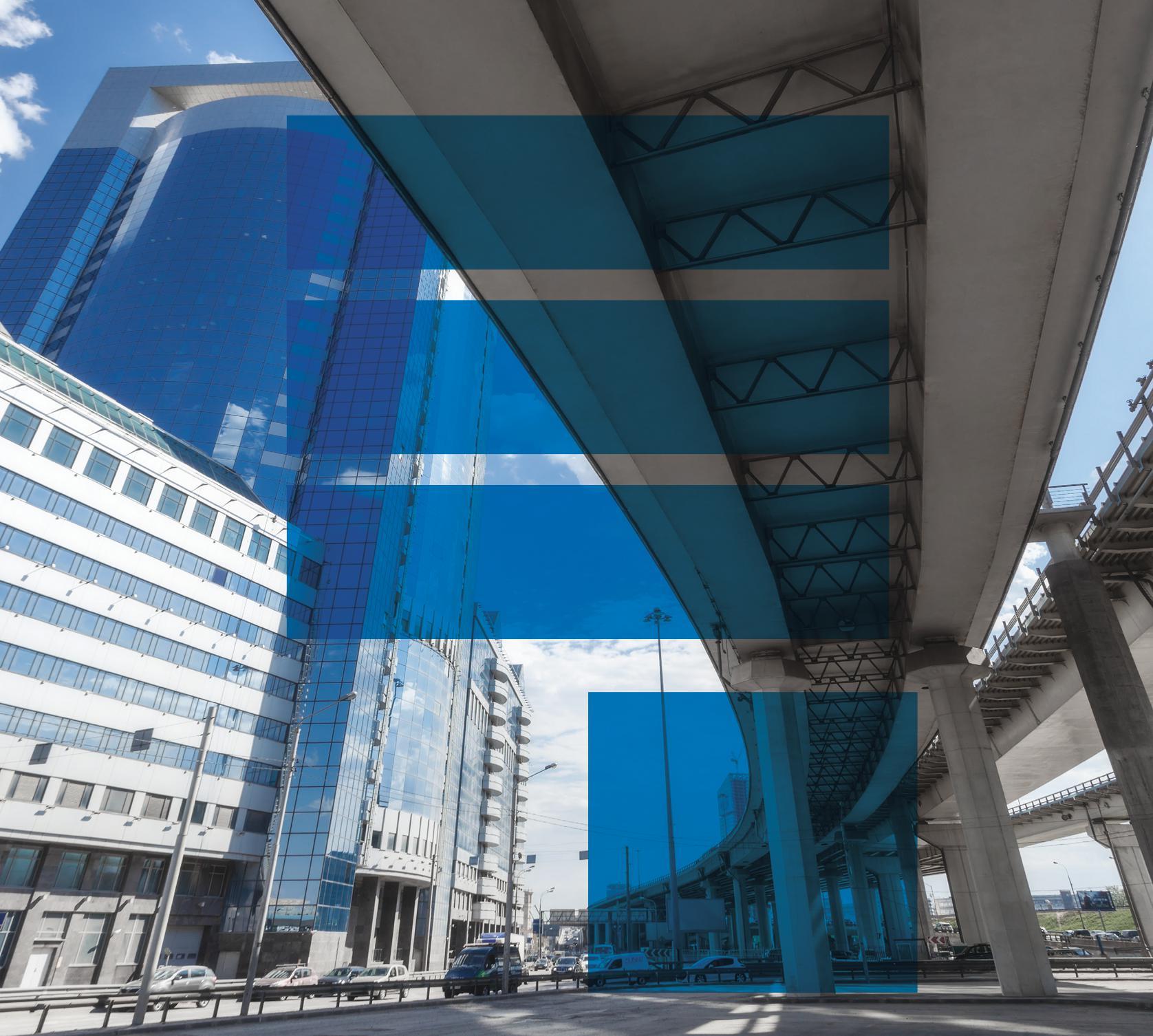





































MAPEI offers a full range of products for concrete restoration, waterproofing and structural strengthening. Globally, MAPEI’s system solutions have been utilized for such structures as bridges, dams, tunnels, highways, parking garages, stadiums and high-rises. Visit www.mapei.com/us for details on all MAPEI products. Your single-source provider for construction projects, restoration, strengthening and corrosion protection MAPEI STRENGTHENS. MAPEI RESTORES. MAPEI PROTECTS. • Concrete Repair Mortars • Corrosion Protection • Construction Grouts • Waterproofing • Sealants and Joint Fillers • Coatings and Sealers • Epoxy Adhesives • Cementitious Flooring Systems • Cure and Seals • Densifiers • Structural Strengthening Products • Precast • Epoxy Adhesives
ADVERTISERindex
CSI - Computers & Structures, Inc.
CTS Cement
DEWALT
ENERCALC
ICC-ES
Holcim
MAPEI
Please support these advertisers
NCSEA Summit
PCA-Portland Cement Association
RISA Schaefer Simpson Strong-Tie Tech Sales, LLC
September
STRUCTURE
CIRCULATION
subscriptions@structuremag.org
EDITORIAL BOARD
Chair John A. Dal Pino, S.E. Claremont Engineers Inc., Oakland, CA chair@STRUCTUREmag.org
Jeremy L. Achter, S.E., LEED AP ARW Engineers, Ogden, UT
Erin Conaway, P.E. AISC, Littleton, CO
Linda M. Kaplan, P.E. Pennoni, Pittsburgh, PA
Charles “Chuck” F. King, P.E. Urban Engineers of New York, New York, NY
Nicholas Lang, P.E. Vice President Engineering & Advocacy, Masonry Concrete Masonry and Hardscapes Association (CMHA)
Jessica Mandrick, P.E., S.E., LEED AP Gilsanz Murray Steficek, LLP, New York, NY
Jason McCool, P.E. Robbins Engineering Consultants, Little Rock, AR
Brian W. Miller
Cast Connex Corporation, Davis, CA
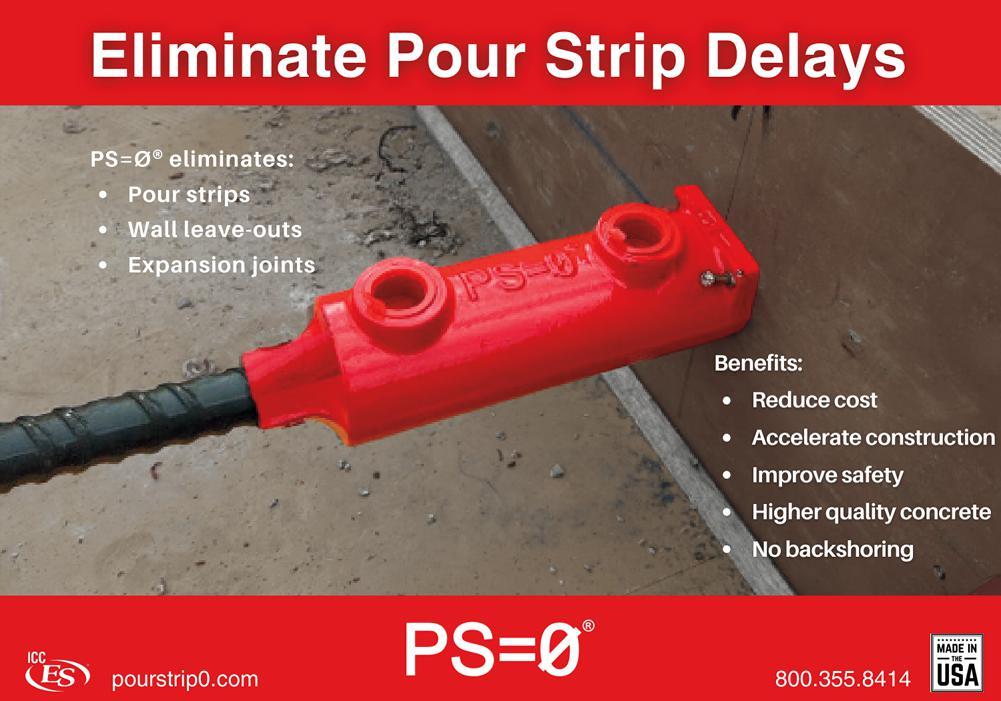
Evans Mountzouris, P.E. Retired, Milford, CT
Kenneth Ogorzalek, P.E., S.E. KPFF Consulting Engineers, San Francisco, CA (WI)
John “Buddy” Showalter, P.E. International Code Council, Washington, DC
Eytan Solomon, P.E., LEED AP Silman, New York, NY
Jeannette M. Torrents, P.E., S.E., LEED AP JVA, Inc., Boulder, CO
EDITORIAL STAFF
Executive Editor Alfred Spada aspada@ncsea.com
Production production@structuremag.org
MARKETING & ADVERTISING SALES
Director for Sales, Marketing & Business Development
Monica Shripka Tel: 773-974-6561 monica.shripka@STRUCTUREmag.org
STRUCTURE ® magazine (ISSN 1536 4283) is published monthly by The National Council of Structural Engineers Associations (a nonprofit Association), 20 N. Wacker Drive, Suite 750, Chicago, IL 60606 312.649.4600. Periodical postage paid at Chicago, Il, and at additional mailing offices. STRUCTURE magazine, Volume 30, Number 9, © 2023 by The National Council of Structural Engineers Associations, all rights reserved. Subscription services, back issues and subscription information tel: 312-649-4600, or write to STRUCTURE magazine Circulation, 20 N. Wacker Drive, Suite 750, Chicago, IL 60606.The publication is distributed to members of The National Council of Structural Engineers Associations through a resolution to its bylaws, and to members of CASE and SEI paid by each organization as nominal price subscription for its members as a benefit of their membership. Yearly Subscription in USA $75; $40 For Students; Canada $90; $60 for Canadian Students; Foreign $135, $90 for foreign students. Editorial Office: Send editorial mail to: STRUCTURE magazine, Attn: Editorial, 20 N. Wacker Drive, Suite 750, Chicago, IL 60606. POSTMASTER: Send Address changes to STRUCTURE magazine, 20 N. Wacker Drive, Suite 750, Chicago, IL 60606.
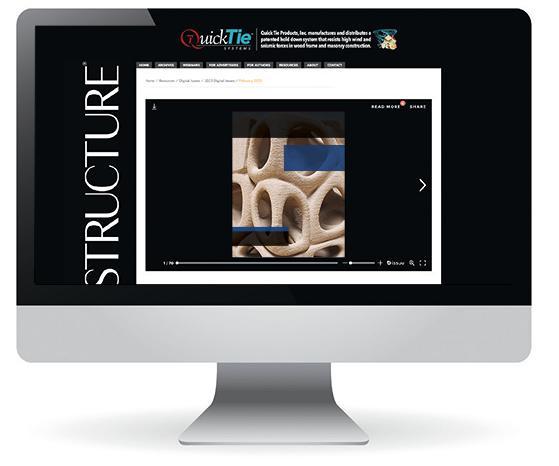
STRUCTURE is a registered trademark of the National Council of Structural Engineers Associations (NCSEA). Articles may not be reproduced in whole or in part without the written permission of the publisher.

3 SEPTEMBER 2023
®
Issue Available Only at STRUCTUREmag.org
Digital
2023
MASONRY STRUCTURE
the Cover:
printed concrete sculpture from an exhibit at the National Museum of Industrial History, located in the former seat of Bethlehem Steel, Pennsylvania. Photo Courtesy of Xingjian Wang. ADVERTISEMENT–For Advertiser Information, visit STRUCTUREmag.org
cONcRETE/
On
A 3D
Specify more applications with one connector.
Now you can specify a single connector as a tension tie or holdown.
New from Simpson Strong-Tie, the code-listed LTTP2 light tension tie securely attaches wood joists, studs, or posts to concrete or masonry walls and foundations. With allowable loads 25% higher than previous models, it enables greater design flexibility. This versatile connector has two distinct nailing patterns for horizontal installation as a tension tie with I-joist purlins or 2x solid sawn purlins, plus an extruded anchor bolt hole that accommodates multiple bolt diameters. The LTTP2 also is suitable for vertical installation as a holdown, and can be fastened with nails or Strong-Drive® SD Connector screws. Select the LTTP2 and Simpson Strong-Tie® fasteners for your next project. To learn more, visit go.strongtie.com/lttp2 or call (800) 999-5099.
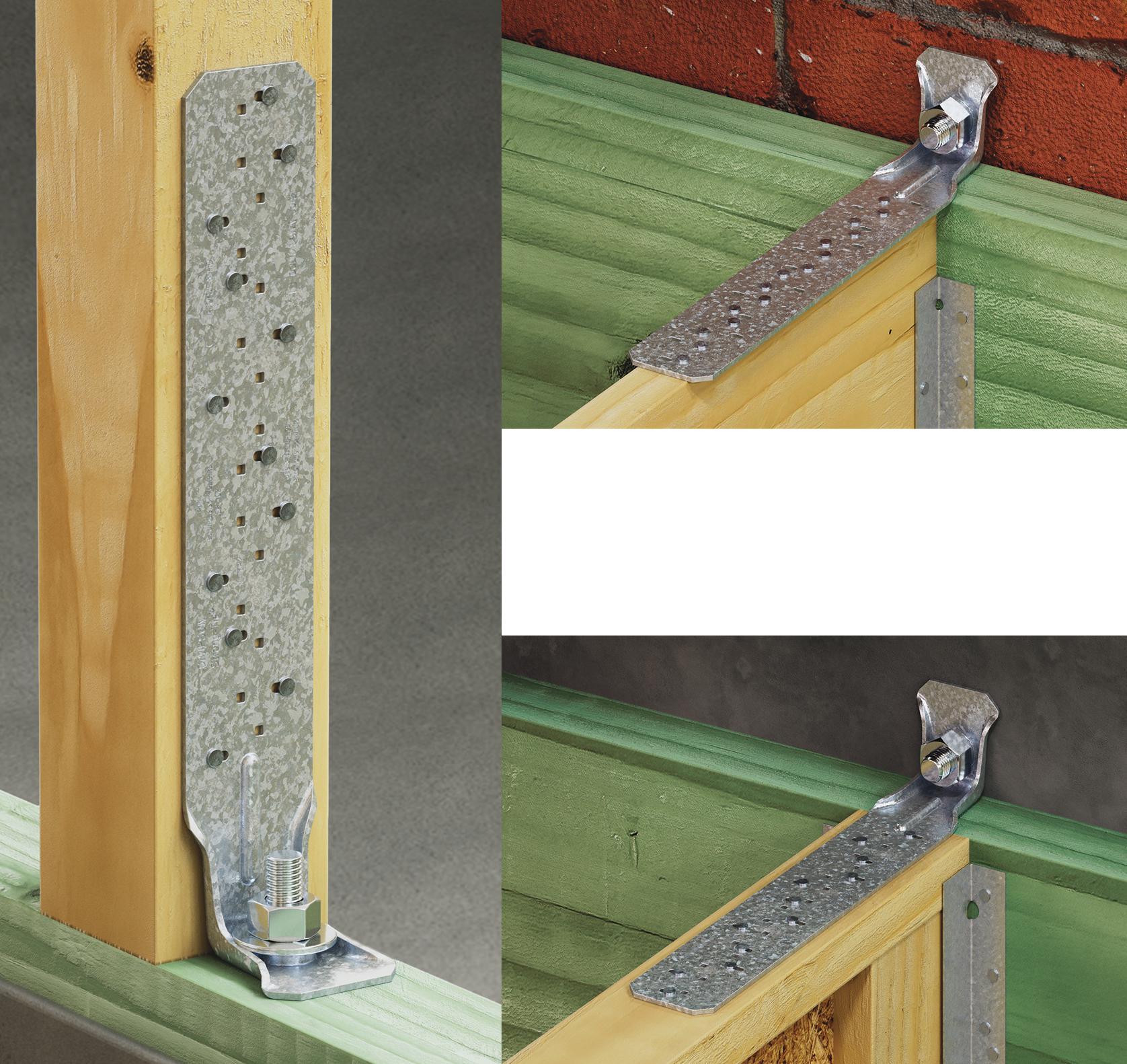
© 2023 Simpson Strong-Tie Company Inc. LTTP23-S Residential Solutions | Products, Software and Service for Smarter Building
SEPTEMBER 2023
Features
Columns and Departments
ABOUT THE FUTURE OF CONCRETE
By Xingjian Wang, John T. Fox, Ph.D, P.E., Clay J. Naito, Ph.D., P.E., F.PCI,
Nik Nikolov, Registered Architect (R.A.), AIA, NCARB, LEED AP, Urinrin Otite, Paolo Bocchini, Ph.D. F.SEI
Additive manufacturing is a rapidly developing technology that is already transforming many sectors and has the potential to usher in a new paradigm.
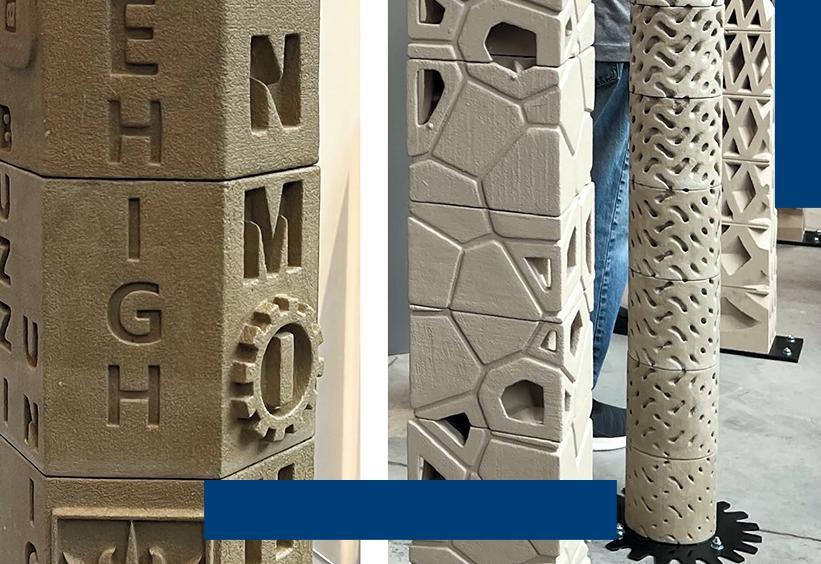
32 THE FUTURE IS LOOKING UP. LITERALLY. THE EVOLUTION OF PORTLAND INTERNATIONAL AIRPORT
 By Christopher Pitt, P.E., S.E., LEED A.P., Associate, KPFF
By Christopher Pitt, P.E., S.E., LEED A.P., Associate, KPFF
The approximately $2 Billion Portland International Airport Terminal Core Redevelopment Project, located in Portland, OR, is led by the Port of Portland as owner, with a design team featuring ZGF Architects and KPFF as Structural Engineer. It is currently being built by Hoffman-Skanska Joint Venture as CMGC. The project is summarized in Part One, published in the June 2023 Structure, and features many unique structural solutions.
44
By Edwin Huston, P.E., S.E.
46
By Steven Judd, S.E.
The
By Dr. Will F. Ikerd, P.E., Ph.D.
In
S.E.
5 SEPTEMBER 2023 Publication of any article, image, or advertisement in STRUCTURE® magazine does not constitute endorsement by NCSEA, CASE, SEI, the Publisher, or the Editorial Board. Authors, contributors, and advertisers retain sole responsibility for the content of their submissions. STRUCTURE magazine is not a peer-reviewed publication. Readers are encouraged to do their due diligence through personal research on topics. 7 Editorial A New Path for SEI By Stephanie Slocum, P.E. 8 Structural Influencers Kate Stillwell 13 Masonry Sunlight and Shade By Cortney Fried, P.E., 16 Structural Maintenance Concrete Defects and Preventive Maintenance By Ahmed Clayiff, P.E., CBSI 18 Structural Flexibility Deflections of Concrete Structures Using Bilinear Flexibility By Neil Wexler, Ph.D., P.E., Hoonhee Jeoung,
22 Infocus Observations from the December 20, 2022, Ferndale Earthquake
38 Structural Forum Understanding Developing Issues in Access to Design Data
Dispute Resolution,
40 Structural Efficiency Maximizing Masonry’s Efficiency
P.E., Nissim Elmann, P.E.
By John A. Dal Pino, with assistance from Claire Hu, Elizabeth Bognar, and Hongxun Yang
By
Joan Malana Kennedy, BSc Architecture, MSc Building Science, MSc Construction Law
and
UAP, FCIArb, FPIArb, AMAE
By Philippe J. Ledent, P.E.,
Structural
Slender Masonry Walls
Methods Tall,
Masonry
Structural Resilience Hollow Reinforced Clay
Enhances Resiliency
56 Insights
Future of Concrete
BIM
Every Issue
Advertiser Index
Anchor Guide
NCSEA News
SEI Update
CASE in Point
3
21
50
52
54
A MUSEUM EXHIBIT
Cover Feature 10
Contents


A New Path for SEI
Building a bridge to a brighter future.
By Stephanie Slocum, P.E.
How will the structural engineering profession keep up in a rapidly evolving world?
This question has been on my mind for a long time and was brought to the forefront with my election to the SEI Board of Governors in the fall of 2020 as our profession grappled with the unknown long-term impacts of the pandemic. How structural engineers work has changed. Compared to when I started my career 20 years ago, the industry is more connected, more collaborative, and less hierarchical. It also requires professionals to lead themselves and their teams earlier in their careers.
Organizations that support our profession must also evolve. I’ve had the privilege of serving alongside structural engineering leaders on SEI’s BOG and experienced the dedication of volunteers serving our industry. That dedication has led the BOG to determine that an SEI Reorganization is needed to best serve members and the profession.
This article, written in collaboration with SEI Board Members, will explain why it’s happening and what it means to you.
Why SEI is Reorganizing
SEI was founded in 1996 under parent organization ASCE. In 2008, the SEI vision statement established four SEI priorities:
•A unique, fully engaged profession with a strong identity

•Recognized for the contribution the professional makes to public safety and risk management, economic and sustainable use of resources, the use of innovative technologies, and the creation of inspiring structures
•Stewards of the built environment
•Attractive to the best and brightest
In 2019, NCSEA, CASE, and SEI collaborated on the Vision for the Future of Structural Engineering, resulting in 10 key initiatives that also align with SEI’s original vision statement. This fundamental vision has not changed and will be unaffected by the SEI Reorganization. The challenge is that over time, how SEI contributes to this vision has morphed into a long list of activities that may or may not have evolved in direct connection to the original vision.
SEI’s original organizational structure has
remained mostly unchanged since its initial establishment 25+ years ago. As is typical with growing organizations, organizational structures must evolve to keep pace with members and industry needs or risk becoming stagnant.
SEI has experienced growing pains. They include excess bureaucracy, communication silos, struggles with resource allocation, slow and unequal pathways to leadership for rising stars depending on where you volunteered within the organization, and a lack of strategic focus due to an overwhelming list of “to-dos” to keep the outdated structure functional.
SEI’s Reorganization is in response to internal and external challenges and opportunities shaping the structural engineering profession.
What are SEI’S ReorganizationGoals?
SEI’s Reorganization started with internal conversations and a study completed before my time serving on the BOG. The process also included consultative forums with SEI leaders and gathering input and survey data from members.
SEI’s BOG voted to move forward with developing the transition plans for SEI’s Reorganization in Fall 2022 and is grateful for the leadership of countless volunteers in developing the plans for a brighter future.
Reorganization goals include:
• Increase collaboration and knowledgesharing throughout SEI by moving from the current five Division structure to a two Community structure.
• Reorganize the SEI BOG from a representative structure to a strategic board structure for long-term operation efficiency.
• Become a more nimble, responsive organization to meet industry and member needs as the pace of change accelerates.
•Focus the efforts and resources of SEI to establish and meet SEI priorities for the profession’s advancement.
• Increase leadership opportunities and pathways to leadership for rising stars.
The new SEI organizational structure will be implemented following new bylaws approval of parent organization ASCE, estimated in October 2023.
New SEI Structure Highlights
Highlights of the new organizational structure include:
• The size of SEI’s BOG is reduced. Studies show that large boards struggle with effective decision-making, and this shift is intended to refocus the BOG on being a strategic guiding hand in supporting the vision. A strategic board requires a more collaborative and communicative governance approach which empowers volunteers to execute the vision.
•The organizational structure shifts to a twocommunity structure instead of the current five-division structure. The new structure is intended to break down communication and collaboration silos and reduce the hierarchy and bureaucracy inherent in a more complicated organizational structure.
• A focus on collaboration, knowledge-sharing, and leadership pathways for young professionals and rising stars
SEI’s Reorganization comes down to this: better communication and collaboration so that SEI can best address priorities as an organization and better serve the structural engineering profession.
The SEI Reorganization Benefits The Industry
The overarching goal of SEI’s Reorganization is to better serve its members and the structural engineering profession.
The Reorganization allows SEI to be more streamlined and agile, better responding to industry trends and member needs. It enhances leadership opportunities for rising stars and young professionals, contributing to a more dynamic and inclusive profession. Leading organizations embrace the need to evolve so that they can best support the people that make up our profession. SEI’s Reorganization is how we prepare for a future in which knowledge-sharing, collaboration, strategy, and growth are all prioritized.
You can read more details about the reorganization structure on SEI’s website: https://go.asce. org/3P2wBF7 ■
STRUCTURE magazine SEPTEMBER 2023 7 EDITORIAL
Stephanie Slocum, P.E. is the Founder of Engineers Rising LLC, based in State College, PA, and SEI President-Elect FY24. (stephanie@engineersrising.com).
structural INFLUENCERS
Kate Stillwell
Kate Stillwell is a structural engineer and entrepreneur working at the intersection of physical and financial resilience. As a structural engineer, Kate has worked with Greg Luth & Associates, Degenkolb Engineers, and Holmes Consulting. In catastrophe modeling, she has worked at EQECAT (now CoreLogic) as the Product Manager of earthquake models worldwide, and she was the founding Executive Director of the Global Earthquake Model Foundation at the ROSE School in Pavia, Italy.
Kate founded and leads InsurTech startup Jumpstart, the first company to bring parametric insurance to consumers, starting with earthquake risk in California. Jumpstart was acquired in 2021 by Neptune Flood, where, as President of Parametric Insurance, Kate is now responsible for new product development and for continuing to lead sales of Jumpstart’s parametric insurance.
As a side project, Kate co-founded FireBreak, a consumer app for wildfire self-inspection, mitigation, and insurance eligibility.
Kate is a Past President and Fellow of SEAONC and a co-founder of the Building Ratings Committee (BRC), which later became the Resilience Committee. With other BRC members, Kate co-founded the US Resiliency Council. Kate is also a longtime member and Housner Fellow of EERI.
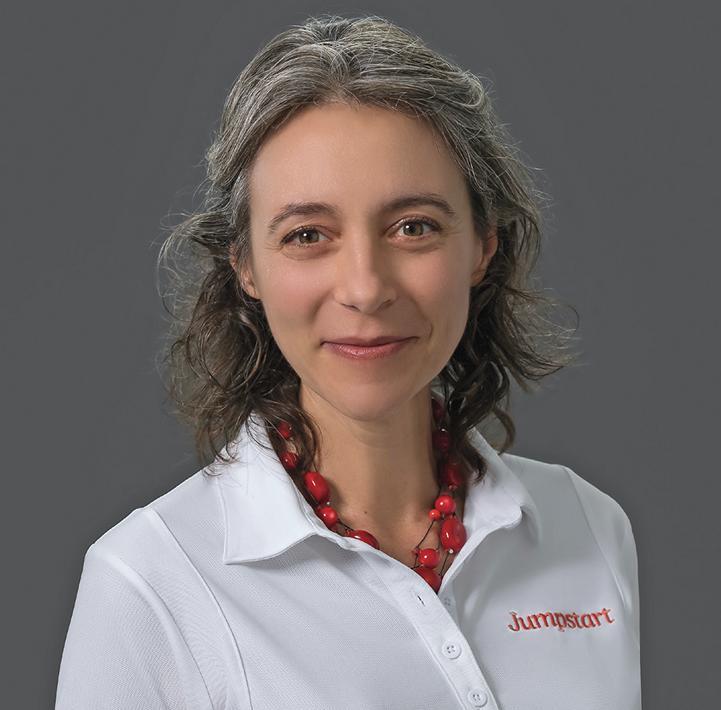
Kate holds an MS in Civil Engineering from Stanford University, an MBA from the Haas School of Business at UC Berkeley, and a Bachelor of Civil Engineering from the University of Minnesota.
Your working career started in a traditional engineering office. Before we move on to the present, what did you learn then, or better yet, who did you meet that proved useful later?
Mentors and muses come in all ages and experience levels. Some of my fondest co-workers are the most unorthodox - like Greg Luth, my first boss. Another person who influentially shaped my career was former Degenkolb CEO, Chris Poland. We didn’t always see eye to eye, but his involvement in real estate and public policy circles inspired me to see the bigger “pond” in which structural engineers work. Safe buildings are necessary for a resilient society, but they’re not sufficient without equitable governance, social ties, and economic stability. Another key player who shaped my journey is Laurie Johnson, particularly her post-Katrina research in New Orleans on social effects of mega-disasters.
After several years in the AEC industry, you shifted focus and went off to business school at Berkeley. May we ask why?
Precisely to learn about and participate in those “wider circles” that structural engineering touches – to apply the time and talents of engineers to the social and economic dimensions of disaster recovery. I’m pretty sure such a vague purpose statement would not earn admission to business school today, but lucky for me, that was the dark ages.
Were you planning on going back into structural engineering?
Yes! I was too proud to leave my credentials behind! Structural engineers have pivotal gravitas in policy making, which mere business people can only imitate. As it turns out, it has been many years since I have used my SE license in practice, but I keep a toe in the door by participating in SEAONC and staying in touch with my structural engineering friends.
There is a lot of talk these days about community resilience. But more than talk about it, you actually did something. Would you tell us a little more about your motivations and goals?
It goes back to Katrina, a major galvanizing force not just for me, but for many resilience-minded professionals. As I watched real-time footage of the levees breaking, I felt a visceral pit in my stomach, seeing the social inequities and thinking, “after the next big earthquake, my hometown of Oakland will be the next New Orleans.”
I knew that the next big earthquake would be a triple-whammy to society and the economy: 1) FEMA is the first to admit that public aid is too little too late; 2) earthquakes are excluded from insurance; and worst of all, 3) a majority of Americans have less than $1000 in liquid savings – not just the poor, but people in all walks of life. Our personal finances have no buffer to face widespread disruption. Flash-forward to the COVID-19 pandemic, which made this truth all too evident.
When did you decide to start your own company? And what compelled you to do this?
As far back as 2006. When Katrina struck, I had just started business school. The following semester, in a real estate finance class by late professor Dwight Jaffee, I learned about catastrophe (“cat”) bonds, large-dollar-amount hedging instruments where companies swap their natural hazard risk for financial risk. In one of the first cat bonds, dating from 1997, Tokyo Disneyland arranged a deal where if a M7.3+ earthquake occurred in a specified geographical box in the next three years, they would receive $100M from the counterparty, which would make up for some of their lost operational revenue. Of course, they had to pay to offload their risk, by way of an “interest rate” on the $100M, but it was a way of protecting their cash flow
STRUCTURE magazine 8
and avoiding debt. A financial buffer!
That’s when I made the connection. We needed “micro” catastrophe bonds for earthquakes (and floods)! That’s how Jumpstart originated. But it was ten years before the technology and data were sufficiently mature to bring the idea to reality at scale.
How does Jumpstart work?
Jumpstart sells earthquake insurance that makes immediate $10,000 lump sum payments in areas that experience ground shaking greater than a pre-specified amount. The payout does not require physical damage but rather is intended to pay unexpected expenses and “jump-start” the recovery process.
Starting any business is challenging enough, but entering the capital-intensive and highly regulated insurance industry is an entirely different matter. What did you learn that our readers would benefit from?
The importance of intention cannot be understated. When your intention is clear, well-articulated, and authentically motivated to make good in the world, doors will open that would otherwise stay closed. As one example, we engaged with the insurance regulator early and often, whereas a conventional insurance incumbent might take the conservative view of not engaging - as a strategy to avoid the risk that regulators might scrutinize unrelated profitable operations. As a result, we were unblocked from proceeding with our unorthodox approach, whereas the incumbent, in an abundance of prudence, might conclude not to proceed at all.
Just as structural engineering attracts people whose intrinsic motivation is to “just build stuff,” people with an intrinsic motivation to “just make money” are drawn to insurance and finance. Unfortunately, this means the insurance industry is disproportionately populated by people with intentions that conflict with the common good, and this leads to widespread mistrust. More than once, I received feedback from partners – long after a deal was sealed – that the deciding factor to work with us was that our resilience motive was “a breath of fresh air.”
Can you say a bit more about what it was like entering an industry at a level where women are few and far between?
One of the best pieces of advice I’ve received in recent memory, and which I continue to lean on today, was an offhand remark in 2014 by my dear friend and EERI member Charlie Huyck, “go with your strengths.” Every person brings their uniqueness to a situation or negotiation. The trick is to be aware of it and learn how to leverage it. For example, I’m a believer that the advantage of sharing information to help “lift all boats” far outweighs the risks of a competitor stealing an idea. As a result, I’m not known as the most aggressive “winner” from a sales perspective, but the phone doesn’t stop ringing for potential partnerships and collaboration.
Getting Jumpstart up and running is memorable in itself. Would you share a few other achievements that would inspire others?
You’re asking me to stroke my own ego … so it’s hard to know how to respond. Make a joke to signal my humility? Pontificate on the virtue of gratitude? Take the bait and regurgitate my CV? Since the point of this question is to inspire readers, here’s what I’ll say: One of the hardest things in life is to act with courage. Even to know what the courageous response would be in a situation. Sometimes acting or speaking with courage causes pain, even if it’s the right thing to do. On a recent episode on the podcast Hidden Brain, guest Todd Kashdan described our current culture as “addicted to
comfort.” But pain is temporary and often a necessary part of the process leading to a just outcome. It’s natural to struggle when trying to discern between necessary pain vs. pain that tells us something is really wrong – and in either case, use that pain as a “helpful friend” who guides us toward courage.
Successful firms plan for ownership transition and firm longevity. But a start-up must be entirely different. What needs to be done every day to keep the ship afloat, so to speak?
A close friend, also a startup founder, asked me yesterday for a referral to a bookkeeper. The truth is, the founder of a startup is simultaneously both CEO and custodian. Yes, I enjoy the benefits of plum speaking engagements, but I also – quite literally – took out the trash and did other chores, including, to my friend’s disappointment (but not surprise), balancing the books. On the question of ownership transition, I liken the journey of a startup to a celebrity maintaining a social media account: it’s a continuous investment in perceived value. Startups are valued almost exclusively on intangibles. What is the value of your vision? Your customer feedback? The force of personality of the founders? The loyalty of the employees? You cannot abandon sales and operations, but there’s an additional responsibility (and privilege) of thinking long and hard about nonmonetary assets.
Concerning mentoring, we assume that you have had many, and that you mentor others yourself. What is your approach, and what have you found that works best?
Some of the most powerful questions, on either the giving or receiving end, are “What haven’t I asked that I should be asking?” and “How can I be most helpful?” The common thread is a lack of presumption. We’re trained to be experts – to KNOW the ANSWER to things, and I’m one of the worst offenders. But mentorship is all about relationships, and relationships work best when we meet people where they’re at, rather than presuming what they need, or what they want to hear. I sometimes have to force myself – and I don’t always succeed – to stop talking and ask the listener if they actually want advice before I just dish it out.
Work-life balance has been a hot topic for several years. Recently doing just enough to get by is a trend too. What advice would you give to young entrepreneurs?
A repeated theme in my responses so far is the power of awareness: knowing – authentically – your motivation. Your strengths. Your emotions and the signals they’re sending you. The limitations of your knowledge. So many of us, including myself, have poor awareness of our boundaries, and this can lead to resentment and the temptation to “quietly quit.” But there’s the flip side, too: knowing the full extent of our capabilities. Nelson Mandela captured this in his famous inaugural speech, “Our deepest fear is not that we are inadequate. Our deepest fear is that we are powerful beyond measure. It is our light, not our darkness, that most frightens us.” The challenge, then, is to become more aware – even if it brings (temporary) pain – of our capability to be the change we want to see in the world.
Regarding your personal legacy, what do you think you will be remembered for, and/or what are you most proud of?
Making something where nothing existed before. It’s what I love about cooking with leftovers. It’s what makes it so gratifying to start a venture. And it’s the fundamental pull of the engineering profession: the creative force made manifest.■
SEPTEMBER 2023 9
Additive manufacturing (AM) is a rapidly developing technology that is already transforming many sectors and has the potential to usher in a new paradigm. The automated production of structures is one of the potentially most impactful applications of AM, also called “3D printing.” A group of engineers and architects at Lehigh University investigated a technique called “Particle bed 3D printing by selective binder activation” to manufacture objects made of concrete. Their interests started with structural engineering and progressively expanded to include environmental impact, architecture, and topology optimization. The team also partnered with Buzzi Unicem USA Inc., an international cement producer headquartered in the Lehigh Valley (PA). Together, they are collaborating with the National Museum of Industrial History, located in the former seat of Bethlehem Steel, Pennsylvania, to showcase this technique and its potential through an exhibit. The exhibit is an opportunity to reflect on the past, present, and future of cement in Eastern Pennsylvania. This area historically has had a high density of companies in the cement sector. The PA Department of Community and Economic Development supported part of this research. Figure 1 shows a
A Museum Exhibit About The Future of Concrete
By Xingjian Wang, John T. Fox, Ph.D, P.E., Clay J. Naito, Ph.D., P.E., F.PCI, Nik Nikolov, Registered Architect (R.A.), AIA, NCARB, LEED AP, Urinrin Otite, Paolo Bocchini, Ph.D. F.SEI
3D printed totem, two freestanding columns and one portal frame, which are part of the exhibit.
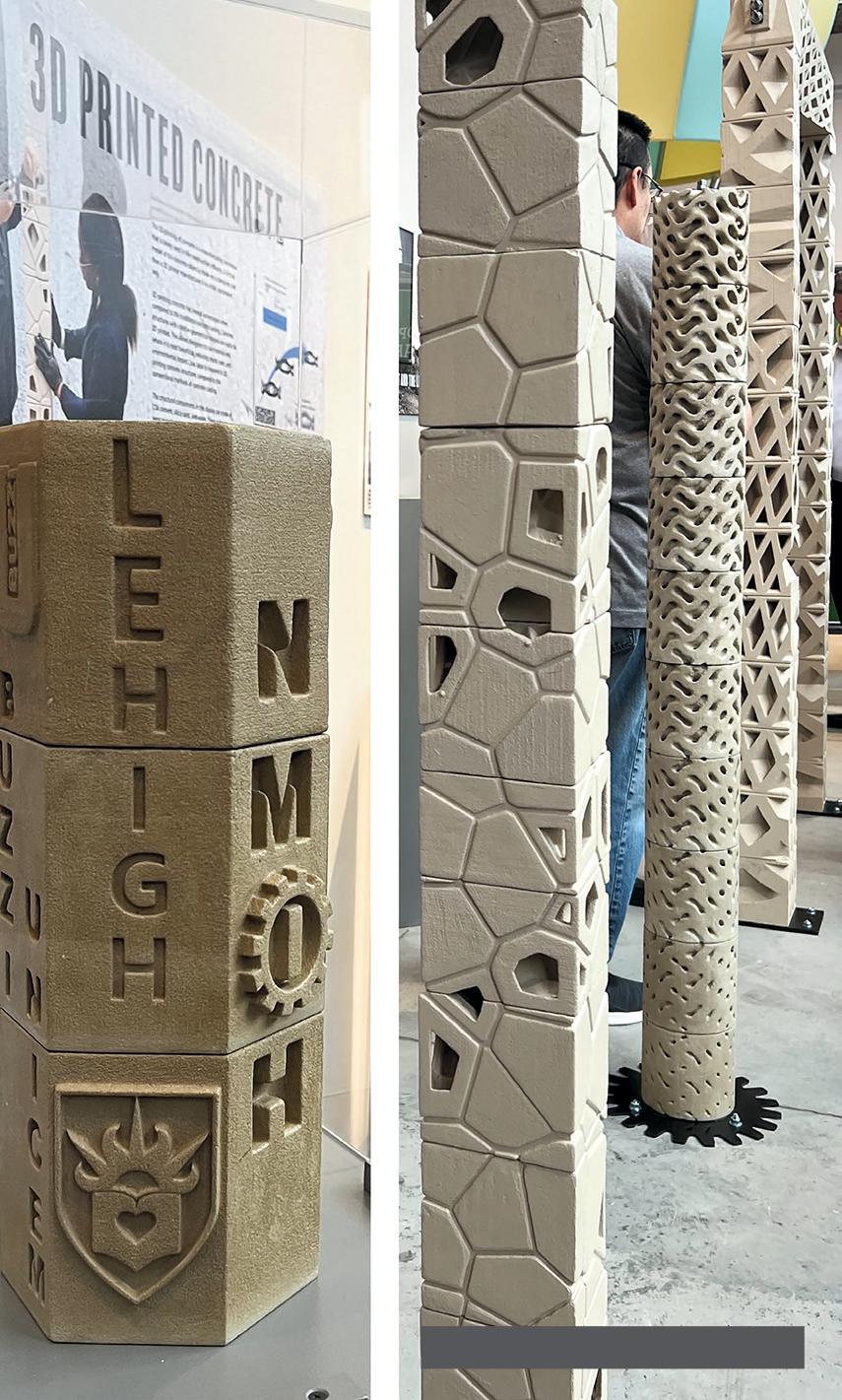
Manufacturing Process
The first applications of additive manufacturing to concrete consisted of 3D printing disposable formwork made of polymers. This approach enables some interesting shapes that would be difficult to achieve with traditional formwork, but it does not 3D print concrete directly, nor does it fundamentally change the manufacturing process. Two types of 3D printing techniques exist for automated and direct concrete fabrication, with different technology readiness levels and market penetration. The first one is the material extrusion method which adopts the same 3D printing approach of household 3D printers for plastics. With this method, the operators mix cement, water, and aggregates to form plastic concrete which is then pumped and deposited through a nozzle connected to a computer- controlled
STRUCTURE magazine 10
Figure 1 3D printed products for the exhibit.
arm. This approach has been used for several demonstrations, including the construction of small houses and some military structures. The nozzle extrudes the plastic concrete to form layers of the structure, one on top of the other, which means that the structure can only grow vertically, with limited overhangs and challenges when windows or doors are installed. In contrast, with the particle bed printing technique developed at Lehigh, a machine uses a roller to distribute uniformly onto a platform a thin layer of a specifically engineered dry powder, including cement, fine sand, and in some cases, additives. Then, an aqueous liquid is jetted onto the layer at selected locations to activate cement hydration. The process is repeated, layer after layer, until the structure is complete. Notably, the powder that is not activated by the liquid stays in place and supports the subsequent layers, enabling the creation of cavities, overhangs, and any possible shape, even those that could never be created with formwork or with extrusion (see Figure 2). After printing, the object remains in the powder bed for 24 hours to have sufficient early strength to undergo postprocessing. After a day, the scientists at Lehigh take the printed structure out of the powder bed, clean and remove all the powder that was not activated, and perform heat treatment if needed. Then, they immerse the object in water to complete curing, usually for 14 to 28 days. This technique can reach a resolution of 300 × 450 dpi, so that precise details can be rendered in the manufactured objects.
Challenges and Solutions
A critical step of the process is cleaning the object after printing. With only 24 hours of curing in the powder bed, the structure is far from having its full strength. In these conditions, there is a risk of breaking the object and compromising its integrity, especially for designs with thin elements (Figure 2). Therefore, it is essential to design a powder mix that can achieve fast curing, and the Lehigh team accomplished that by using calcium sulfoaluminate cement (CSA), which leads to an early compressive strength of up to 0.9 MPa (130 psi) and can be safely manipulated after only 24 hours. Another benefit of having a dry powder based on CSA is its fast water absorption. Other mixes lead to very considerable “bleeding,” which means that water spreads far beyond the point where it is jetted, and the resulting object is just a blob. Instead, mixes based on CSA absorb water very quickly, almost entirely prevent bleeding, and enable very high accuracy and small details.
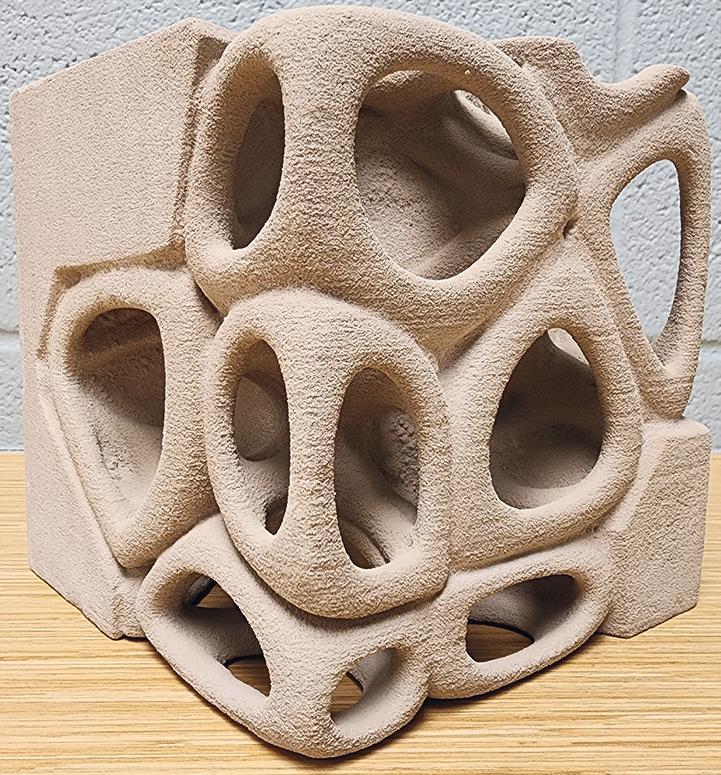
A New Design Approach Based on Topology Optimization
Traditional design approaches only leverage some of the freedom of shape offered by particle bed printing. For this reason, the team at Lehigh combines this new manufacturing technique with a design approach based on topology optimization (TO). This computational approach identifies an optimized shape for the structure in the design domain based on the desired objectives and constraints. Figure 3 shows a simple example application on a four-point bending beam. A conventional rectangular crosssection beam with unit width was
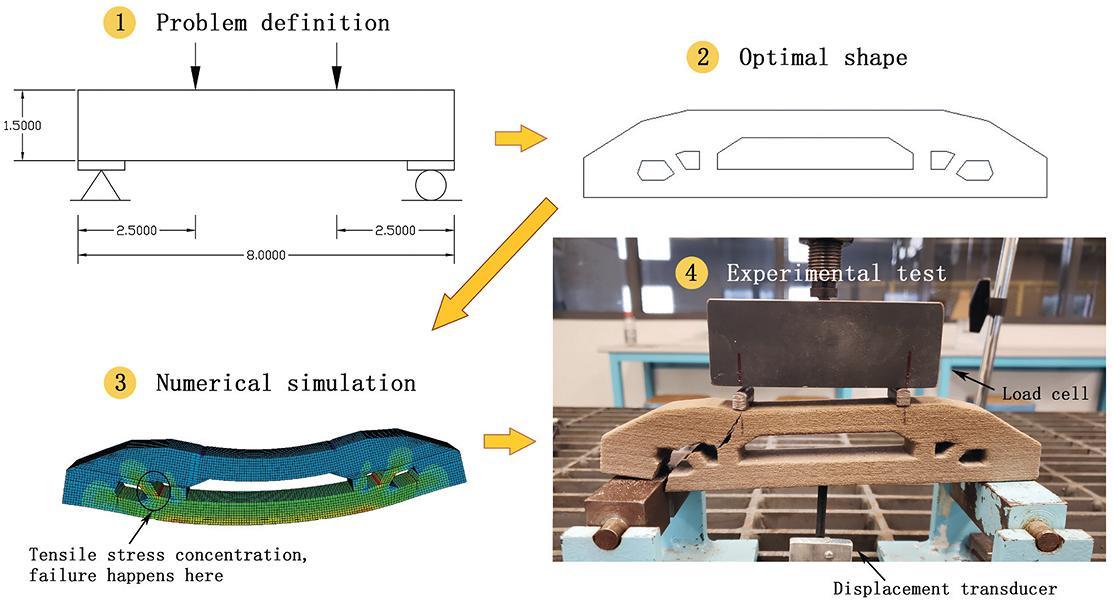
set as a design domain and studied as a reference. By applying topology optimization, an optimized design could be obtained with the objective of maximizing the stiffness of the beam and the constraint of reducing by 30% the material. A numerical simulation to predict the maximum capacity and breaking pattern of the optimized beam clearly shows that the failure occurs at the external diagonals of the structure, where the tensile stress is concentrated. The experimental results are in good agreement with the numerical simulation, especially in terms of determining the failure mechanism.
Figure 4 shows the test results for the conventional plain concrete beam (reference) and the optimized beams. The optimized beams have stiffness similar to the conventional beam (plain beam stiffness: 4.89 × 104 lb/in, optimized beam stiffness: 4.40 × 104 lb/in) while reducing the material
SEPTEMBER 2023 11
Figure 2 3D printed objects with many cavities and thin members.
Figure 3 Workflow of the case study.
by 30%, which leads to benefits in terms of weight, cost, and environmental impact.
Conclusions

All concrete 3D printing approaches endeavor to automate traditional concrete manufacturing. Particle bed 3D printing by selective binder activation

aims at going even beyond that by opening completely new horizons for concrete. The complete and unprecedented freedom of shape makes concrete behave like a new material requiring new structural and architectural design approaches. This technique is still in the early stages of its development, but the scientific results obtained so far and the interest of a national museum to create an exhibit on this as a form of art, technology, and creative expression are a testament to its potential. This approach enables innovative shapes, and even more importantly, it allows designers to use material only where it is most effective. The resulting reduction of the needed material can also have a considerable impact on carbon emissions. The current exhibit at the National Museum of Industrial History in Bethlehem (PA) is a wonderful opportunity for students, scientists, practitioners, and the general public to learn more about this revolutionary technique.■
Xingjian Wang is a doctoral student in Structural Engineering at Lehigh University (xiwa17@lehigh.edu).
John T. Fox, Ph.D., P.E., is Associate Professor of Environmental Engineering at Lehigh University (jtf211@lehigh.edu).
Clay J. Naito, Ph.D, P.E., F.PCI, is a Professor of Structural Engineering at Lehigh University (cjn3@lehigh.edu).
Nik Nikolov, Registered Architect (R.A.), AIA, NCARB, LEED AP, is an Associate Professor of Architecture at Lehigh University (nik@lehigh.edu).
Urinrin Otite is a doctoral student in Structural Engineering at Lehigh University (ubo221@lehigh.edu).
Paolo Bocchini, Ph.D., F.SEI, is a Professor of Civil Engineering, Director of Graduate Programs in Civil and Environmental Engineering, and Director of the Catastrophe Modeling Center at Lehigh University (paolo.bocchini@lehigh.edu).
We’re a nimble team with offices, projects + people across the country. We’re looking to partner with clients and hire individuals that bring their best every day. Our flexible work policy empowers our team members to both design cool structures + make it to that dance recital.
byald yyyy ayaay y fyllyw yyyy
STRUCTURE magazine 12
Figure 4 Experimental results of two types of beams: (a) conventional plain concrete beam (triangular markers) and (b) optimized concrete beams (circular markers).
aaaayaa
a lead the field
schaefer-inc.com/human-resources ADVERTISEMENT–For Advertiser Information, visit STRUCTUREmag.org
MASONRY
Sunlight and Shade
Incorporating Perforated Brickwork into Anchored Brick Veneer.
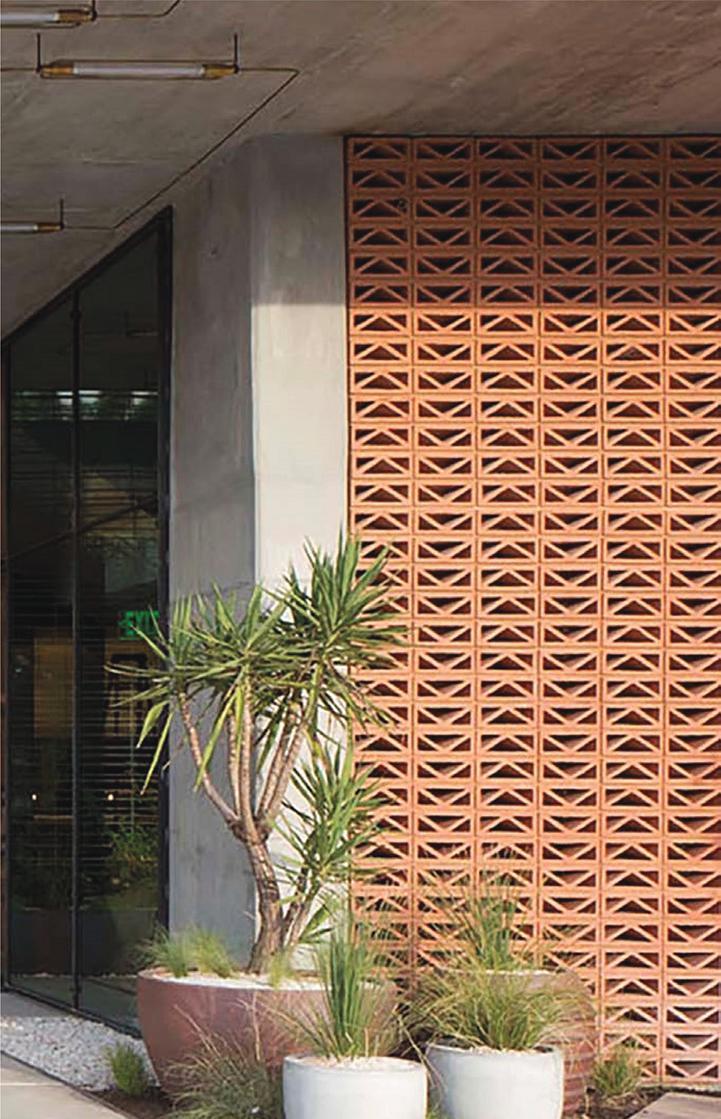 By Cortney Fried, P.E.
By Cortney Fried, P.E.
Perforated brickwork or brick masonry screen walls have a long history of use worldwide. The earliest known examples are found in Persia and the Middle East. More contemporary examples can be found in India. In hot climates like these, perforated brickwork helped screen the sun while allowing light and air to filter into the space beyond. Other names include pierced walls, lattice walls, hitand-miss brickwork, and jali. For consistency in this article, the term “perforated brickwork” will be used.
Perforated brickwork in the United States has typically been used in landscape applications such as garden walls or small utility enclosures, where their design and construction were empirical. More recently, the Brick Industry Association (BIA) has received inquiries requesting guidance for incorporating perforated brickwork into building facades at a larger scale. Inquiries generally include an inspirational photo without detailed information about the source project, which is typically located outside the United States.
The industry does not have a formal guide or comprehensive resource for the design and analysis of perforated brick walls/screen walls at this time. Still, it has compiled several resources and recommendations that are provided in response to the inquiries.
This article intends to present these resources to a broader audience while the industry is working to develop guides and references to catch up to the increased popularity and expanded use of perforated brick masonry.
Design
Methodology. The desired screen pattern dictates the design approach. Some screen patterns, such as that shown in Figure 1, utilize a clay solar screen tile, sometimes referred to as a “breeze block,” which is a hollow-fired clay unit with decorative perforations through the exposed face. These units typically maintain a solid rectangular or square perimeter. This solid perimeter and unit format allow them to be laid like traditional masonry, in accordance with the prescriptive code requirements for veneer, because there are full head joints between units and continuous bed joints. Per the prescriptive code requirements, if units are laid in a configuration other than running bond, such as that shown in Figure 1, veneer wire reinforcing with a minimum size of one W1.7 wire is required to be placed in the bed joint mortar at a maximum of 18 inches on center vertically. Other screen patterns incorporate solid clay brick units laid such that there are gaps in place of head joints to create the perforations (Figure 2). The lack of head joints change the veneer's behavior, so the masonry code's prescriptive provisions, TMS 402 - Building Code Requirements for Masonry Structures (TMS 402), no longer apply. In such a case, the alternative design provisions in the veneer chapter of TMS 402 are used as a substitute compliance path. These alternative design provisions consist of an engineered rational design method that applies the following four requirements or guidelines:
• Loads shall be distributed through the veneer to anchors (as applicable), and the backing through the principles of engineering mechanics
• Veneer stability must be maintained through limits to out-ofplane deflection
• The veneer need not be subject to the flexural tensile strength provisions of the Allowable Stress Design and Strength Design chapters in TMS 402.
• The general requirements for veneer must be met, along with the criteria for veneer not laid in running bond and the seismic prescriptive provisions.
Note that the 2022 version of TMS 402 includes a new engineered design method referred to as the “Tributary Area Method.” This method should not be applied to the design and analysis of perforated
SEPTEMBER 2023 13
Figure 1 Clay "Breeze Block"
brickwork, as the analyses performed to develop the method assumed masonry with head joints.
Wind Load. While calculating components and cladding wind loads is relatively straightforward, applying these loads to the perforated brickwork is less so. The presence of the perforations suggests that the loads should be reduced to reflect the proportion of the solid area. However, each unit within the screen pattern will have exposed top and side surfaces that experience drag and suction, resulting in a net wind load that is larger than expected by the proportion of solid area alone. Using unmodified components and cladding wind loads calculated for non-perforated claddings is recommended.
Existing Resources. The obsolete BIA Technical Notes on Brick and Tile Construction publication “Clay Masonry Shading Devices,” dated March 1957, includes some relevant information on the design of perforated masonry, including a formula to estimate the allowable unreinforced span length of a wall in feet.
and a larger specimen in shear to evaluate their load-bearing capacity. They found the compressive strength of a single wythe solid wall to be approximately 10 percent greater than a single wythe perforated wall. The perforated wall could only carry half of the in-plane lateral force compared to the solid wall. Finite element models demonstrated that the individual units are subjected to bending stresses due to the combination of compressive loading at adjacent units' bearing points and the unit's unloaded center. In-plane loads are managed by struts and ties formed through the unit intersections. Out-of-plane loads are managed through shear rotation within each segment of bed joint mortar.
Masia et al.conducted experimental testing of unreinforced perforated brick panels loaded outof-plane to evaluate both vertical and horizontal bending capacity and to compare with predicted capacities based on tested material strengths and current code equations per Australian Standard AS3700: Masonry Structures. Failures in both bending directions were non-ductile, but the specimens in horizontal bending exhibited larger capacities than predicted. Capacities in the horizontal bending direction were greater than the capacities in the vertical bending direction due to the differences in the loading of the mortar joints. In vertical bending, the out-of-plane load is resisted by the flexural strength of the mortar bed joints, whereas in horizontal bending, the out-of-plane load is resisted by the shear strength of the mortar bed joints and the flexural strength of the units.
Detailing
Reinforcing. Because the unreinforced capacity of perforated brickwork is limited, reinforcing must be integrated into the system. In some cases, this reinforcing is not readily apparent.
Where:
L = the allowable distance between lateral support in feet
t = the specified wall thickness in inches
Ab = ratio of actual bed joint length in a horizontal plane to the total wall length
k = ratio of solid wall area to total wall area in a vertical plane

w = design wind pressure in pounds per square foot
This formula is based on a standard allowable flexural stress equation (σ = M/S) with coefficients to reduce the section modulus of the wall. It includes an assumption for allowable flexural tension stress of 20psi. Note that the formula includes the old 1/3 stress increase that is no longer permitted. There has been limited research on the structural behavior and capacity of perforated brickwork, but two relatively recent studies provide insight. Ortlepp and Schmidt tested small-scale specimens in compression
Visible support framing is an obvious solution, typically used where the exposed framing would not be aesthetically objectionable. Where having visible support framing is objectionable, such as where the perforated brickwork spans across window openings, the support framing can be camouflaged. For instance, the London School of Economics Student Center used steel framing members fabricated to match both the size of the vertical window mullions and the overlap distance of the brick. Placed at each vertical mullion in the window system, this steel framing created intermediate locations to anchor veneer ties, reducing the unreinforced span length of the perforated brickwork while maintaining the desired appearance from the interior.
Internal reinforcement is necessary in cases where external support framing is not an option. If there are areas of solid brickwork directly adjacent to the perforated sections, these are ideal locations for placing reinforcement, which can consist of a bar or wire. Bed joint reinforcing may also be an option if the solid brickwork is oriented horizontally. Within the perforated brickwork, vertical reinforcing can only be placed within the overlap zones. For some designs, the geometry permits the brick cores to be used for reinforcing. Still, in others, the overlap zone needs to be narrower, and holes must be drilled into units without cores or frogs to incorporate reinforcing. Some of these configurations may not match the assumptions of the reinforced masonry requirements in TMS 402 and will need to be evaluated rationally. Load testing of a full-size mock-up panel would be prudent to help evaluate the design for structural performance.
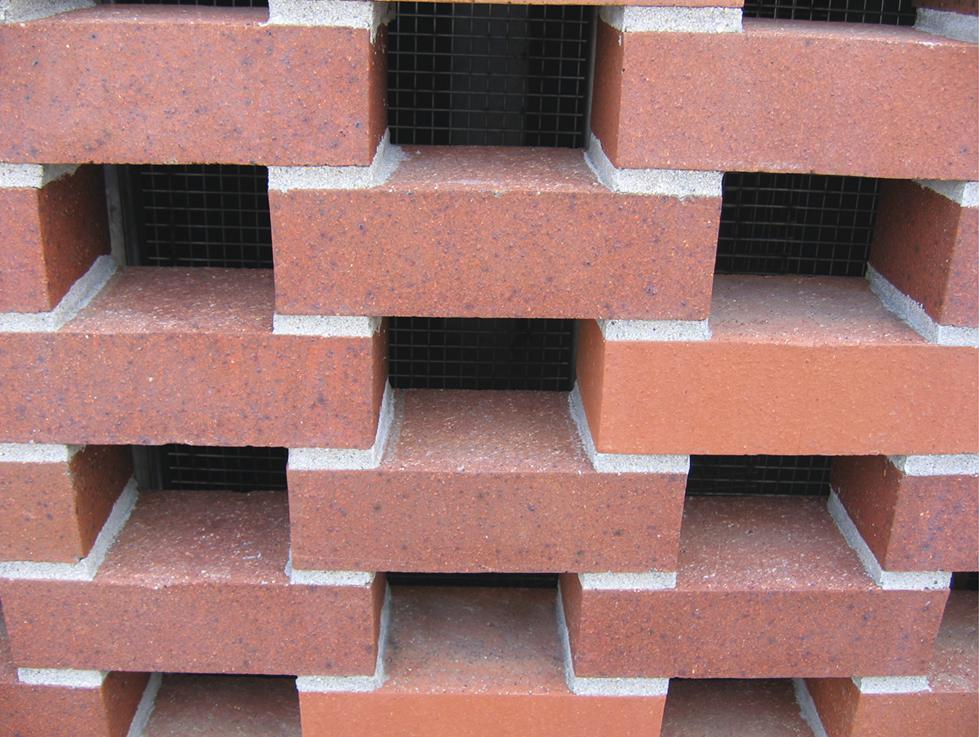
STRUCTURE magazine 14
Figure 2 Screen pattern with solid clay units
Durability. Unlike traditional brick masonry veneer, the perforated brickwork openings expose the brick units' multiple sides to the environment and allow water to accumulate on horizontal surfaces. Because of this increased exposure inherent to the system, the performance of the perforated veneer walls will be different from that of traditional brick masonry veneers. The risk of general deterioration and freeze-thaw damage is higher.
It is recommended to use solid brick without cores or frogs. Standard solid brick units conforming to ASTM C216 – Standard Specification for Facing Brick (Solid Masonry Units Made from Clay or Shale) are permitted to have up to 25% cores, so units without cores or frogs must be explicitly specified. Use of cored units in perforated brickwork has been successful, but generally in more southern climates, where the risk of freeze-thaw is low.
ASTM C902 – Standard Specification for Pedestrian and Light Traffic Paving Brick has minimum requirements for strength and cold water absorption that exceed those required for units meeting ASTM C216 Grade SW due to their use in horizontal applications. Selecting bricks that meet these more stringent requirements can provide additional durability in the more severe exposure of perforated brickwork.
If special-shaped units are feasible on the project, consider units with sloped top surfaces and drip grooves at the underside to reduce the potential for ponding water on the horizontal surfaces. Some manufacturers sell special-shaped units with oversized cores at the unit ends for reinforcing but uncored in the center. Special-shaped units can also be used in the adjacent solid sections to create internal space for reinforcing and grout while maintaining the appearance of the exterior. With respect to other considerations to increase durability, polymer-modified mortar is an option to improve the durability of the mortar, but be aware that its use requires more care because of the difficulty of removing polymer-modified mortar smears from brick faces. Consider specifying stainless steel for veneer ties and horizontal joint reinforcement instead of galvanized steel. If desired, a postapplied breathable water repellent can be considered.




Closing
Perforated brickwork has a long history of successful use in many countries worldwide; however, the incorporation of perforated brickwork into anchored brick veneer is a relatively new variation of this concept.
As the masonry industry continues to develop formal guidance on the design of perforated brick veneer, the alternative design provisions in the code allow engineers the latitude to achieve the design intent. The information presented here can provide some guidance to engineers in the meantime.■








































Full references are included in the online version of the article at STRUCTUREmag.org








PRODUCING LOW EMBODIED CARBON CEMENT SINCE THE 1960s




























Reduce GWP of concrete mix designs using CSA cements


































































Lower CO2-eq per metric ton

Reduced emissions from raw materials








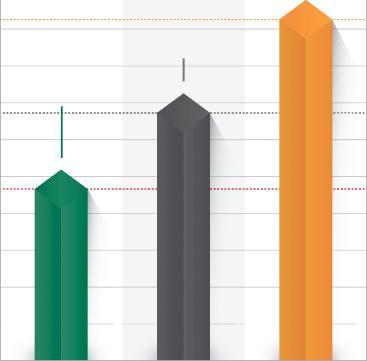
Fewer natural resources consumed
Reduce energy consumption

Meets GSA’s definition of top 20% of low embodied carbon (LEC) cement































EPDs available

SEPTEMBER 2023 15
Global Warming Potential (kg CO2e/mertric ton) 1000 Komponent® 50% Less Rapid Set® Cement Industry Average Portland Cement 461 673 922 900 800 700 600 500 400 300 200 0 100 27% Less
Cortney Fried is a Managing Senior Engineer at the Brick Industry Association (BIA) (cfried@bia.org)
Learn more about Rapid Set Cement’s role in lowembodied-carbon concrete. by
SUSTAINABLE SOLUTION PROVEN FOR REDUCED GLOBAL WARMING POTENTIAL CTScement.com 800.929.3030 ADVERTISEMENT–For Advertiser Information, visit STRUCTUREmag.org
CTS Cement Manufacturing Corp
structural MAINTENANCE
Concrete Defects and Preventive Maintenance
How preventative maintenance can prolong the concrete structure life, preserve integrity, and reduce repair cost.
By Ahmed Clayiff, P.E., CBSI
Concrete construction offers inherent benefits, such as resilience, durability, and strength. However, those benefits are dependent on the quality control of placing concrete during construction and the maintenance during its service life. During construction, concrete’s quality depends on the care taken during mixing the ingredients, handling, and curing the fresh concrete.
What is Concrete?
Concrete consists of a mixture of cement, sand, aggregate, and water; additional chemical substances, called admixtures, can be added to accommodate a specific need for a design application. The primary functionality of admixture is to change the properties of concrete to make it more workable, inhibit corrosion, and achieve higher strength or other improvements.
After all the ingredients are mixed, the concrete will be poured (placed) into forms with properly positioned conventional or prestressed steel reinforcement. Conventional reinforced concrete is constructed with non-prestressed steel reinforcement (i.e., reinforcing bars or welded wire fabric). Prestressed concrete contains high-strength reinforcement (i.e., bars, wires, or strands), which can be either pre-tensioned or post-tensioned. The pre-tensioning process consists of pre-tensioning the reinforcement to a desired stress level before pouring the fresh concrete. The post-tensioning process consists of placing the concrete before the reinforcement is tensioned. The reinforcement is placed inside a conduit or coated with a lubricant to prevent it from bonding with concrete. After the concrete is poured and reaches optimum strength, the reinforcement is post-tensioned to the desired stresses. During the process of concrete mixing, handling, and curing, the following precautions should be taken to achieve the desired concrete quality,
A- Mixing and Handling
• Accurate mix ingredients proportions.
• Adequate mixing.
• Appropriate delivery time to avoid segregation.
• Vibrating to reduce excess entrapped air to avoid poor consolidation.
• Sampling and testing
B- Reinforcement details.
• Maintain a proper clear cover of reinforcement.
• Maintain adequate reinforcement spacing.
• Adhere to design documents and specifications.
What Is Concrete Curing?
The process begins after the fresh concrete is placed into the forms and hydration begins at the appropriate temperature. The hydration process should be controlled to retain moisture within the concrete and avoid rapid temperature changes. As the hydration process continues, the concrete properties will change, and the concrete strength will increase over time (see Figure 1). Other improvements during the hydration process are the property changes (i.e., increase resistance to abrasion resistance, improved water tightness, etc.). A defective curing process may impair the concrete quality significantly. For
example, placing the concrete in an environment with high temperature and low humidity may cause rapid water loss or fast evaporation. The rapid water loss will result in quick concrete volume changes at an early age and may lead to cracks. Cracks are unfavorable results that can immediately be a significant issue for structures that store liquids and chemicals. Other problems that increase over the structure’s lifetime are discussed in the following concrete defects section.
The concrete quality depends on the concrete ingredients’ mix proportions and the means and methods of mixing and handling. Better quality can be achieved by implementing an effective plan for quality assurance and quality control (QA/QC), including workmanship, inspection, sampling, and laboratory testing.
Concrete Defects
During or after the concrete placement.
• Cracking: This may result during the curing process or at other times during the structure’s lifetime. During the structure’s lifetime, the gradient changes between low and high temperatures may result in cracking. For example, an expansion typically occurs during the summer, and a contraction typically occurs during the winter. These phenomena are the main causes of cracks in concrete. Other cracks may result from loading that exceeds the structural capacity, resulting in overstresses such as shear, flexure, or torsion.
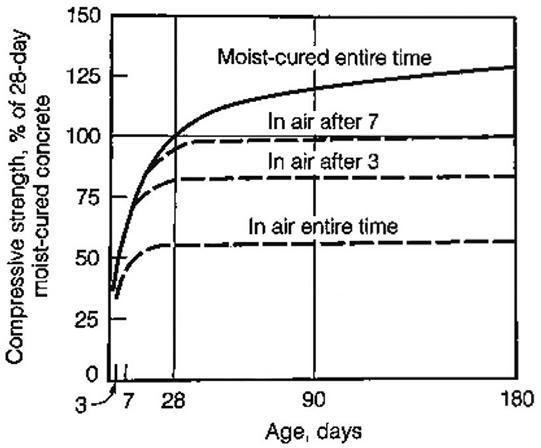
• Honeycombs: This results from poor consolidation, such as a lack of vibration while placing the concrete. Proper vibration is needed to reduce excessive entrapped air. Excessive air leads to voids that increases permeability, exposes the reinforcement, and reduces the strength of the concrete.
• Spalling: This may result from excessive loading and poor bonding, resulting in a member separating a shell or a section. Other causes during the service life may include deterioration (weathering) and corrosion of reinforcing steel.
STRUCTURE magazine 16
Figure 1 Compressive strength of concrete at different ages and curing levels by Michaels Mamlouk – John P. Zaniewski
During the service life - deterioration.
• Efflorescence: Crystalline, white material that appears on the surface of the concrete (see Figure 2). It results from water penetrating the cracks over time, and a chemical reaction occurs with the cement paste leaching out to the surface.
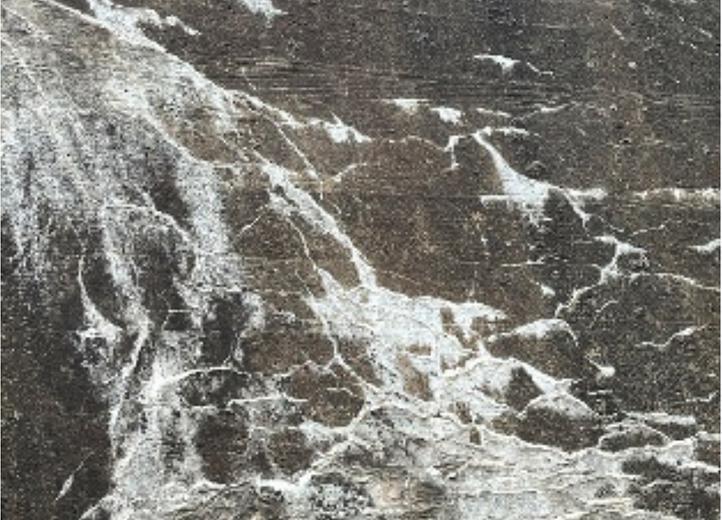
• Freeze-thaw failure occurs when the water penetrates the voids, pores, or cracks and freezes at low temperatures. As water freezes within the concrete voids it increases in volume and induces forces inside the concrete, propagating the crack size, and may lead to spalling.

• Scaling occurs when a concrete surface breaks down, or erodes, exposing the aggregates.
• Delamination occurs where cracks and splits are generated parallel to the surface, caused by overloading and/or corrosion of steel reinforcement. These defects are aesthetically unpleasant and in many cases jeopardize the structural integrity of the reinforced concrete member. For example, corroded reinforcement can reduce the cross-sectional area of the member, expose the steel reinforcement to corrosive element and break off the concrete cover (see Figure 3). The cross-sectional area reduction of reinforcement can be visually seen when it expands or becomes smaller. Not all defects can be visually seen; in many cases, specific testing with a thorough inspection program is required to detect those defects. Other defects not discussed in this article that result from utilization include tears and chemical attacks such as chloride and sulfate. How do we avoid those defects and reduce their impact? Those can be avoided by implementing the program below.
Preventative Maintenance
All those defects are structural and safety concerns, and it should be the priority of the structure’s owner to implement an effective process to ensure those are addressed and avoided. The process should consist of routine inspection and maintenance to prolong the structure’s life. The routine inspection is an evaluation process of the entire structure to identify potential and existing defects. Defect findings should be presented with a condition rating system such as (good, fair, and poor) and maintenance priority (immediate or routine). Preventive maintenance offers several critical benefits to the property owner, not limited to structures in poor condition; it also applies to structures in good condition (Figure 4).
The most crucial benefit is maintaining safety and structural integrity; this is achieved by preserving functionality, strength, and stability. An alternate advantage is that less effort is required to address an issue or
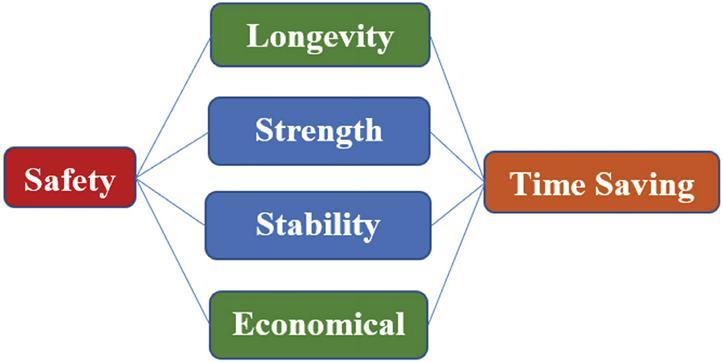
defects early in the process and prevent it from worsening its condition. For example, cracks are an issue but can be prevented by sealing them prior to the water penetrating and corroding the reinforcement that propagates to a spall. Other minor efforts that will help avoid a significant structural issue are cleaning and ensuring the drainage system is functional. This will also prevent water ponding (water accumulation). Ponding clearly leads to water intrusion; it may also induce loads that exceed the structural capacity and lead to structural instability and failure.
Major repairs are not only a structural concern and higher cost but also interrupt functionality and inconvenience the occupants. Interruption occurs when a portion of the structure needs to be vacant during the repair process, such as temporary shoring. Temporary shoring is a structural support or frame designed to support the structure (partial/entire) and prevent it from collapsing until the repair is finished.
Therefore, preventative maintenance substantially benefits the property owner by maintaining safety and the structure’s expected life cycle. It will also be cost-effective as significantly high-cost repairs will be avoided, as well as offers better budget planning, maintains the structure’s aesthetic, and provides a reliable environment for the occupants.■
SEPTEMBER 2023 17
Figure 2 Concrete surface with Efflorescence.
Figure 3 Concrete surface spalling with corroded reinforcement.
Figure 4 Preventative maintenance benefits.
Full references are included in the online version of the article at STRUCTUREmag.org.
Ahmed Clayiff, P.E., CBSI, owns Clayiff Engineering, LLC. He has experience in various structural engineering areas. Mr. Clayiff is also an adjunct faculty and has taught various engineering courses. He can be reached at (aclayiff@clayiff.com)
structural FLEXIBILITY Deflections of Concrete Structures Using Bilinear Flexibility
By Neil Wexler, Ph.D., P.E., Hoonhee Jeoung, P.E., Nissim Elmann, P.E.
Deflection of concrete members follows a bilinear curvature, and it can be affected by many different variables. Concrete members are often internally reinforced and/or tensioned, come in different shapes, and vary with regards to the ingredients and additives in the concrete. Despite these variations, engineers generalized concrete behavior and the ACI Code adopted these general procedures, though difficulties remain. Some research reported discrepancies between actual results and code predicted deflections. The Branson and Bischoff equations are currently in use for calculating Ie, but in reality, they also require calculations of y- and Icr, making the calculations of deflections lengthy and time consuming. In addition, the most recent ACI Code procedure is still dependent on curve fitting rather than a scientific basis.
A new proposed method for calculating concrete deflections is presented herein; this method is based on the general bilinear flexibility of concrete under flexural stress. An earlier paper related to the specific deflections of high-rise concrete shear walls and using the bilinear flexibility method was authored by the two senior authors. In this work, the method is extended in a general way to concrete beams, plates, and to other structural materials.

Ie = effective moment of inertia, in4
Icr = moment of inertia of cracked section transformed to concrete, in4 y- = distance from extreme compression fiber to neutral axis, in
Background
Concrete cracks when subjected to tensile stresses that exceed the modulus of rupture. Since stresses along the beam span are not uniform, the degree of cracking is also non-uniform; more and larger flexural cracks occur at locations of higher flexural stresses. Therefore, a concrete beam even if initially prismatic, becomes non-prismatic when cracked.
The stress magnitude relative to the modulus of rupture is one indicator of flexibility; the larger the ratio, the more cracks cause more flexibility. The amount of longitudinal steel reinforcement is another indicator of flexibility; less rebar causes more flexibility.
Figure 1 shows a typical load deflection curvature for concrete reproduced from Reference 7; the flexibility is bilinear. Below cracking (Point C), gross section properties predict deflections reasonably. However, above cracking, gross properties no longer predict deflections accurately. The larger the spread between the applied load and the load at which cracks initiate, the larger the error. Point A is arbitrary, where the moment Ma is larger than the cracking moment Mcr . Figure 1 also shows the general impact of section geometry on flexural flexibility. Thus, for a given section, the most significant variables affecting flexibility are:
1. The load ratio - Mcr/Ma
2. The area of longitudinal flexural reinforcement.
Concrete deflections follow general accepted formats, but walls are stiffer than beams and stiffer than slabs, as shown in Figure 1.
Flexibilities
Considering the modulus of elasticity E, the product EI is an indication of flexural flexibility. In a cracked beam the value of I varies along the span of the beam: it is Ig where un-cracked and Icr where cracked. For a simply supported beam we focus our analysis on the section at the center of the beam where flexural stresses are the largest. Ie from Branson and Bischoff are shown below; in which they depend on y- and Icr, also shown below.
As can be seen, to obtain Ie we must first calculate y- then Icr
E = modulus of elasticity, psi
E
c = modulus of elasticity of concrete, psi
STRUCTURE magazine 18
Branson II M M I M M 1 eg a cr cr a cr 3 3 =+aakk;E (1) Bischoff I M M I I I 11 e a cr g cr cr 3 2 2 = c ^ c h m m (2)
Figure 1 Flexural load/deflection curvature for different geometric sections
Ig = moment of inertia of gross concrete section, in4
Figure 2 shows a bilinear stress-strain graph but includes a linear equivalent line as if the beam is prismatic, for both before and after cracking (in reality, a cracked beam is non-prismatic, as indicated earlier). The objective is to obtain the equivalent prismatic properties that can be used to predict accurate deflections. Note that concrete cracks at Point C, where stress is equal to v cr. But the goal is to obtain deflections at Point A and we do this directly by using Line 3.
In Figure 2, Line 1 shows the beam flexibility before cracking, Line 2 shows the beam flexibility after cracking, and Line 3 shows the equivalent prismatic flexibility.
Let’s define Ee = λEc, where λ is a coefficient to be calculated. va is the stress at Point A due to flexural loads and εa is the corresponding strain. The objective is to obtain λ as a function of other variables in triangle OAC.
Derivation
Working with triangle OAC in Figure 2, we obtain (see Ref. 3 for derivation):
simple and save time. They show the correct flexibility when loads exceed cracking without the need to evaluate three equations each time.
Determination of Flexibility Coefficient, n
Deflections of concrete structures are impacted by, among other things geometry, loads, and the quantity of reinforcement, as mentioned earlier. As a result, the value of n, is particular to each design case. This coefficient n may be determined using several possible methods, as follows:
1. Use an approximate n value.
2. Use an n value from tests and experiments.
Where 1/n represents the slope of the upper part of the bilinear graph as Line 2 in Figure 2; vcr is the cracking stress (for concrete); va represents flexural stress. Fy represents yield stress (for steel).
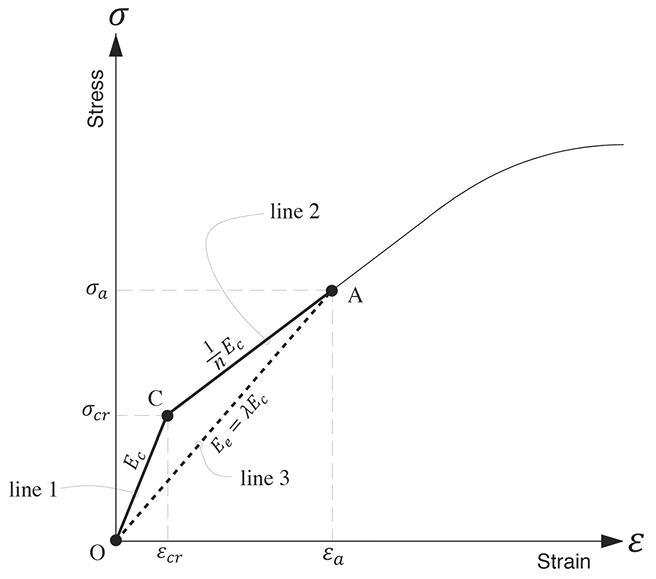
Equations (3), (4) and (5) are the Equations of Bilinear Flexibility and can be evaluated at any point along the beam span and the beam depth.
The ACI Code suggests specific values of n to calculate deflections but for lateral loads only. If Code values are to be used for gravity loads then n values need to be evaluated. ACI Code values at service loads are n = 3 for slabs, n = 2 for beams and cracked walls, but these values are to be used with lateral loads only.
It is instructional to note that λ =1 represents the case of uncracked concrete which occurs when n = 1 or, when va ≤ vcr or when Mcr/Ma > 1.0. When concrete is cracked Mcr /Ma < 1.0, n is greater than 1 and λ is less than 1.
Advantage of Bilinear Flexibility
The Equations of Bilinear Flexibility were developed herein using a method of substitution of bilinear properties with a single equivalent linear property. The variables needed are loads (moments or stresses) and the flexibility coefficient, n. These equations can be used for various concrete structures and materials. It is interesting to note that they are applicable not only for concrete but for all materials with dual flexibilities, including structural steel. They also have implications for seismic analyses, such as when demand exceeds the elastic strength of members and when structural loads get redistributed.
For an engineering office the new equations of bilinear flexibility are
3. Use n values from calibration with available tools, such as Branson or Bischoff.
SEPTEMBER 2023 19
λ nn 1 cr a a vv v = ^h (3) λ nn F F 1 1 a y = ^h (4) λ nn M M 1 1 a cr = ^h (5)
8” THICK SLAB Calculation of I cr for Different Reinforcement Configurations ρ nAs (in2) yˉ (in.) I cr (in4) .2% 1.3 1.1 48.2 .3% 2.0 1.3 68.7 .4% 2.6 1.5 87.7 .5% 3.3 1.7 105.6 .6% 3.9 1.8 122.4 .7% 4.6 1.9 138.5 .8% 5.3 2.0 153.8 .9% 5.9 2.1 168.4 1.0% 6.6 2.2 182.4 1.2% 7.9 2.4 208.9 1.4% 9.2 2.6 233.6 1.6% 10.5 2.7 256.6 1.8% 11.8 2.8 278.3 2.0% 13.2 2.9 298.8
Figure 2 Bilinear stress and strain diagram for beam deflection
Table 1 8” Slab – Coefficients to be used for determining
effective
moment of inertia (Ie)
Table 1 and Table 2 are used to obtain Figure 3 for an 8-inch-thick one-way flat concrete slab (f’c = 4,000 psi), and calibrated to Bischoff. Mcr /Ma were selected arbitrarily and Ie was calculated for different reinforcement ratios, from Bischoff. The value of n is calculated as below:

Proposed Procedure
1. Design one-way concrete slab and select steel reinforcement ρ = As /bd
2. Enter Figure 3 graph and write down values of n for Mcr/ Ma equaling 0.50 thru 0.95. This will establish the slope for Line 2 in the bilinear graph (Figure 2).
3. Obtain values of λ and Ie using Equations 3 thru 5 or Figure 3 graph.
Example
Determine Ie for an 8-inch one-way concrete slab with bottom steel reinforcement of #5 bars at 12ʺ o.c. The slab spans 18 feet and support 160 psf of total residential loads.
STRUCTURE magazine 20
n M M M M 1 1 a a cr cr m =a a k k (6) I I g e m = (7)
Solution: Mcr = 5.0ft − k Ma = 160 × 18 8 2 = 6.48ft k M M cr a = . 648 5 = 0.77 From Figure 3: ρ = 812 31 # × 100 = 0.32% M M a cr = 0.77 n = 4.8 λ = nn M M 1 1 483877 1 a cr # = - ^h = 0.53 Ie = 0.53 × 512 = 271.4 in4
M cr/M a = .50 M cr/M a = .75 M cr/M a = .85 M cr/M a = .95 ρ I cr I e (in4) λ n I e (in4) λ n I e (in4) λ n I e (in4) λ n .2% 48.2 106.20.21 8.6243.90.48 5.4333.00.65 4.6445.90.87 4.0 .3% 68.7 124.10.24 7.3255.70.50 5.0340.90.67 4.3448.80.88 3.8 .4% 87.7 140.70.27 6.3266.70.52 4.7348.30.68 4.1451.50.88 3.7 .5% 105.6156.40.31 5.5277.00.54 4.4355.20.69 3.9454.00.89 3.6 .6% 122.4171.10.33 5.0286.80.56 4.1361.70.71 3.8456.40.89 3.4 .7% 138.5185.20.36 4.5296.00.58 3.9367.90.72 3.6458.70.90 3.3 .8% 153.8198.50.39 4.2304.90.60 3.7373.80.73 3.5460.90.90 3.2 .9% 168.4211.30.41 3.8313.30.61 3.5379.40.74 3.3463.00.90 3.1 1.0% 182.4223.60.44 3.6321.50.63 3.4384.80.75 3.2465.00.91 3.0 1.2% 208.9246.80.48 3.1336.80.66 3.1395.00.77 3.0468.80.92 2.8 1.4% 233.6268.40.52 2.8351.00.69 2.8404.60.79 2.8472.30.92 2.7 1.6% 256.6288.50.56 2.5364.40.71 2.6413.50.81 2.6475.60.93 2.5 1.8% 278.3307.50.60 2.3376.90.74 2.4421.80.82 2.4478.70.93 2.4 2.0% 298.8325.50.64 2.1388.70.76 2.3429.70.84 2.3481.60.94 2.3
Figure 3 8” Slab - n values as a function of reinforcement ratio
Table 2 8Ó Slab Ð Calculated n values to be used for bilinear flexibility in Equation 5.
Conclusions
The method of Bilinear Flexibility is presented herein. In this procedure, Bilinear Flexibility is replaced with an equivalent single flexibility. A calibration method was used to obtain flexibility coefficients n.
ASDIP Structural Software
Phone: 407-284-9202
Email: support@asdipsoft.com
Web: www.asdipsoft.com
Product: ASDIP STEEL
Description: Intuitive software for the design of steel members and connections, such as composite/non-composite beams, steel columns, base plates, anchoring to concrete, shear connections, and moment connections, per the latest design codes. ASDIP STEEL includes 5 modules that substantially simplify the timeconsuming calculations of structural designs.
ENERCALC, LLC
Phone: 949-614-0689
Email: info@enercalc.com
Web: https://enercalc.com
Product: ENERCALC SEL / ENERCALC 3D
Description: Design of anchors and anchor bolts typically requires a thorough development of applied loads and possible analysis of full structures/ connected components. ENERCALC can help determine those loads & perform those analyses through its Loads & Forces module and its analysis and design modules. Clear, succinct reports represent your work well.
The equivalent single flexibility is obtained with the use of the equation of Bilinear Flexibility which converts n to λ. For accurate results, use appropriate n values, then calculate Ie using the general Equation of Bilinear Flexibility. This simple method is based on the first principles and, therefore, may be appropriate for adoption by building codes.
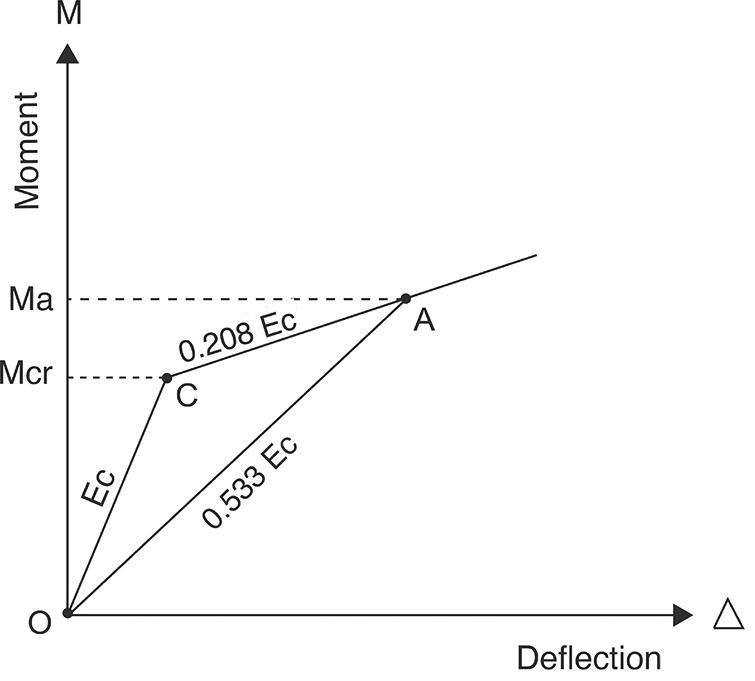
Future research may focus on the development of n-values considering different, concrete cross- sections, podiums, two-way slabs, etc. Additionally, this method can be used with other materials, and is applicable for post-elastic analyses.■
Full references are included in the online version of the article at STRUCTUREmag.org
Neil Wexler is the founder of Wexler Associates, a 39-year-old, New York City-based firm specializing in the design of high-rise concrete buildings. He received his BS from McGill University, Montreal, QC, Canada; his MS from City University of New York, NY; and his PhD from New York University, New York, NY, all in civil engineering.
Hoonhee Jeoung is a principal at Wexler Associates and a concrete design expert with more than 16 year of structural design experience in the fields of structural steel and concrete. He received his BS in civil engineering from the City University of New York and his MS also in civil engineering from New York University.
Nissim Elmann is an Associate at Wexler Associates and he has been with the firm for 8 years. Nissim currently lives in Miami where he manages Wexler’s Miami office. He received his Bachelor’s and Master’s degrees from NYU Tandon School of Engineering.
ANCHORguide
The Masonry Society
Phone: 303-939-9700
Email: info@masonrysociety.org
Web: masonrysociety.org
Product: TMS 402/602 - 2022
Description: Building Code Requirements and Specification for Masonry Structures. Contains TMS 402-22 (Building Code Requirements for Masonry Structures and TMS 602-22 Specification for Masonry Structures. Available in print, downloadable formats. Coming soon - subscription based convenience with additional enhanced features. Watch the TMS website for announcements.
RISA Technologies
Phone: 949-951-5815
Email: info@risa.com
Web: risa.com
Product: RISAConnection
Description: RISAConnection is at the cutting edge of next-generation connection design software and features full 3D visualization as well as expandable reports for every limit state. RISAConnection includes complete integration with RISA-3D and RISAFloor, as well as partner software packages such as Tekla Structures and Hilti Profis for anchorage design.
Trimble Inc

Phone: 770-426-5105
Email: tekla.us.marketing@gmail.com
Web: https://www.tekla.com/us
Product: Tekla Structural Designer
Description: Tekla Structural Designer allows you to seamlessly combine analysis and design into one easy and efficient single model-based process. For engineers working with concrete, the software offers unique interactive design capabilities for concrete beams, columns and walls, as well as reinforcement optimization for concrete slabs.
Williams Form Engineering Corp.
Phone: 616-866-0815
Email: williams@williamsform.com
Web: www.williamsform.com
Product: Anchor Systems
Description: Williams Form Engineering Corporation has been providing threaded steel bars and accessories for rock anchors, soil anchors, high capacity concrete anchors, micropiles, tie rods, tiebacks, strand anchors, hollow bar anchors, post tensioning systems, and concrete forming hardware systems in the construction industry for over 100 years.
Monthly 2023 Resource Guide forms are now available on our website. Not listed? STRUCTUREmag.org
SEPTEMBER 2023 21
Figure 4 Example flexural load/deflection curvature
Observations from the December 20, 2022, Ferndale Earthquake
By John A. Dal Pino,
Between Christmas and New Year’s, I led a small group from FTF Engineering on a long day trip to the California North Coast to learn from the December 20, 2022, 6.4 magnitude (Modified Mercalli Intensity VIII, Severe) Ferndale earthquake. Our goal was to visit Scotia, Rio Dell, Ferndale, Eureka, and anything else that caught our eye. For me, the goal was three-fold: first, to take the opportunity to personally learn something new from a “local” earthquake; secondly, to provide the FTF staff who joined me with their first opportunity to go on what is commonly called an “earthquake chase,” and thirdly, to share our experiences with the broader community in the hope that seismic hazard mitigation will be once again placed in prominent view. Based on the first press reports, my expectations for learning about building types we design today were low. Still, I have come to understand that in any situation there are always a few nuggets to be found if you look or think hard enough. If you can do what we did after a future earthquake, or any similar natural hazard event, I strongly recommend it. Seeing something up close in the context of the local building inventory and how buildings are or have been generally constructed informs the observer in a way that photographs from recent or long past earthquakes cannot. I assume that engineers in other parts of the country do their own “chasing” after damaging windstorms, floods, fires, or snowfalls. Their experiences do not seem to be as well documented or widely published as for earthquakes, but I wish it were otherwise.
Background
First, I want to provide an overview description of the typical construction, the regional seismicity, and what our team observed. The North Coast is a large redwood forest stretching north-south from a few hours north of San Francisco to the California-Oregon border and east-west from the coast to the north-south center line of California (roughly Interstate 5). The primary industry has always been and will probably remain lumber. Most buildings are therefore constructed from wood. The local population is largely employed in some aspect of the lumber industry or commerce related to and sustained by the redwood forest, mainly tourism. Except for institutional buildings (hospitals, police stations, telephone exchanges, and so on) and a sprinkling of newer apartment buildings in Eureka (the largest city and main population center), most of the buildings are one and two-story stick-framed or heavy timber structures. Besides Eureka, the next largest city is Ferndale, followed by the smaller towns of Scotia, Rio Dell, Fortuna, and Petrolia. Some of the banking, commercial, and residential buildings in each city are in the grand Victorian style, particularly in Ferndale, dating to the late 1800s (considered old in California). The dairy industry is also significant in the local economy.
According to the USGS, the area is the most seismically active in California. There have been 40 or so earthquakes over Magnitude 6 in the last 100 years. Most of us know about the “ring of fire,” that tectonic plate boundary circling the Pacific Ocean. The plate boundary along most of coastal California is the famous strike-slip San Andreas fault, see Figure 1. But the part of the ring starting roughly at and running northward from the Oregon-California border is the Cascadia Subduction Zone (thrust fault), where the Pacific plate dips under the North American plate. The melting of the Pacific plate is responsible for the string of volcanoes that start with Mt. Shasta (roughly due east of the Mendocino area) and end with Mt. Rainer near Seattle. Since I won’t pretend to be a seismologist, let’s just say that the location of the transition area, called the Mendocino Triple Junction (where the San Andreas, Cascadia, and the part caught in the middle called the Mendocino Fracture Zone collide) is seismically complicated.
For a bit of recent history, on April 25, 1992, there was a 7.2 magnitude (maximum Modified Mercalli Intensity IX, Violent) earthquake with an epicenter near the small town of Petrolia, located
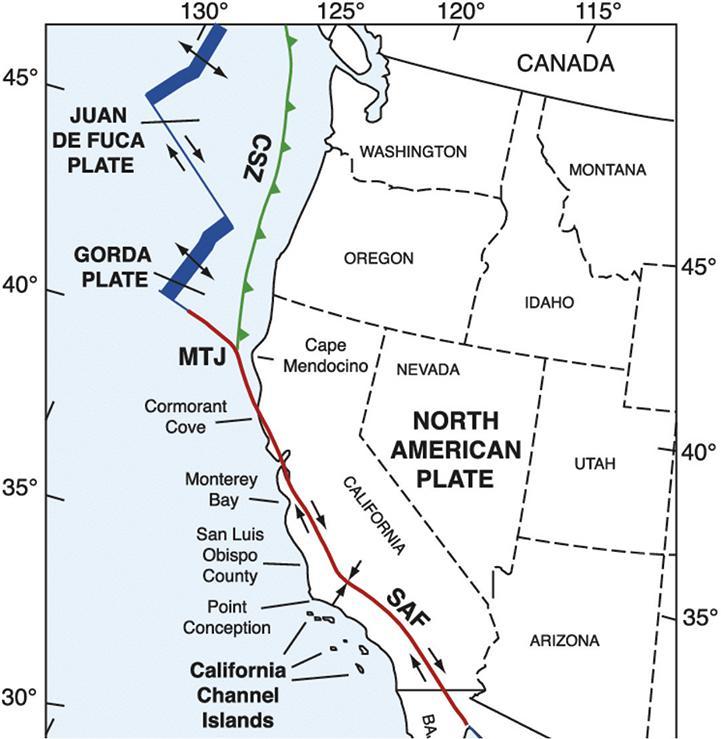
STRUCTURE magazine 22
INFOCUS
Figure 1 Courtesy of Tectonic setting of western North America (simplified from Drummond (1981) and Simkin et al. (2006)). SAF, San Andreas Fault; MTJ, Mendocino Triple Junction; CSZ, Cascadia Subduction Zone.
with assistance from Claire Hu, Elizabeth Bognar, and Hongxun Yang
south and west of Ferndale. The main event was followed the next day by two large aftershocks measuring M6.5 and M6.6 on the Richter scale. The total number of aftershocks that followed the main event exceeded 2,000. I visited the area following the earthquake and observed significant damage in Scotia, Petrolia, and Ferndale. The geologic and site soil conditions always play an essential role in the severity of the ground shaking and any resulting earthquake damage. For non-engineers and earthquake-chasing engineers, it is important to remember that buildings founded on rock generally perform better than those founded on softer and deeper softer soils. This is because these soils magnify the ground motions that buildings “feel.” The mouth of the Eel River, where this earthquake produced the most damage, is in a broad alluvial plain with a deep soil profile (triangularly-shaped pale-yellow area in Figure 2). Ferndale is located on the south side of the alluvial plain, while Rio Dell and Scotia are situated near the east end. Eureka, to the north and southeast of Arcata Bay, has similar soil.
Our Earthquake Chase
Before the trip, we visited the California Strong Motion Instrumentation Program (CSMIP) website and downloaded ground motion and instrumented building data to focus our attention so we could make the most of our trip. CSMIP has placed accelerometers (free field and on buildings) across California so researchers can link observed earthquake damage with the recorded local earthquake ground motions (accelerations, velocities, and displacements). With the recorded data,
structural engineers can gauge whether the building codes and standards are targeted properly (too lax or too stringent) at the specific goal of life-safety in all but the most vigorous possible earthquakes. Without the earthquake data, engineers can learn from the observed damage, but like in a car crash, one cannot learn much from the result if the car’s speed is unknown.
The USGS has stated that the recent earthquake occurred in the Mendocino Fracture Zone on a horizontal planar fault. The USGS ShakeMap for the area is shown in Figure 3.
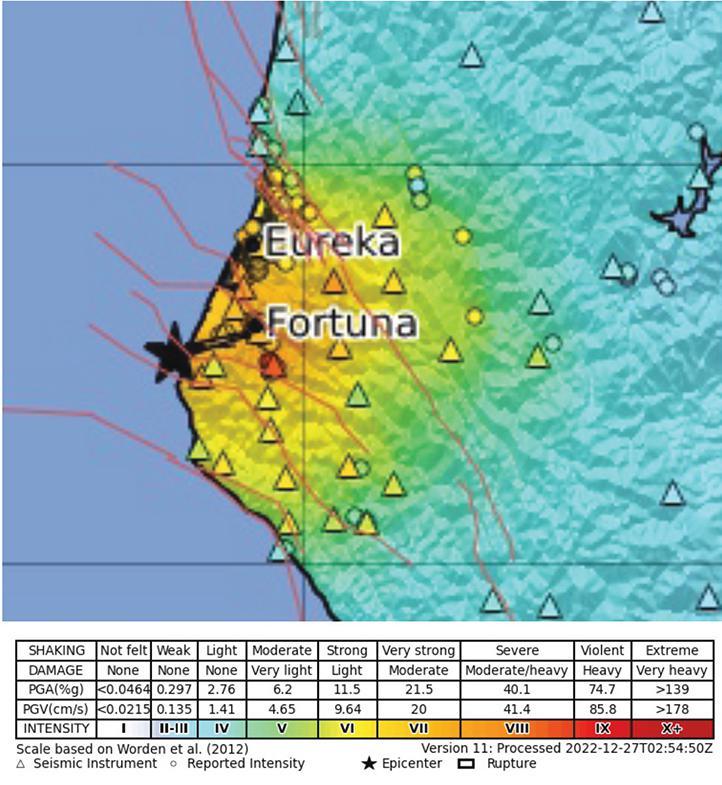
Scotia
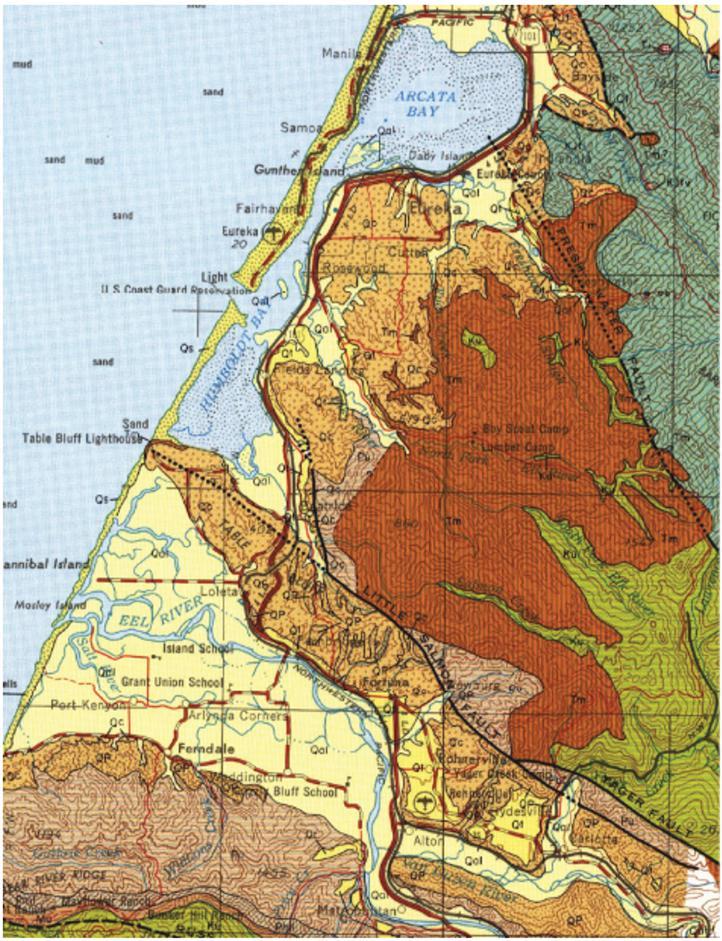
We started the day in Scotia (population approximately 1,000). The town’s residential buildings experienced significant damage in 1992, and I wanted to see how they fared this time. Scotia was constructed as a “company town” for the Pacific Lumber Company, with many modest one-story wood homes for workers in the local mill. These buildings are typically elevated above grade, with the first floor supported on wood posts on small concrete footings. The crawl spaces are enclosed with spaced vertical sheathing to allow for ventilation since it rains a lot on the North Coast. The crawl spaces were not braced or minimally braced, creating a soft/weak story condition, and in the 1992 earthquake, many of these homes experienced a collapse in the crawl space. The Scotia homes represent traditional California construction before the advent of concrete slab-on-grade construction, which is predominately used today in mass-produced tract homes.
During our recent visit, we can happily report that we saw no collapses or significant damage. We observed that many buildings had been retrofitted with diagonal wood bracing or are now supported on continuous concrete footings with the plywood sheathing used to brace the crawl space. No doubt a success story for seismic retrofit. We could not find any ground motion data to judge the extent of the success, but a win is a win.
SEPTEMBER 2023 23
Figure 2 Geologic Map. Courtesy of State of California, Department of Conservation.
Figure 3 ShakeMap. Courtesy of USGS.
Rio Dell
Just over the Eel River, one mile north of Scotia, is the town of Rio Dell (population approximately 3,400). Rio Dell is a modest community of small, mostly one-story homes, with a few commercial buildings along the main street (Wildwood Avenue), an elementary and middle school, and so on. Rio Dell experienced the most damage we observed on our trip. CSMIP records indicated an
Sa at the one second of 0.5g to 0.75g, which is roughly the design force the California Building Code requires for structures in the San Francisco Bay Area that are not located near very active faults. The design requirements for new local buildings are higher, with 2.07g in the 0.3-second period and 1.2g in the one second.
The damage consisted of the following:
i. Houses off foundations and failures of house foundations
ii. Collapse of residential porch covers

iii. Mobile homes off supports
iv. Fallen chimneys
v. Minor structural damage
The damage we observed could have been easily prevented with modest retrofits like those we observed in Scotia. We spoke with a few residents who told us they lacked earthquake insurance because of the high cost (approximately $1,500 per year). It seemed clear that many residents also probably lacked the financial means to make significant home investments. According to the 2000 census, the median household income in Rio Dell was roughly $30,000, with approximately 25% of the population living below the poverty line.
On Painter Street, we observed two nearly identical adjacent homes, one with a retrofitted cripple wall crawl space and one without (see Figures 4, 5A, and 5B respectively). According to the Zillow website, the asking price for similar homes was approximately $330,000.
Also, on Painter Street, we observed a home with no apparent damage other than a badly cracked, unreinforced concrete foundation. We are all too aware of the risk associated with unreinforced brick masonry foundations, but low-strength concrete foundations appear to be not much better (see Figures 6A and 6B). The homeowner told us that a contractor had estimated the repair cost at $35,000. Again, using Zillow data, the house value would fall in the $200,000 to $250,000 range. With a 15% deductible based on replacement value for a California Earthquake Authority (CEA) insurance policy, the damage may not be covered or only minimally covered by insurance.
We also spoke with the owner of the now famous home (because of front-page newspaper coverage) on Wildwood Avenue with the collapsed front porch cover (see Figures 7A before and 7B after). He told us that in the 1992 earthquake, the chimney had collapsed and crushed a nearby car. The firebox portion was retained and suffered no damage in the recent earthquake.
The owner invited us inside to have a look around. We could see that the house had been shaken vigorously, resulting in lots of narrow cracks and joint separations. He told us that many items had fallen from shelves. Upon close inspection of the exterior, we could see that the porch cover had been only minimally attached to the exterior wood sheathing. A nominal investment in improving the attachment to the house would have eliminated this significant life-safety hazard.
We observed two chimney collapses, one on an older residential structure on Davis Street close to the Eel River (see Figures 8A, 8B, and 8C) and one at a church on Belleview Avenue (see Figure 9).

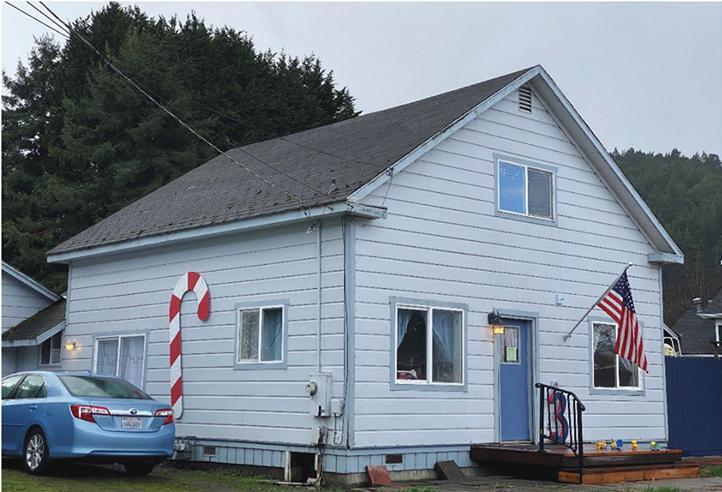
The Davis Street chimney was very tall, apparently much newer than the house itself, and maybe reinforced. It was minimally attached to the structure and was destined to collapse in an earthquake since the house would not have had the lateral strength to support the chimney.
At the Belleview Avenue location, the chimney was more modern, shorter, and of reinforced CMU block construction. In the debris pile, we saw the reinforcement and straps used to attach it to the structure. But it fell too.
STRUCTURE magazine 24
Figure 4 House on Painter Street with a retrofitted cripple wall crawl space.
Figure 5A and B House on Painter Street without a retrofitted cripple wall crawl space.
I think it is safe to say that brick chimneys are generally a bad idea for wood buildings. Unless they are designed to be self-supporting, they ought to be removed and replaced with lightweight construction (exterior wood box, triple insulated stainless steel flue, and metal firebox).
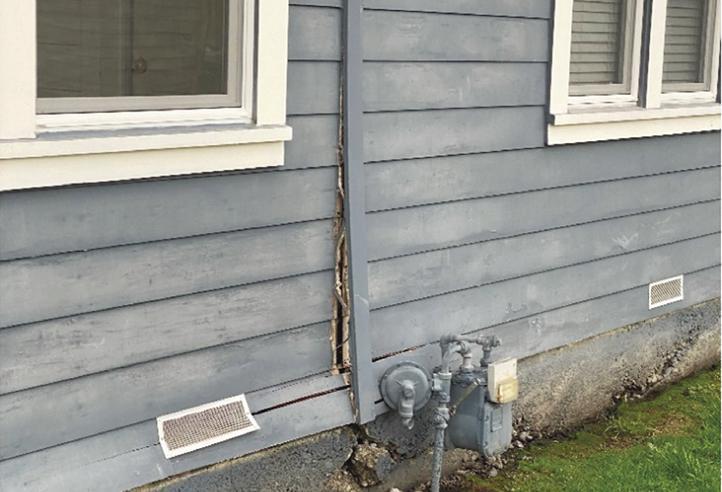
In a testament to the superior performance of reasonably welldesigned wood construction, we observed very little damage of a structural nature in Rio Dell. While observing the emergency
support services offered at the elementary/middle school on Center Street, we stumbled upon a Napa Auto Parts store and an adjacent former commercial building that was currently part of the school (see Figures 10A and 10B). Before the earthquake, the large plate glass windows had been covered with thin wood panels (we suspect to conceal the storage inside), which were nailed in place with tiny, brad-type nails. During the earthquake, the plate glass broke, the wood panels were loosened with the nails pulling out, and finally, the narrow wall piers resisted the lateral load. The wall piers sustained base rotation and cracked the stucco. We suspect that there were no seismic holddown anchors.
Though obviously not of major significance in the grand scheme of structural engineering, the sequential nature of the structural response was instructive; namely that in smaller events, all of the elements capable of resisting lateral forces (structural and nonstructural) will do so, but in increasingly larger events, eventually, it is up to the engineered structural elements to do the heavy lifting.
Ferndale
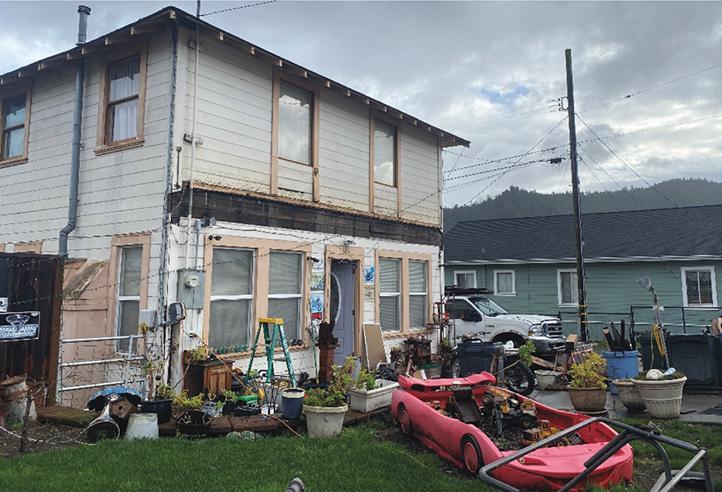
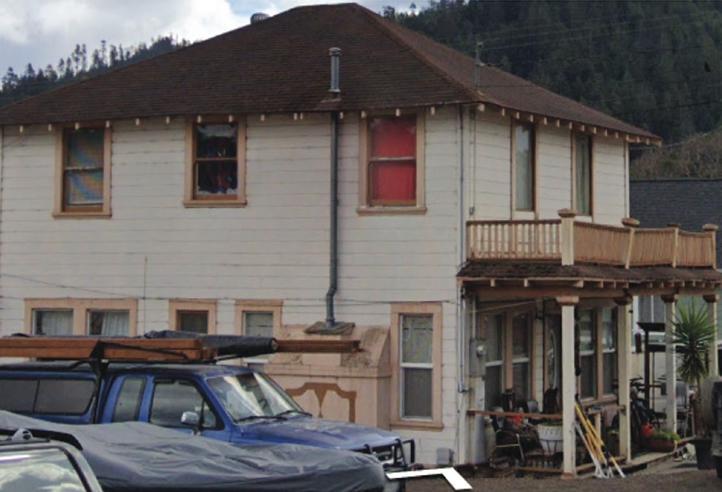

Next up was Ferndale (population of approximately 1,400). The highway bridge over the Eel River appeared damaged at the abutments. Myers Construction, the specialty contractor often used by Caltrans for the contractor’s ability to accomplish significant tasks quickly, was on the scene. It would have taken more time than we could afford that day to get access, so we decided to skip it but continue to monitor the situation and may report later.
Like Scotia, we can happily report that we saw no signs of significant structural and non-structural damage in Ferndale, except for a few broken windows on the main downtown street. CSMIP records at the Ferndale Fire Station indicated a Sa of 0.73g at the 0.3-second period and 0.4g at the one-second period, which is roughly 75% of the design force the California Building Code requires for the design of new structures in the San Francisco Bay Area not located near very active faults. There was extensive damage in Ferndale in the 1992 event, but the repaired residential buildings performed well. As mentioned above, Ferndale has a large inventory of grand Victorian-style construction dating to the late 1880s; see Figures 11A, 11B, and 11C. The commercial buildings are mostly on Main Street, and the residential buildings are located mostly in an adjacent neighborhood to the south and east. Many of the businesses
SEPTEMBER 2023 25
Figure 6A and B House on Painter Street with a badly cracked, unreinforced concrete foundation.
Figure 7B House on Wildwood Avenue after, with the collapsed front porch cover.
Figure 7A House on Wildwood Avenue before. Courtesy of Google Street View.
on Main Street were closed for the holidays, so we could not determine the extent of strengthening. However, except for the broken glass, it was difficult to detect signs that a major earthquake had recently occurred. We did not observe modern steel frames and such commonly employed to stiffen the storefronts of commercial buildings. We decided to further investigate the local retrofit ordinances and past retrofit work.
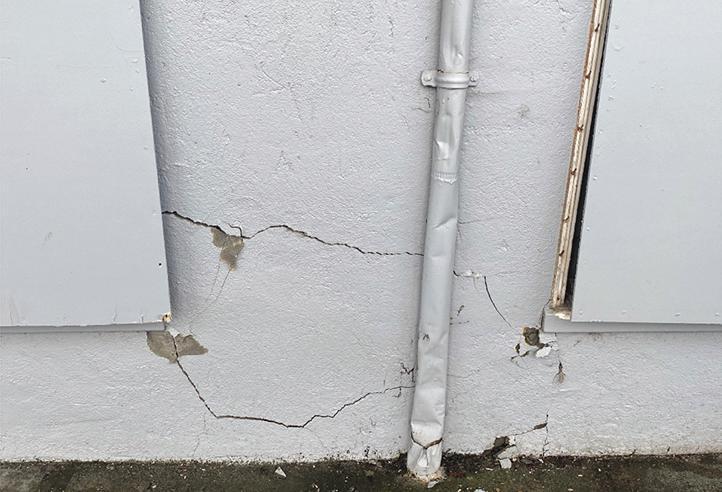
Our final stop was Eureka (a population of approximately 27,000). Based on the press reports, we did not expect to observe much damage. Still, we were intrigued by CSMIP records showing strong ground motions at the instrumented four-story Providence St. Joseph Hospital on Dolbeer Street, and the five-story Silvercrest Senior Housing building on Tydd Street. Both are located on the bluff east of the downtown with firmer soils than in the downtown below on the Eel River floodplain.
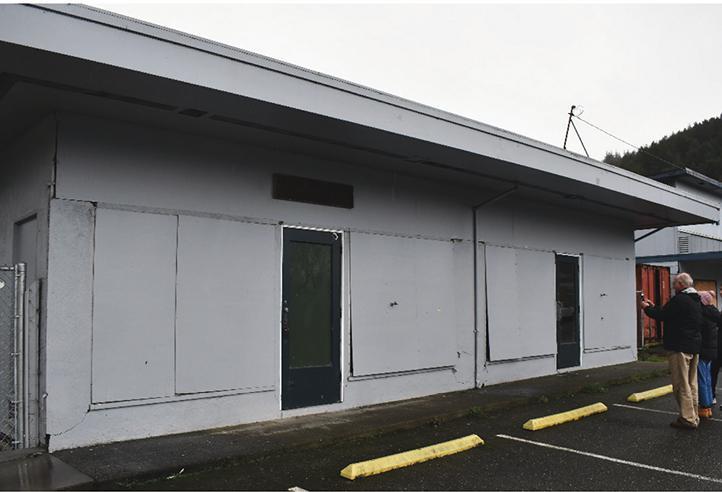
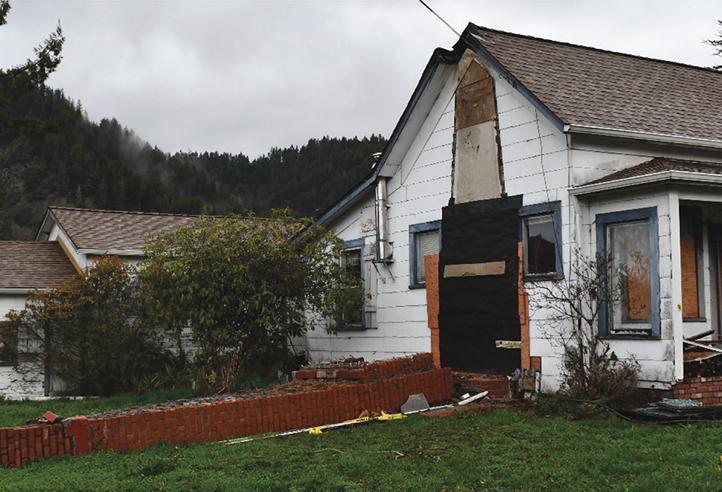
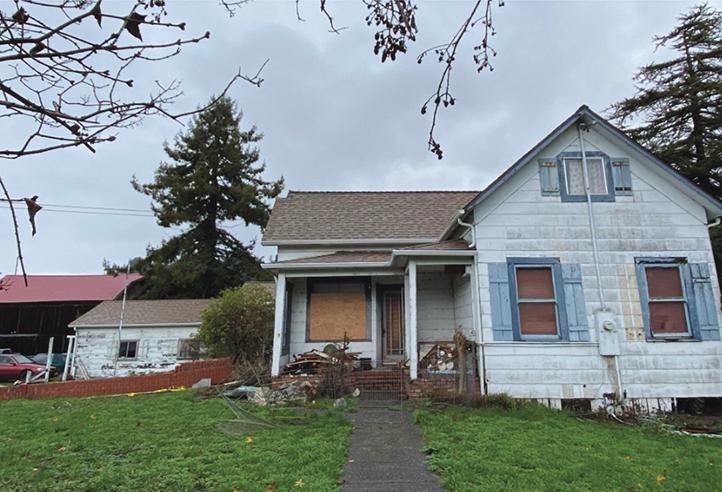
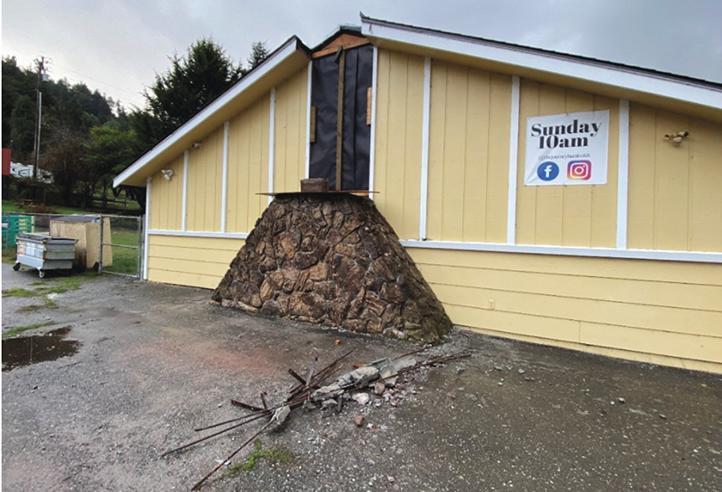
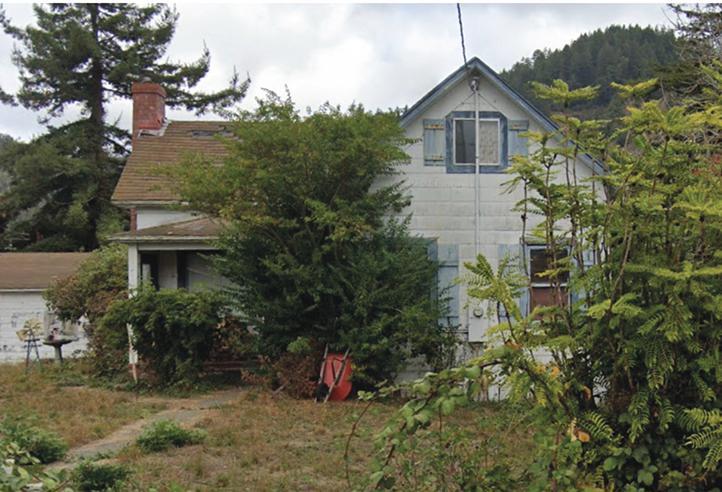
STRUCTURE magazine 26
Eureka
Figure 9 Bellevue Avenue -- After.
Figure 8B Davis Street -- After.
Figure 8C Davis Street -- After.
Figure 8A Davis Street -- Before. Courtesy of Google Street View.
Figures 10A and B Damage to storage building.
CSMIP records at the hospital show a Sa of 0.464g at the 0.3 second period and 0.444g at the one second and the senior housing building with a Sa of 0.859g at the 0.3 second period and 0.239g at the one second period. The design ground motions are 2.27g at the 0.3-second period and 1.23g at one second. We did not observe any damage at either location.
The hospital has an older concrete building on the west and a newer braced-frame steel building on the east, see Figure 12. For the recorded
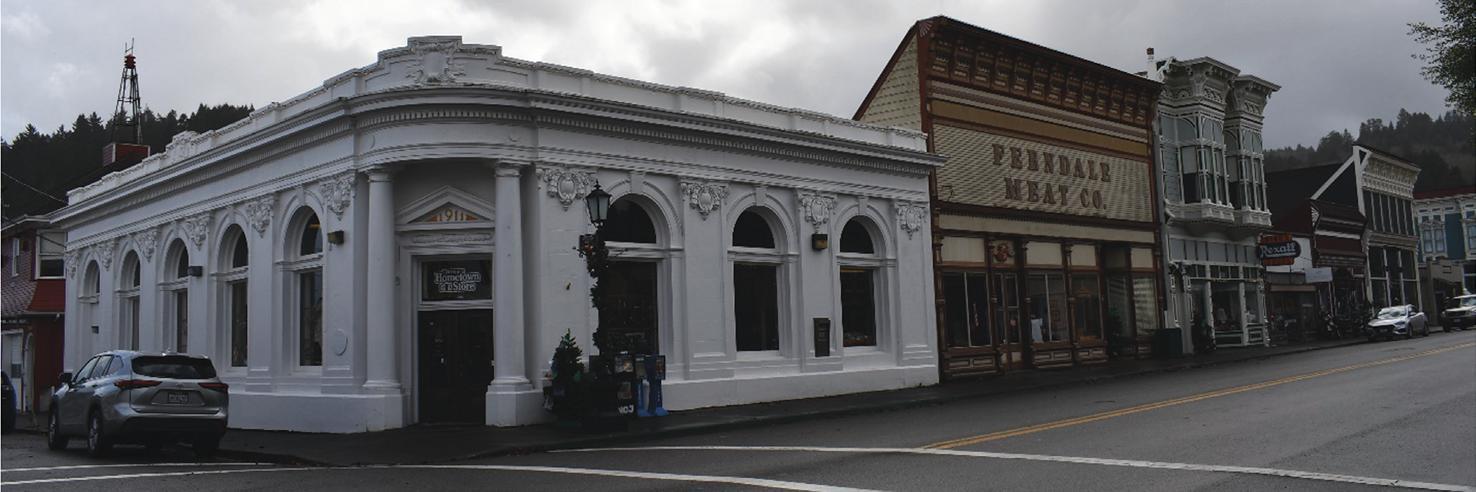
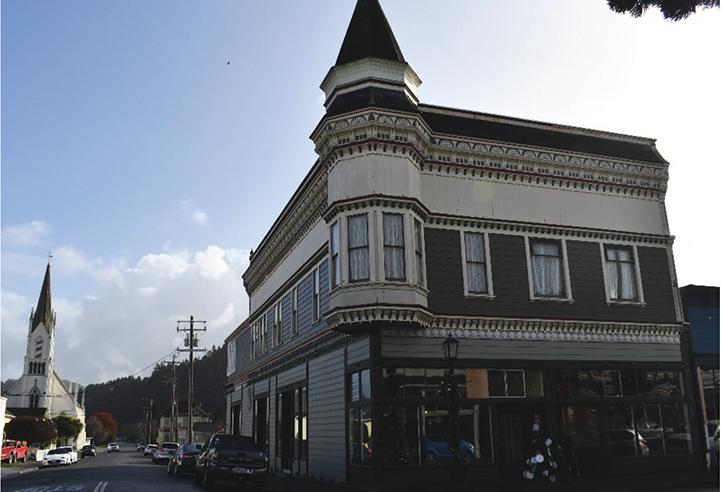
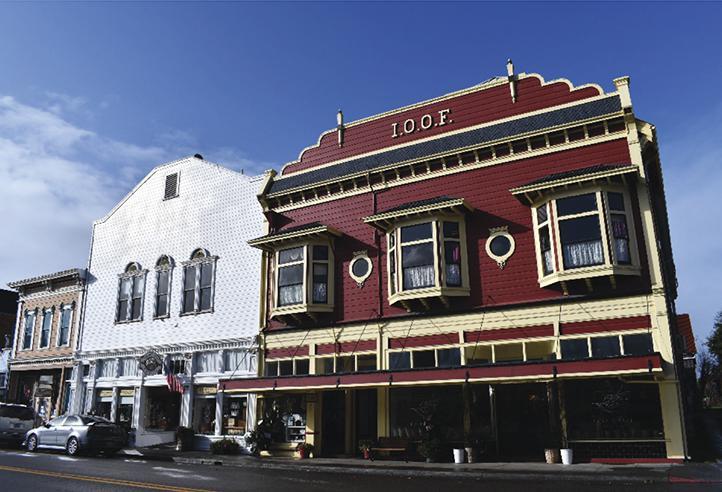
ground motions, we would not have expected any structural damage to the hospital. We also did not see the telltale signs of ongoing repairs to non-structural elements, such as plumbing systems.
The senior housing was a concrete flat plate building with concrete masonry unit (CMU) columns and flanged CMU shear walls, see Figures 13A and 13B. We walked the entire perimeter and observed no wall cracking.

SEPTEMBER 2023 27
Figure 11B Main Street -- Ferndale.
Figure 11C Main Street -- Ferndale.
Figure 12 Providence St. Joseph Hospital.
Figure 11A Main Street -- Ferndale.
Conclusions
Given our objectives, we judged the day as a successful learning experience for everyone. As I mentioned at the beginning, take the opportunity to go earthquake chasing if you can. You will likely learn something new. You will also meet the people directly affected by the natural disaster, observe how communities help displaced individuals, and gather your thoughts on how disaster recovery public policy should be crafted. Our engineering takeaways were:
i. Well-designed seismic retrofits targeting well-known vulnerabilities pay off handsomely. Financial assistance and incentives for retrofits in advance will lessen the impact on communities and improve resilience.

ii. Even moderately strong earthquakes have a way of pointing out to everyone seismic vulnerabilities that are in plain view of people who should know. Communities should encourage continuous mitigation, basically chipping away at a very long list needing attention, rather than waiting for a damaging event.
iii. Regarding protecting life safety, wood frame construction performs well in almost all instances, excepting for the commonly attached masonry chimneys which represent the most significant hazard and should be demolished and replaced in almost all situations.
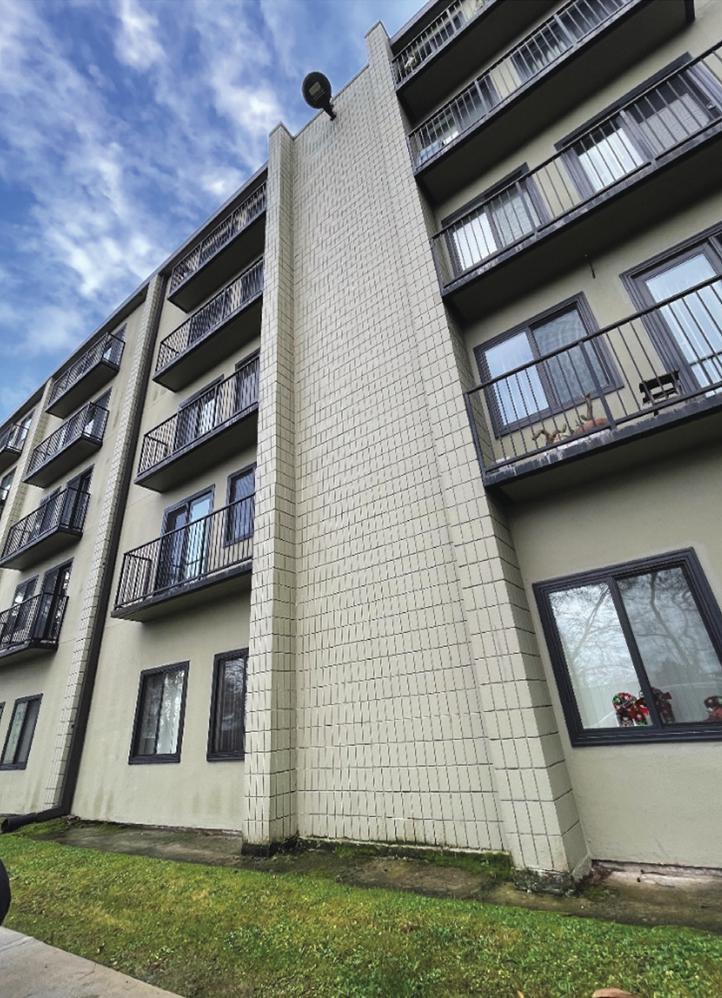
iv. Admittedly, based on a small sample size in one earthquake, funding from CEA-style 15% deductible insurance coverage may only be available for the largest earthquakes. The more financially prudent approach will likely be proactively retrofitting to address risks from moderately strong and lesser earthquakes. For code-compliant recently constructed homes or well-retrofitted older homes, the repair cost for even the largest earthquakes may be less than one might assume (a good thing). Still, insurance might be worthwhile if it helps to sleep at night.
v. There is a need for seismic vulnerability education and outreach to all populations, but particularly in economically challenged regions. Financial incentives or small investments of public monies to address the most basic of known earthquake hazards would yield great societal benefits.■
John A. Dal Pino is a Principal with Claremont Engineers, Inc. in Oakland, California, formerly with FTF Engineering. He serves as the Chair of the STRUCTURE Editorial Board (jdalpino@claremontengineers.com).
Claire Hu is a Project Engineer at FTF Engineering. Elizabeth Bognar is the SF office manager at FTF Engineering. Hongxun Yang was formerly at FTF Engineering.
STRUCTURE magazine 28
Figure 13A Senior Housing Complex.
Figure 13B Senior Housing Complex.
THE TRIFECTA OF EFFICIENCY
Making Podium Design Look Easy
The need for a straightforward, fully integrated solution for podium building design has never been greater. That's why engineers are excited about the benefits of using RISAFloor, RISA-3D and ADAPT-Builder together to create a more efficient podium design workflow.

THERMAL MONITORING
REAL-TIME, IN-SITU CONCRETE STRENGTH
OPTIMIZE SCHEDULE BY STRIPPING FORMWORK SOONER
AI STRENGTH PREDICTIONS
BASED ON SITE LOCATION
REAL TIME CONCRETE CURING DATA AND ACCURATE A PREDICTIONS VIEWABLE FROM ANY DEVICE


At the heart of the Signal System is the DEWALT Signal Concrete Sensor: our fully wireless, embeddable sensor that measures in-situ concrete temperature and strength data, uploading to cloud in real time via the DEWALT Signal Live Hub or periodically with the ConcreteDNA software
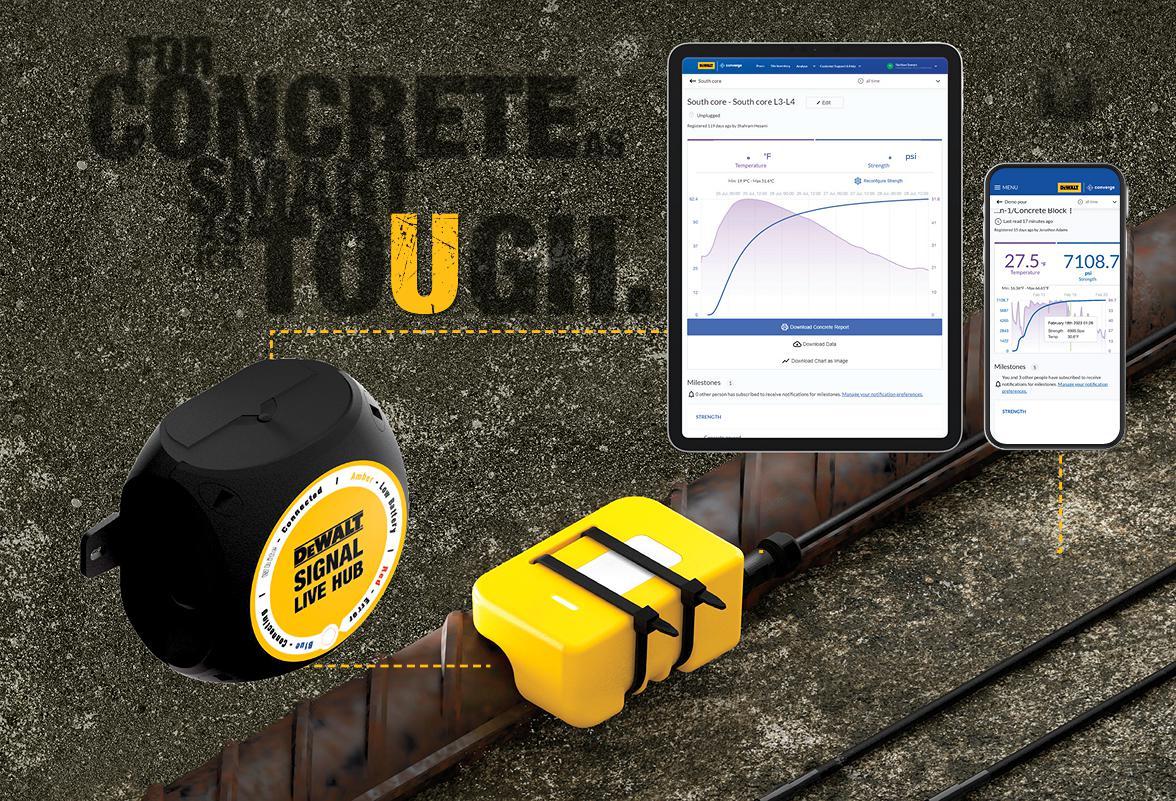
APPLICATIONS
Construction is a vast and diverse industry, with different sectors and project types requiring different applications of the same technology You'll find some of the main use cases of our technology and how it applies to you.
GET MORE INFORMATION AT
TEMPERATURE MONITORING FOR THERMAL CONTROL PLANS anchors/support-software/DEWALT concrete sensors.php
https://anchors.DEWALT.com/ anchors/support-software/DEWALT_ concrete_sensors.php
EMBEDDED SENSORS
CONCRETE MATURITY
DEWALT SIGNAL LIVE HUB
DEWALT SIGNAL CONCRETE SENSOR THERMAL TAILS
Post Tensioning Cast-In-Place Concrete
Copyright © 2023 DEWALT The follow ng ar
SENSORS FOR MATURITY AND MONITORING
KEY FEATURES AND BENEFITS
QUALITY ASSURANCE AND CONTROL
Temperature measured in real time and location, in conjunction with traditional quality methods, provides more accurate jobsite pour information
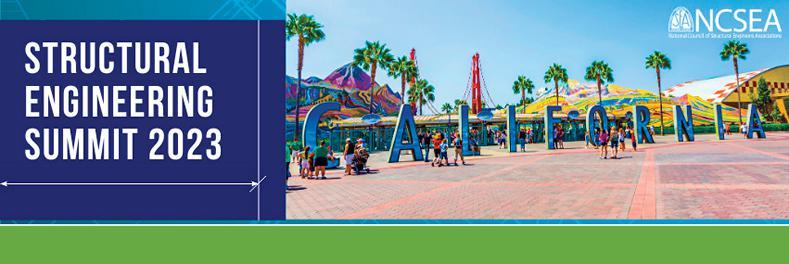
THERMAL CONTROL PLANS
Wireless technology automatically collects temperature from signal sensors
Temperature differentials are calculated and thresholds monitored in real time
FORM STRIPPING AND POST TENSIONING
Take action without delay and strip formwork up to 30% faster Real-time sensor data tells you precisely when concrete has reached critical strength
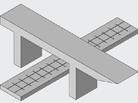
Set up notifications to alert your device when it's time to remove forms or pull tendons
REAL TIME DATA
Signal Live Hub allows for continuous data collection from embedded sensors
The smartphone application gives visibility to field teams for efficient decision making
AI PREDICTION
By combining local weather forecast, historical curing data, and real-time sensor measurements, DeWalt Signal Sensors enable your teams to plan like never before Thanks to +/- 5% prediction accuracy, sites run smoothly and projects are delivered to plan
NON COMPLIANCE RISK REDUCTION
The ConcreteDNA software centralizes and organizes strength data from all pours Project managers can then make informed decisions on time critical activities such as: tensioning, stripping, and loading
BLUETOOTH® AND 5G
DeWalt Signal Sensors are Bluetooth enabled and transmit data to the app on your smart device or the cellular hub, all backed up on the cloud No wires or external collection boxes to risk system damage or water ingress
OPTIMIZING MIX DESIGNS
Use your data to understand exactly how to create your mix, without overdesigning Reduce cement and admixtures to optimize pours thus reducing cost and carbon
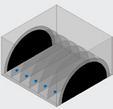

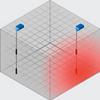
o the app Thermal Differential Monitoring

AI
e examples of trademarks for one or more DEWALT power tools and accessories: the ye low and black color scheme; the “D”-shaped air intake gr ll; the array of pyram ds on the handgr p; the kit box configuration; and the array of lozenge-shaped humps on the surface of the tool
Infrastructure Precast Tunneling
ANAHEIM : NOVEMBER 8-9, 2023 BOOTH #611
IS PROUD TO BE AN EXHIBITOR AT THE:
CODES AND STANDARDS
The Future is Future is Looking Up. Up. Literally. The The Evolution of Portland International Airport
Part Two: Novel and Experimental Design Approaches at the New PDX Terminal
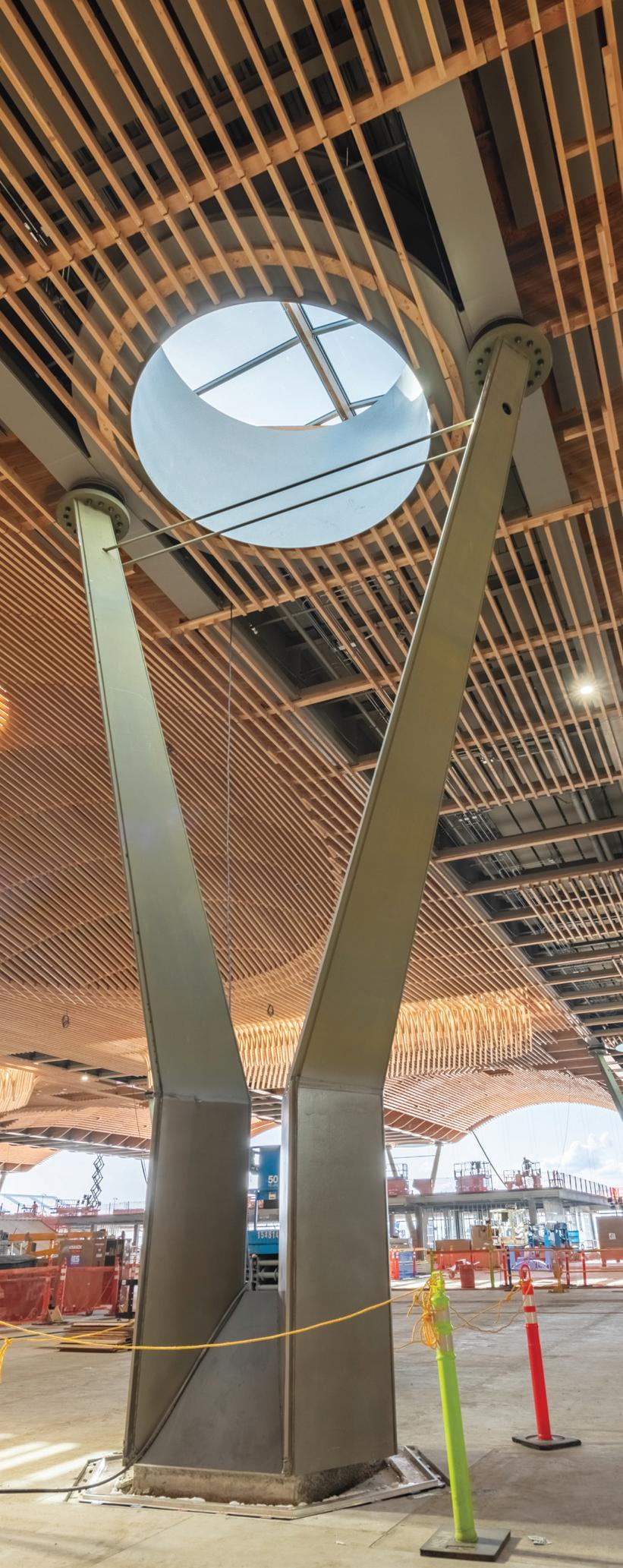 By Christopher Pitt, P.E., S.E., LEED A.P., Associate, KPFF
By Christopher Pitt, P.E., S.E., LEED A.P., Associate, KPFF
The approximately $2 Billion Portland International Airport Terminal Core Redevelopment Project, located in Portland, OR, is led by the Port of Portland as owner, with a design team featuring ZGF Architects and KPFF as Structural Engineer. It is currently being built by Hoffman-Skanska Joint Venture as CMGC. The project is summarized in Part One, published in the June 2023 Structure, and features many unique structural solutions.. In this article, we will delve deeper into some of the most interesting structural aspects of the project, including design for fire exposure, physical load testing of connections, and the herculean process of erecting the new roof.
Performance-Based Fire Engineering
Performance-Based Fire Engineering was performed on the grout-filled architecturally exposed structural steel (AESS) Y-Columns, which feature a cruciform steel core with diagonal steel face plates, forming diamond-shaped cross sections, which taper from a kink point 8’ above the main floor level to the top, roughly 26’ above. Fire scenario analyses were performed by Code Unlimited, which identified a critical design fire for the columns, with time-heat data developed and applied to a thermal heat transfer model to determine the maximum temperatures across the column cross-section at critical locations to ensure that a central steel core within the column can safely
STRUCTURE magazine 32
support the roof during a fire event. This is possible because the exterior steel face plates are primarily needed for seismic resistance and stability. The grout fill provides an insulating effect and stability for the interior plates, which are adequate to support the roof loads considering elevated temperature effects due to fire. This advanced process allowed the painted AESS columns to be exposed to view above the enplaning level without exterior fire protection materials.
Engineered Lumber and Connections
The largest glued-laminted timber (glulam) beams on the project are a prodigious 9’-3” deep occurring at clerestory locations. Wood trade partner, Swinerton Mass Timber (SMT), elected to increase the initially-planned 7’-4 ½” deep glulam beam with curb above into a single massive beam serving as both beam and curb, requiring expanded APA approval, which was successfully achieved. The glulam beams are mostly 6’-4 ½” deep at their ends, where they frame into the steel girders with moment connections for continuity, with a vertical shear and horizontal tension/compression connection at the bottom and a horizontal tension/compression connection at the top of beam designed to accommodate significant vertical shrinkage movement in the glulams. These moment connections allowed for glulam beam cantilevers, provided lateral load transfer between the upper diaphragm level and isolators located below the bottom of the girders, and allowed for optimized continuous beam design
for efficiency. The design tension forces in the glulam beam top/bottom connections are significant, up to several hundred kips, requiring the development of project-specific connections, verified through extensive physical load testing in partnership with Portland State University’s structures lab.
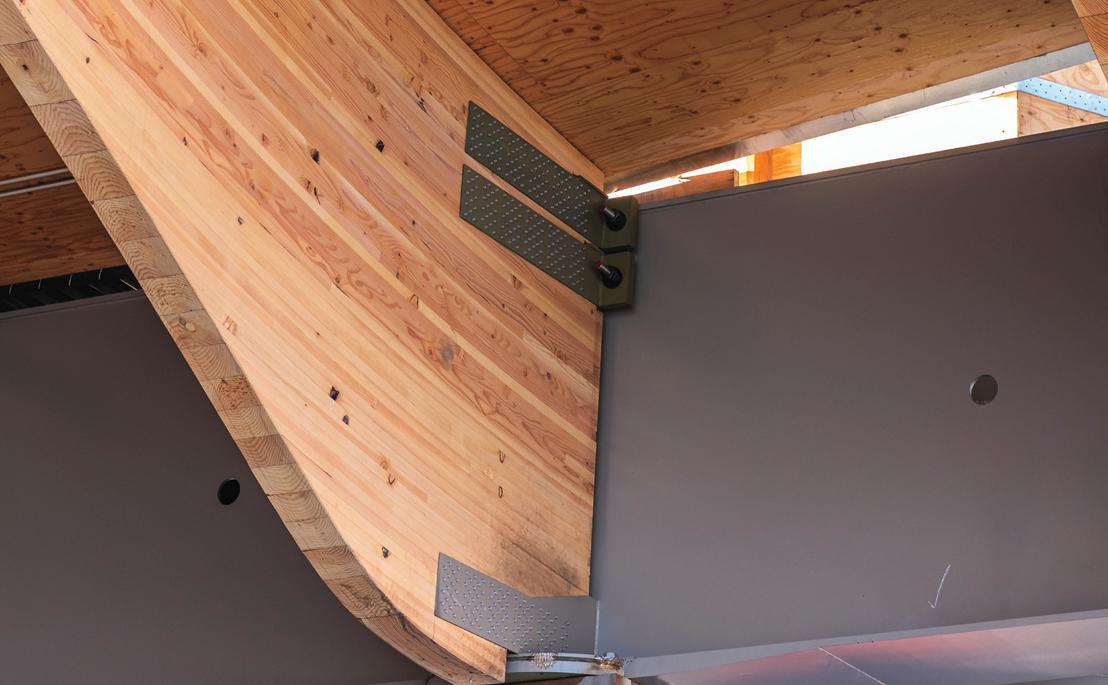
Numerous glulam end connection options were explored, but in partnership with SMT, it was determined that steel side plates with rows of closely-spaced Simpson SDS screws were the most cost-effective solution. Three sizes of connections were developed, a short connection, a long connection, and a doublelong connection, with progressively more screws, to cover the wide range of connection demands. The short connections, which have 108 screws distributed between the two sides of the beam, performed well without vertical reinforcing, exhibiting ductile screw bending failures with ultimate tensile strengths of up to 150 kips. The long connections, with 238 total screws, exhibited premature block-shear wood failures when initially tested without perpendicular reinforcing screws, so reinforcing screws were added to subsequent tests to develop ultimate tensile strengths of up to 380 kips and incorporated into the final design. The double-long connections include a total of 476 screws with perpendicular reinforcing screws and achieved ultimate tension test loading of up to 780 kips, a massive load for a screwed connection to wood.
LRFD design methods per NDS were utilized for the roof, with nominal connection capacities developed by ASTM D2915-17 based on the mean ultimate test strength minus a set number of standard deviations based on the sample size of each connection size. Appropriate phi and lambda values were then applied to the nominal capacity and compared to factored design loads to confirm the adequacy of the connections. Load-displacement data from testing showed that connection elongation at service level loading was minimal at under 1/16”, contributing to less than ¼” of roof edge deflection when installed snug tight, which was considered in roof edge elevation cambering. The large glulam beams posed several additional challenges in this hybrid roof structure. The curved
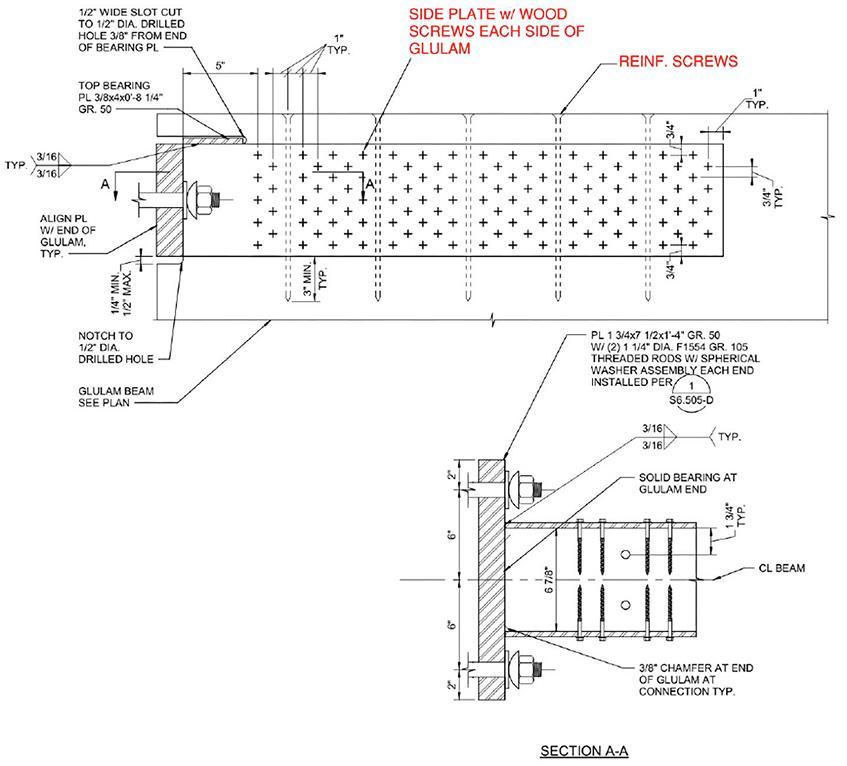
SEPTEMBER 2023 33
Roof glulam beam end connection. Photo courtesy of Dylan Evanston.
Roof glulam beam end connection detail.
geometry of the beams causes cross-grain tension in the fiber due to flexural tension stresses as the curved wood laminations attempt to straighten out and pull away from adjacent laminations. In some locations of higher stress and tighter radius, this necessitated using long perpendicular reinforcing threaded rods manufactured by SFS run through the depth of the glulams. Shrinkage movement is especially critical in those locations, so physical temperature/moisture lab testing was performed on glulam samples with reinforcing screws to confirm they can accommodate the expected moisture content changes, and accordingly, a tight yet achievable moisture content range was defined for those critical glulam beams, which was verified and tested throughout the construction process. Critical considerations in the design and detailing of the roof included allowing for significant expected wood shrinkage of potentially over 1” and differential thermal movements between the steel girders and wood structure during construction before enclosure and temperature control. Detailing transitions from the mass
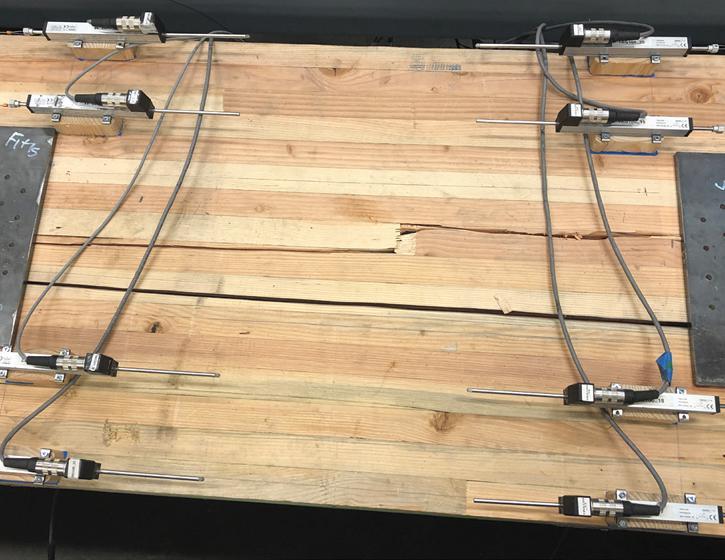
plywood panel (MPP) deck (which move with glulam shrinkage) to the girder metal deck utilized sloped transition decks over 3’ long to minimize movement demands on the roofing.
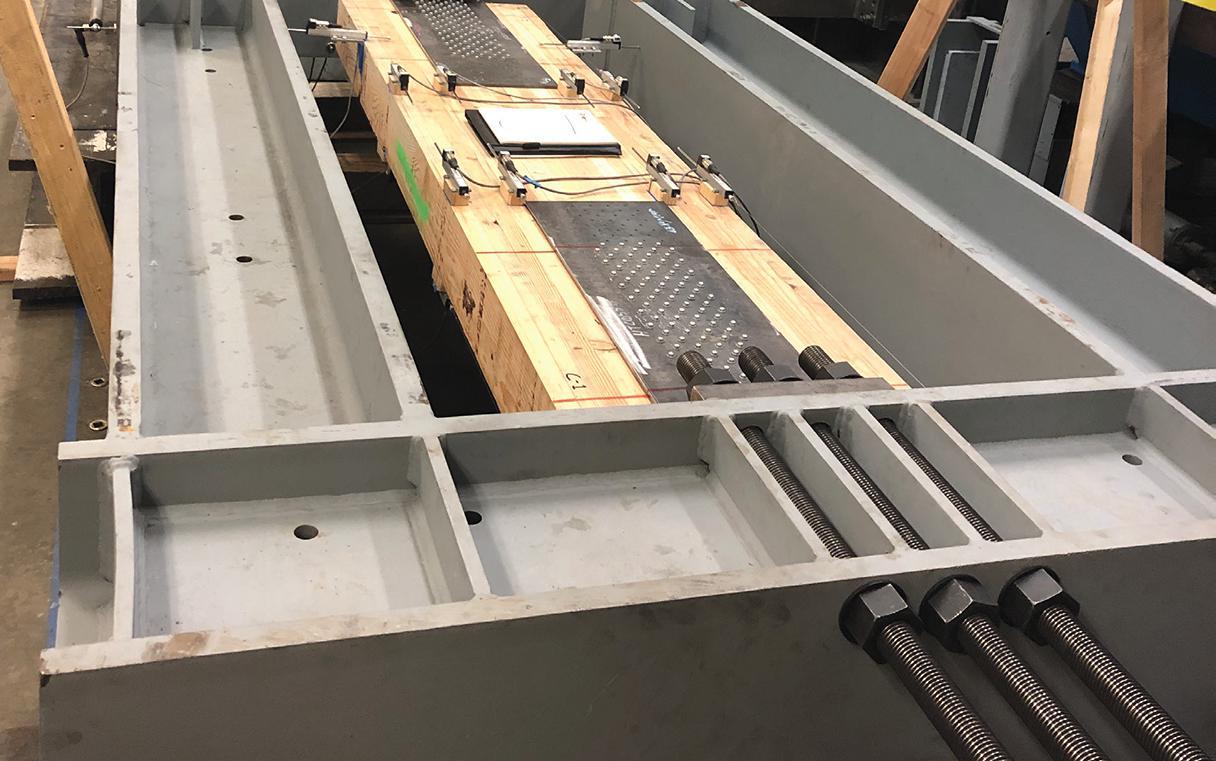
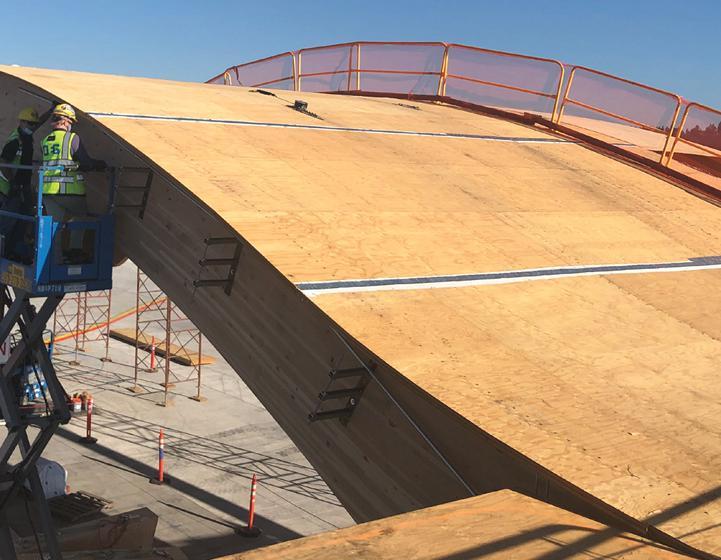
The roof structure gravity design utilized nonlinear staged construction analysis using SAP2000 with over 36 construction stages to capture the many steps in the erection process, which was critical in accurately capturing the member and connection demands through the numerous construction and service conditions.
Above the glulam beams is a 2” thick MPP roof deck, technically a form of cross-laminated timber constructed out of wood veneer manufactured by Freres Lumber in Lyons, OR. This material had recently been developed and received APA product approval when the roof design was developing, and this represents the most prominent, and most publicly visible MPP project. To accommodate the curved and warped vault/dome surfaces, with the top of glulam radiuses as small as 35’-0”, the MPP panels were bent from their flat manufactured geometry to conform with the top of glulam beams. This process required an extensive full-scale mock-up to confirm joint locations, geometry, and faceting. SMT’s digital construction subcontractor CADMakers used advanced 3D modeling and detailing technology commonly used for aerospace industry manufacturing to determine the correct cut geometry for the panels. At the end of this pre-construction process, the panels successfully fit together with impressive precision on the roof structure. Additionally, the roof edge parapets and skylight curbs were constructed using MPP in place of cold-formed metal framing and sheathing, taking advantage of the in-line
STRUCTURE magazine 34
Glulam beam top connection axial tension test setup.
Glulam connection specimen failure during tension testing.
Mass plywood roof panels installed on curved glulam roof beams.
CNC capabilities of Freres to ensure proper fit-up while saving cost and schedule.
Erection Concept
The TCORE roof design was inextricably linked with the erection concept, driven by the need to minimize impacts on airport operations. The roof erection planning and engineering process involved the Port of Portland, KPFF, HSJV, WW/AFCO Steel Trade Partners, Erectors Derr and Gruenewald, Mammoet Heavy Movers, and Walter P. Moore erection engineers forming a truly integrated team. Based on bridge launching techniques, a modular pre-fabrication approach was selected for the main roof. The 9-acre roof structure is separated into a total of (18) roof modules, (14) of which have beenerectedin Phase 1, with two each at the north and south ends of the roof to be installed in Phase 2 once the existing security node areas are closed. Construction over and in an occupied transportation hub is a major challenge, as activitycontinues throughout the 24-hour daily schedule. However, the Port worked with HSJV and the key stakeholders at PDX to identify short windows in the middle of the night when limited portions of the terminal could be de-occupied as required by the City of Portland requirements below moving loads. The key to success was limiting the overall operational impacts, which was accomplished by minimizing the quantity and duration of roof moves over occupied terminal areas.
The roof includes (9) “super-modules,” which are up to 235’ long by 155’ wide and weigh up to 1400 kips, featuring a 20’ double steel girder section on each side of an 80’ wide timber section, with timber cantilever beams extending off one side at some locations. Each of the (5) Phase 1 roof modules that occur over the existing terminal were jacked up to elevation in the prefab yard, transported on a Self-Propelled Modular Transport (SPMT), then launched over Y-columns and temporary shoring towers supported by existing columns that have been demolished to just above the main floor level. Each launching support featured a
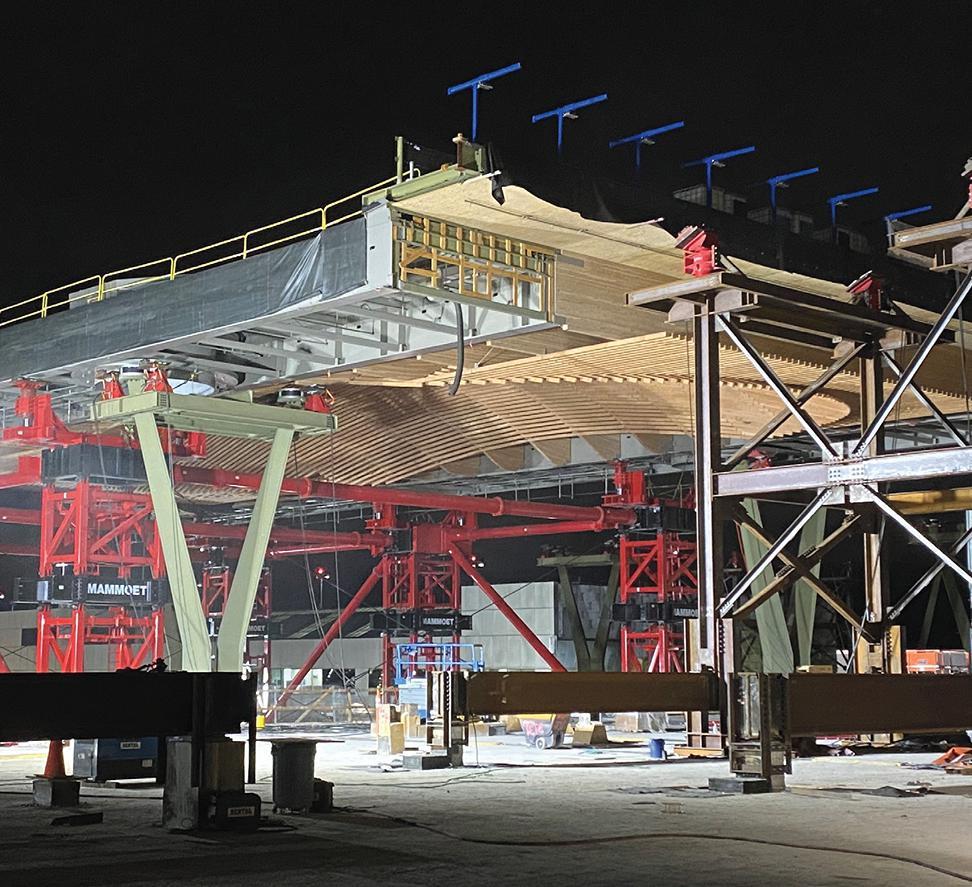
custom pivoting slide support assembly with an integrated jack for elevation control and load monitoring and was propelled by a strand jack setup with one end temporarily anchored to a Y-column and the other fastened to the trailing end of the roof girder. Using this approach, the modules were pulled into their final position, temporarily cantilevering up to 70’ to reach the next support. Through this methodology, the operational impacts of each of the (5) modules erected over the terminal were limited to a few short-duration partial night closures, allowing the airport to continue uninterrupted operation while being transformed into the terminal of the future.
In the 80’ wide gaps between any (2) super-modules, all-wood “drawer” modules, with each glulam beam end supported on roller assemblies, were temporarily linked together by struts and slid into place along the bottom flanges of the erected roof modules and into final position, where they were bolted into place on the module girders, permanently tying the roof together into a cohesive whole.
Moving Structures/ Temporary Bypasses
Routing passengers through the airport during construction offered major challenges for the project. To ensure a quality passenger experience, the team came up with a creative solution to re-purpose the existing Concourse Corridor Connector (CCC), a roughly 700’ long existing structure built in 2003 to connect Concourses C and D, which was slated for demolition as part of TCORE. KPFF had initially designed the CCC as a continuous bridge-like Vierendeel truss structure with a series of approximately 100’ long spans to allow for flexibility below. This structure was cut into two segments, with approximately half relocated to the north and south ends of the terminal, where temporary supports were erected, with tie-ins to the existing Concourses on each side of the TCORE construction area, allowing for passenger routing through a safe, pleasant facility during both Phases 1 and 2. This structure relocation also provided an opportunity for the project’s heavy mover, Mammoet, to showcase their capabilities, as they used their SPMTs to lift and drive the 300’+ long segments around the existing terminal and concourses and set them on their temporary supports during a short overnight window.
SEPTEMBER 2023 35
Nighttime launching of roof module from SPMT to Y-Columns and temporary shoring towers.

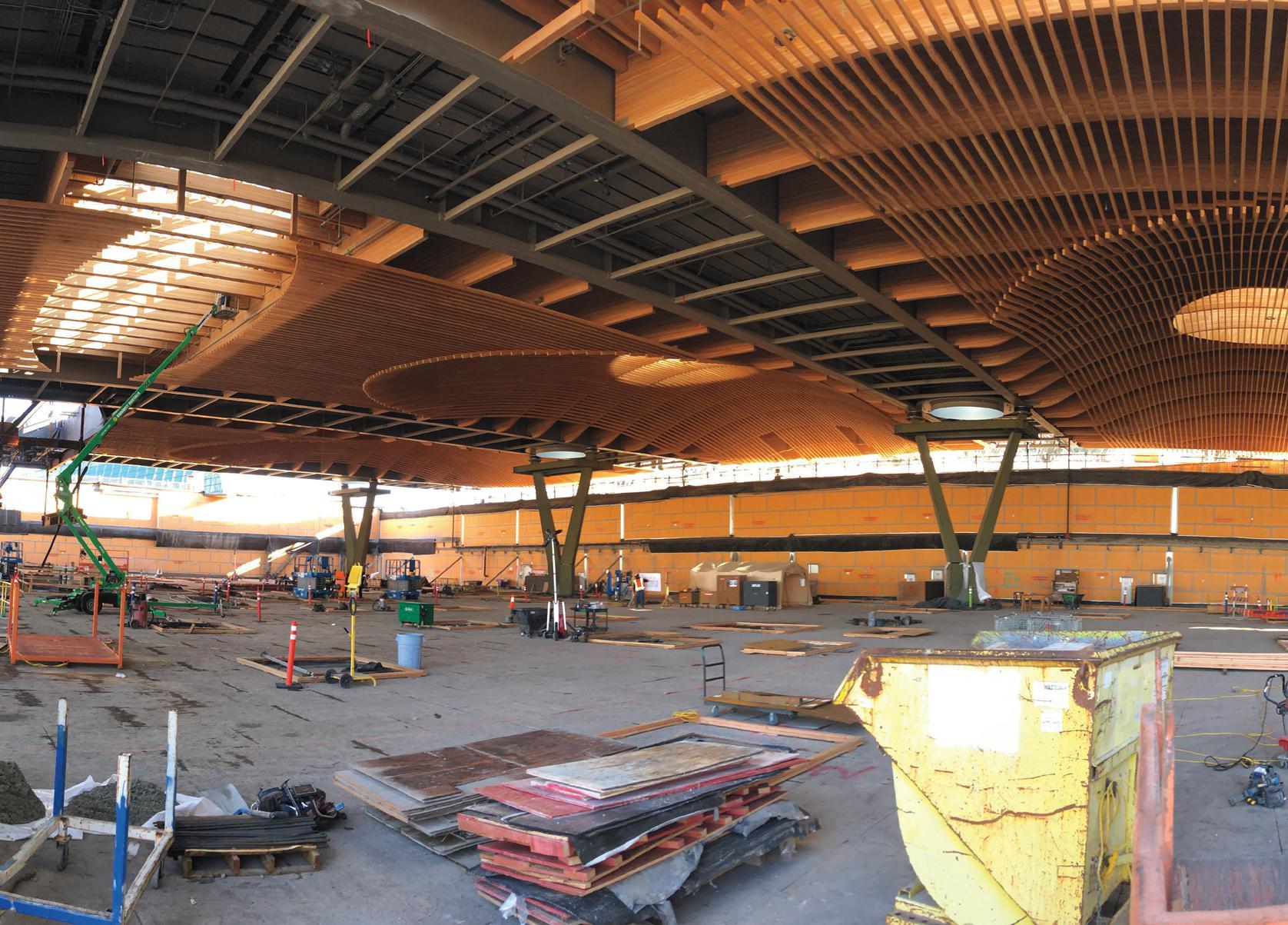
STRUCTURE magazine 36
Panoramic view of roof modules erected over the existing terminal.
Moving of bypass structures using SPMT's.
Sustainable Wood Sourcing
The use of local, sustainable wood was a high priority for the Port, which worked with ZGF and partnered with Sustainable Northwest Wood to develop a novel and detailed plan for sourcing and tracking wood from a variety of sustainable sources, including regional indigenous-owned lands and small familyowned forests. The team worked tirelessly with every partner to optimize the supply chain, trailblazing a new path for sustainable wood sourcing through constant market inertial resistance and allowing such detailed tracking that they could pinpoint the origin of nearly 100% of the wood in the roof structure on an element-by-element basis, ensuring it was all sustainably sourced. Through touring numerous forests and meeting with sawmills, lam stock processors, manufacturers, and fabricators, the team heard “I don’t know if this is possible” and “this has never been done before” countless times. Still, with the support of the Port, the team chipped away at the reluctance and uncertainty. It achieved the project goals of sustainable sourcing without paying significant premiums for fully certified lumber, which also wasn’t available in the volumes required for the project. Through this process, the team showed the market what is possible and created a new case study for flexible and achievable sustainable wood sourcing, which can be replicated on many future projects. Through Life-Cycle Analysis, the team was able to quantify a massive
overall reduction in project-wide embodied carbon through use of sustainably-sourced wood.
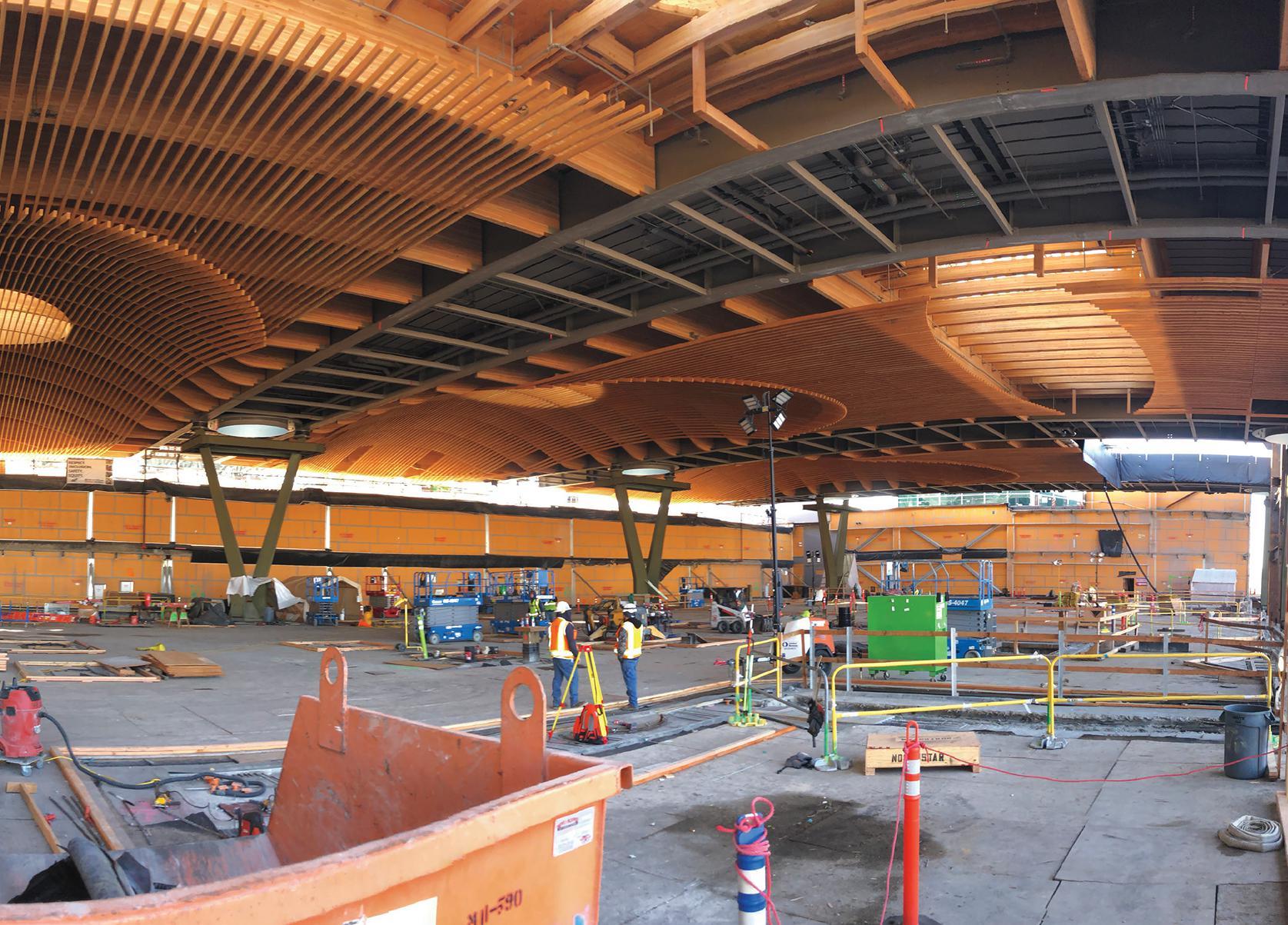
Conclusion
Every significant project presents challenges, and it’s our job as structural engineers to work with our project teams to find the appropriate creative solutions and help implement them safely, efficiently, and cost-effectively. The TCORE project, as both a massive expansion and retrofit of an existing operating transportation hub, presented tremendous obstacles that called for unique solutions. By pushing the state of the practice using cutting-edge analytical tools, physical testing, and novel construction methods, along with plenty of good-old-fashioned effort and teamwork, the KPFF team has contributed significantly to the delivery of a structure that the project team, Port of Portland, and the local community can be proud of for generations to come. Book your flights now to/from PDX for Summer 2024, when Phase 1 will be open to the public, and enjoy this iconic transformed terminal; trust us, you’ll want to celebrate with us by “raising the roof”!■
SEPTEMBER 2023 37
Christopher Pitt is a Structural Engineer/Associate at KPFF in Portland, OR (christopher.pitt@kpff.com)
Understanding Developing Issues in Access to Design Data
Implications for designers (Part 1 of 2).
By Joan Malana Kennedy, BSc Architecture, MSc Building Science, MSc Construction Law and Dispute Resolution, UAP, FCIArb, FPIArb, AMAE
This is part 1 of a 2-part series about the developing issues in access to design data concerning digital collaborative working environments, particularly BIM. Part 1 discusses the background and BIM development in the UK and the first reported formal dispute involving BIM in the UK, Trant Engineering Limited v Mott MacDonald Ltd [2017] EHWC 2061 (TCC). Part 2 will deal with the lessons learned about Trant v Mott MacDonald [2017] and the implications and applications for Designers.
Introduction
In recent years, the UK Government has pushed for Building Information Modelling (BIM):
“BIM is a process for creating and managing information on a construction project across the project lifecycle” (National Building Specification).
BIM creates a data model that contains information assembled and updated collaboratively to enable end-users to optimize their actions and get greater whole-life value for their asset. The product of the BIM process is a departure from that generated by earlier Computer-Aided Design (CAD) software that uses standalone two-dimensional drawings produced independently by each building professional and/or designer. BIM is used in place of traditional 2D CAD drawings at the design stage and throughout the building lifecycle. Rapid and frequent changes in standards applied to BIM took place, making it fertile ground for legal disputes. In July 2017, the UK reported its first formal dispute involving BIM. In Trant Engineering Limited v Mott MacDonald Ltd [2017] EHWC 2061 (TCC), the claimant applied for an interim injunction until trial (or further order), requiring the defendant to provide access to design data the claimant had prepared. The case raised issues about the obligations of the party who has control over the access to design data prepared by the rest of the team and the realities (and complexities) of the inter-party nature of the use of BIM.
BIM Development (UK)
In support of the design profession and the construction industry’s increasing use (and limited formal adoption) of BIM, the Construction Industry Council (“CIC”) published the first edition of its CIC-BIM Protocol (“CIC/BIM Pro”) in 2013. This protocol was issued with the intention to be utilized on all UK construction contracts using BIM (CIC 2013 iv). The development of the protocol was a response to the publication of the UK Government Construction Strategy in 2011, which aimed to reduce the costs of construction projects by up to 20% (United Kingdom,
Cabinet Office 3). In 2013, the UK Government also mandated using BIM for all centrally procured Government contracts from 2016. This forms part of the UK’s Construction 2025 Strategy (CIC 2013). One of the goals stated in that strategy was a reduction of the initial construction costs and the whole life cost of built assets by 33%.
Also, in 2013, PAS 1192-2:2013 came into effect, which is the “specification for information management for the capital/delivery phase of construction projects using building information modelling” (British Standard Institution).
The Second Edition of the CIC/BIM Pro was published in 2018 to reflect the ongoing technical and practical development in BIM adoption and use. This updated edition was intended to align closely with PAS 11922:2013, the updated UK standard (CIC 2018 4). That same year, ISO 19650 was published, creating an international standard for managing information over the whole life cycle of a built asset using BIM. The UK implemented this standard in 2019 through its BS EN 19650 series, the “Organization, and digitization of information about buildings and civil engineering works, including building information modelling -- Information management using building information modelling.”
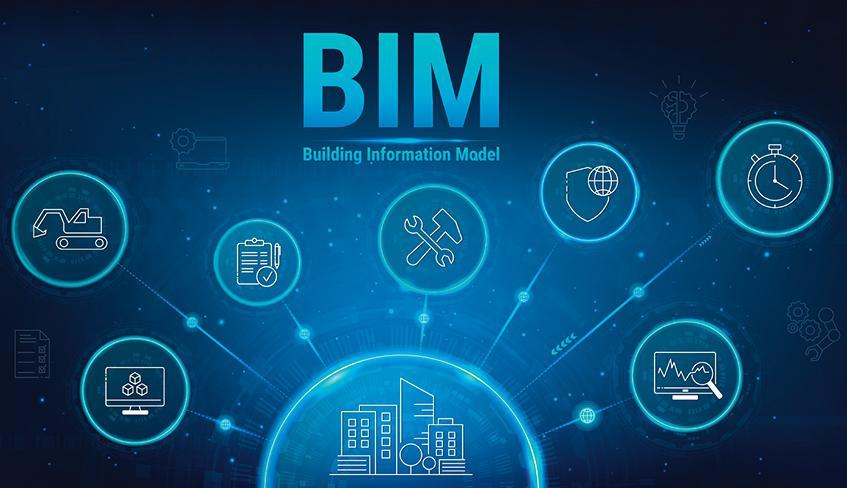
BS EN ISO 19650-1:2018 sets out the concepts and principles for information management, defining a common modelling environment or a “Common Data Environment” (CDE), which allows information to be shared between all project team members. A CDE is an “agreed source of information for any given project or asset, for collecting, managing and disseminating each information container through a managed process” (BS EN ISO 19650-1:2018). Besides defining CDE, the standard also addresses the topic of workflow, thereby providing guidance that may help mitigate disputes related to a CDE.
In May 2020, to bridge the gap of an Information Protocol to support contracts that use ISO 19650, the UK BIM Framework (in association with the CIC) published the “Information protocol to support BS EN ISO 19650-2 the delivery phase of assets” (UK BIM Framework 2020).
STRUCTURE magazine 38 structural FORUM
The Issue in the TEL/MML Case Facts
Trant Engineering Limited (TEL) was employed by the Ministry of Defence (MoD) to design and construct a £55 million Mid-Atlantic Power Station Project at the Royal Air Force Mount Pleasant Complex in the Falkland Islands. TEL then engaged Mott MacDonald Ltd (MML) “to provide design consultancy services” (TEL v MML, 2018 par. 4), which included “preliminary design, detailed design, design co-ordination, preparation and implementation of BIM and procurement support, principal designer responsibilities and development of the DREAM assessment (an environment assessment throughout the design stage)….” (TEL v MML, 2018 par. 4).
In implementing BIM, MML intended to use a project collaboration software called ProjectWise, which created a CDE to enable “the design teams to manage, share and distribute design data on a single platform” (TEL v MML, 2018 par. 5). A draft consultancy agreement (DCA) was sent by MML to TEL and incorporated MML’s standard terms and conditions. The DCA included a clause on the limitation of liability and provisions for payment, following provisions in the Construction Act, also known as the Housing Grants, Construction and Regeneration Act 1996, for interim payments and “contained a provision that the contractor … could suspend works in the event of any failure on the part of the client” (TEL v MML, 2018 par. 9).
The DCA provision addressing the intellectual property stated:
“Upon full payment of the fees due under the consultancy agreement, the consultant shall grant to the client an irrevocable royalty-free nonexclusive licence to use all rights, titles, and interest in any such intellectual property in connection with the construction, completion, maintenance, re-instatement, repair, promotion and/or advertisement whether by the client or by a third party authorised by the client of the project.” (TEL v MML, 2018 par. 9)
TEL received the DCA contract documents but failed to respond. Subsequently, MML claimed no contract had been entered into since TEL's outstanding invoices remained unpaid. MML subsequently suspended all design efforts and blocked TEL’s access to the design data in the CDE that MML had provided up to that point. TEL applied for an interim injunction for MML to release the design data.
Judgment
The court applied the three-stage test in American Cyanamid Co (No 1) v Ethicon Ltd & Ethicon [1975] UKHL AC 396 and found that the claim satisfied the tests:
(1)Was there a serious question to be tried?
Both parties were clearly in dispute regarding the services to be provided by MML, its value, and entitlement for payment, whether a contract existed if either TEL and MML was in breach of any such contract, and, if so, what were “the implications…on any entitlement to retain access to and/or use of any design data” (TEL v MML, 2018 par. 24).
(2)Adequacy of the damages
MML argued that damages would be an adequate remedy for TEL since monetary damages could compensate for a delay to the project because of the inability to use the design data that was held on its platform ProjectWise. MML invoked its copyright and intellectual property rights in respect of the design data (TEL v MML, 2018 par. 13). TEL responded by arguing that the award of monetary damages would likely be wholly insufficient if the injunction was not granted, as the losses resulting from a year’s
delay would very probably exceed the DCA’s provision setting the limitation of liability at £1 million. TEL cited AB v CD [2014] EWCA Civ 229 and Bath v Mowlem [2004] EWCA Civ 115, stating:
“The primary obligation of a party is to perform a contract. The requirement to pay damages in the event of a breach is a secondary obligation, and an agreement to restrict the recoverability of damages in the event of a breach cannot be treated as an agreement to excuse performance of that primary obligation … The rule, if rule is the right word, that an injunction should not be granted when damages would be an adequate remedy should be applied in a way which reflects the substantial justice of the situation: that is, after all, the basis of the jurisdiction under section 37.” (TEL v MML, 2018 par. 29) [emphasis added] The court found that damages would not be an adequate remedy for TEL nor MML since the likely losses on the project would exceed the limit on damages recoverable from MML. Conversely, MML would suffer a loss of bargaining position. If there was a finding that no contract existed, MML might be entitled to more by way of restitution than if the design services that led to the creation of the BIM model were provided under the DCA. In sum, the court found that the financial damages the parties may experience in the face of such a delay would be less difficult to identify and value.
(3)Balance of convenience
TEL argued that without restoring access to the design data, the project could not move forward, the project would require a virtual restart, and a year’s progress would be lost. TEL also argued that the court should allow TEL access to the design data since MML had already performed the design services that led to the creation of the data and would allow TEL to advance the project. TEL further contended that there would be “very little” harm to MML if the court required MML to provide access to design data that it had already produced, particularly when TEL had undertaken to pay for the outstanding fees or damages. The court found that the balance of convenience was with TEL and granted the injunction.
A subsequent case was heard in March 2021 involving the same parties, TEL and MML (and RAF Mount Pleasant), arising from a Settlement and Services Agreement (SSA) the parties entered into on 20 November 2017 (MML v TEL, 2021). MML and TEL entered into the SSA to resolve the existing primary dispute and govern the parties’ future actions. The 2021 case focused on the exclusion and limitation clauses in the SSA that MML had against TEL in the event of a breach of the SSA. The judge concluded that when properly construed, the exclusion and limitation clauses in question applied to any breach by the Claimant of the SSA. That meant that MML’s liability was limited to the terms of the liability cap despite TEL’s claims that the losses resulting from MML’s breach were considerably more (MML v TEL, 2021, par. 87).■
Full references are included in the online version of the article at STRUCTUREmag.org
7438 1550
SEPTEMBER 2023 39
Joan Malana Kennedy is a Senior Consultant in J.S. Held’s Global Construction Advisory Services Practice based in the United Kingdom. She is a designer with a diverse international portfolio who developed her technical expertise working in Singapore, Kuala Lumpur, and the Philippines. She has provided technical assistance with complex and highvalue claims in cases in the UK, Middle East, and Southeast Asia. Joan can be reached at (joan.kennedy@jsheld.com) or +44(0)20
structural EFFICIENCY
Maximizing Masonry’s Efficiency
Let’s review TMS 402/602 for answers.
By Philippe J. Ledent, P.E., S.E.
What is the maximum spacing of vertical reinforcement in masonry walls? Without additional information, the answer is typically quite simple: The Building Code Requirements and Specification for Masonry Structures (TMS 402/602)does not specifically include a maximum spacing for either horizontal or vertical reinforcement in masonry walls other than what is required based on structural demand or what is required to meet minimum seismic design requirements.
As we work through the TMS 402/602, we find a maximum effective compression width for each reinforcing bar in Chapter 5, which deals with Structural Members, that will factor into the vertical reinforcement spacing. In Chapter 7, which addresses Seismic Design Requirements, we find that there are prescriptive reinforcement requirements for participating elements that include limits on the vertical and horizontal reinforcement spacing based on the Seismic Design Category (SDC) of the structure. In Chapter 9, which focuses on the Strength Design of Masonry, we also have limits on material properties (including reinforcement strengths) and deflection, as well as ductility requirements that affect the required reinforcement spacing. The International Building Code (IBC) does not include any more restrictive requirements than those found in the TMS 402/602 as it relates to the maximum vertical reinforcement spacing in masonry walls.
Especially for structures in low SDCs, our recommendation for the most economical wall assembly is to utilize a moderately sized reinforcement bar at the widest possible spacing. We have found that this assembly has not only been the most economical in terms of cost, but it has also significantly reduced construction schedules.
Effective Compression Width
The genesis of many of the questions relating to the maximum spacing of reinforcement in masonry walls can be found in Section 5.1.2, which addresses the Effective Compression Width. For simplicity, this article will focus on masonry laid in running bond, which is the placement of masonry units such that the head joints in successive courses are horizontally offset at least one-quarter of the unit length1. For masonry laid in running bond, Section 5.1.2 states that the width of the compression area used to calculate member capacity shall not exceed the least of:
a. Center-to-center spacing of the reinforcement.
b. Six multiplied by the nominal wall thickness.
c.72 in.
Based on this requirement, many engineers often limit vertical reinforcement
spacing in 8-inch CMU to 48 in. on center since this is equal to six multiplied by the nominal wall thickness (e.g., 8-inch.). However, limiting the vertical reinforcement spacing to the maximum width of the compression area would ignore the fact that portions of the wall can span horizontally between the reinforced sections and would thus be an unnecessarily conservative assumption.
Prescriptive Seismic Requirements
The TMS 402 requires that masonry elements be classified in accordance with Sections 7.3.1 and 7.3.2 as either participating or nonparticipating elements of the seismic-force-resisting system. For simplicity, this article will focus on participating elements, including masonry walls that are part of the seismic-force-resisting-system, and specifically on Ordinary Reinforced Masonry Shear Walls (ORMSW) and Intermediate Reinforced Masonry Shear Walls (IRMSW).
Table CC-7.3.2-1 of the TMS 402 includes requirements for masonry shear walls based on shear wall designation, and an abbreviated version is included below in Table 1:
The Minimum Design Loads for Buildings and Other Structures (ASCE/SEI 7) includes design coefficients and factors for seismicforce-resisting systems in Table 12.2-1. As shown in Table 12.2-1, ORMSW construction is permitted in SDC A, B, and C with a maximum structural height of 160 ft. in SDC C. IRMSW construction is permitted in SDC A, B, and C with no limitations on structural height.
Starting with ORMSW construction, the minimum reinforcement requirements are provided in TMS 402 Section 7.3.2.2.1 and summarized below:
a.Vertical reinforcement of at least 0.2 in.2 in cross-sectional area shall be provided at corners, within 16 in. of each side of openings, within 8 in. of each side of movement joints, within 8 in. of the ends of walls, and at a maximum spacing of 120 in. on center.
b. Horizontal reinforcement shall consist of at least two longitudinal wires of W1.7 joint reinforcement spaced not more than 16 in. on center, or at least 0.2 in.2 in cross-sectional area of bond beam reinforcement spaced not more than 120 in. on center. Horizontal reinforcement shall also be provided: at the bottom and top of wall openings and extend at least 24 in. but not less than 40
STRUCTURE magazine 40
Shear Wall DesignationDesign Methods Reinforcement Requirements Permitted In Ordinary Reinforced Masonry Shear Walls Section 8.3 or Section 9.3 Section 7.3.2.2.1SDC A, B, and C Intermediate Reinforced Masonry Shear Walls Section 8.3 or Section 9.3 Section 7.3.2.4 SDC A, B, and C
Table 1 Excerpt from CC-7.3.2-1: Requirements for Masonry Shear Walls Based on Shear Wall Designation.
reinforcement bar diameters past the opening; continuously at structurally connected roof and floor levels; and within 16 in. of the top of walls.
Thus, for ORMSW construction, the maximum vertical reinforcement spacing is limited to 120 in. on the center, which exceeds the maximum width of the compression area specified in TMS 402 Section 5.1.2. The minimum prescriptive reinforcement requirements for ORMSW construction are shown in the 2015 Design of Reinforced Masonry Structures, which has been copied above in Figure 1. For IRMSW construction, the minimum prescriptive reinforcement requirements are the same as that of ORMSW construction except that vertical reinforcement spacing shall not exceed 48 in. as noted in TMS 402 Section 7.3.2.4. The minimum prescriptive reinforcement requirements for IRMSW construction are shown in the 2015 Design of Reinforced Masonry Structures, which has been copied above in Figure 2.
Based on this information, it is reasonable to assume a practical maximum vertical reinforcement spacing of 120 in. on center. It is also worth noting that for nonparticipating elements, which are not part of the seismic-force-resisting system, there are not any prescriptive reinforcement requirements. However, the 120 in. is a reasonable limit.
Structural Demand
Let's look at an example of a non-bearing 15 ft. 4 in. exterior masonry wall constructed with 8-inch units. We can calculate the required vertical reinforcement spacing to meet the structural demand assuming a strength level design wind pressure of 27.50 psf.
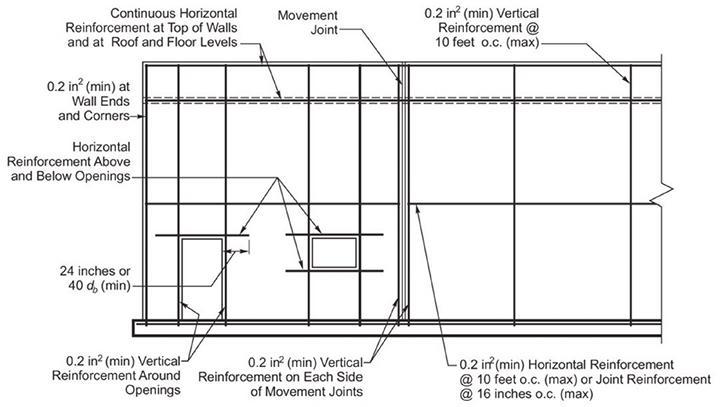
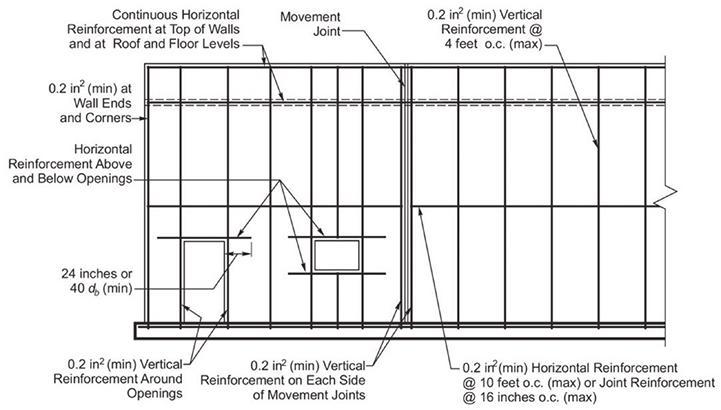
As a first estimate, we can assume that the wall does not have any axial load applied and, thus, is resisting a purely flexural load. We will also assume the following:
• Effective Depth (d) = 7.625 in./2 = 3.8125 in. for a centered reinforcement bar
•Strength Reduction Factor (��) = 0.90 for reinforced masonry in flexure and axial
•Effective Width (b) = 12 in.
• Specified Net Area Compressive Strength of Masonry (f’m) = 2000 psi
Step 1: Calculate design moment (Mu)
Using Strength Design, the controlling load combination for outof-plane design is typically 0.9D + 1.0W in low seismic areas. Thus, the design moment (Mu) can be calculated as follows:
Step 2: Calculate the equivalent stress block (a) and verify that it is located within the face shell of the unit.


a=0.150 in
The minimum face shell thickness specified in ASTM C90 is 1.25 in. for nominal widths greater than 8-in. Thus, since the equivalent stress block is less than the face shell thickness, the unit can be designed as a rectangular section.
Step 3: Solve for the required area of steel (As,req).
As,req=0.048 in2/ft




Step 4: Select a reinforcement spacing.
The area of a #6 vertical reinforcement bar (As,bar) is 0.44 in2. Since the required reinforcement area for flexure is 0.048 in2/ft, we can solve for the nearest modular spacing.
Thus, the required spacing is 110 in. We will assume a spacing of 96 in. on center since this is greater than the effective compressive width per bar and will affect the capacity. The actual reinforcement provided can then be solved:
Step 5: Solve for the effective compression width per bar.
As stated in TMS 402 Section 5.2.1, the effective compression width
SEPTEMBER 2023 41
Figure 1 Minimum Reinforcement Requirements for Detailed Plain and Ordinary Reinforced Masonry Shear Walls. Larger diagram included in the online version of the article.
Figure 2 Minimum Reinforcement Requirements for Intermediate Reinforced Masonry Shear Walls. Larger diagram included in the online version of the article.
per bar is the minimum of the center-to-center bar spacing, six multiplied by the nominal wall thickness, and 72 in. Thus, for our case, the effective compression width per bar would be the minimum of 96 in., 48 in. [(6)(8-in)], or 72 in., where 48 in. will control.
Step 6: Verify capacity.
Since the reinforcement spacing is greater than the effective compression width per bar, we must verify that we have sufficient capacity. The simplest way to accomplish this is by factoring down the unit width (b) to account for the larger spacing.
φMn=10,813 in‒lb/ft
Thus, since the factored moment capacity (10,813 in‒lb/ft) is greater than the design moment (9,698 in‒lb/ft), the reinforced masonry wall has sufficient capacity.

Step 7: Create an interaction diagram.
Now we can solve for the modified factored moment capacity (��Mn) and compare it to the design moment (Mu).


Solving flexural behavior is a good estimate of the required reinforcement. However, to verify that the wall has sufficient capacity, an interaction diagram is required to verify that the wall can resist all combinations of axial and flexural loads. A sample interaction diagram is provided below in Figure 3 for this wall. It shows that for all load combinations, including second-order effects, the 15’-4” wall has the sufficient capacity with (1) #6 vertical reinforcement bar at 96” on center. For the purposes of this interaction diagram, a 500 lb/ft dead load and 500 lb/ft snow load were added to the wall. The secondorder deflection was calculated to be 0.09 in., which is less than the deflection limit of 1.3 in.
Discussion
If we place movement joints at 24 ft. 8 in. on center for crack control and we evaluate the impact on a wall panel comparing a spacing
STRUCTURE magazine 42
Figure 4 Comparison of Reinforcement Spacings
Figure 3 Interaction Diagram
of 48 in. on center to our calculated spacing of 96 in. on center, we will have reduced the spacing from six (6) equal spaces to (3) equal spaces as shown in Figure 4 below. This reduction equals a significant decrease in terms of required grout and reinforcement:

• A 53% reduction in grout volume. For a spacing of 48 in. on center, 0.23 yd3 would be required per 100 ft2 of wall area versus 0.11 yd3 for a spacing of 96 in. on center. NCMA TEK 09-04Awas used to estimate grout volumes.
• A 43% reduction in reinforcement weight. Assuming low lift grouting (limiting grout lifts to 5 ft. 4 in.) and lap lengths, 170 ft. 4 in. of reinforcement would be required for every wall panel with a spacing of 48 in. on center versus 97 ft. 4 in for a spacing of 96 in. on center.
•Based on several Michigan contractors interviewed for this article, the increased spacing will result in an approximately 7% reduction in the wall square foot cost. The reduction in cost for other regions, states, and markets would need to be evaluated.
The specified net area compressive strength of the masonry (f’m) will typically not significantly impact on the spacing of reinforcement for walls acting predominantly in flexure. If we compare the factored moment capacity of the example wall in pure flexure (10,813 in‒lb/ft) versus the same wall with an f’m equal to 4000 psi, we find that we only realize a 2.3% increase in factored moment capacity. Thus, although f’m has a major impact in other areas, it has a relatively minor impact on flexure compared to reinforcement size and spacing for walls with low axial load. For various partially grouted wall heights and a 30 psf wind load, the maximum reinforcement spacings are shown below in Table 2. The wall was assumed to have no axial load applied.
What about the horizontally spanning section of the wall between the vertically reinforced sections? The simplest method is to use horizontal joint reinforcement already present for crack control to distribute the lateral load horizontally into the vertically reinforced strips. For flexural tension parallel to bed joints (horizontally spanning masonry), TMS 402 Section 9.1.9.3.2
permits joint reinforcement to be used as primary flexural reinforcement. The typical yield strength of joint reinforcement is 70,000 psi. Strength Design of Masonry discusses this procedure, and an excerpt from this publication has been copied below in Table 3 to present the design moment capacity from joint reinforcement:
For example, if we have a wind pressure of 27.5 psf and have a vertical reinforcement spacing of 120 in., we can conservatively assume a simple span condition with the span length equal to the reinforcement spacing. In some cases, we may be able to consider a continuous span depending on support conditions. We can then calculate the design moment:
Mu=220 ft‒lb/ft
With W1.7 (9 gages) horizontal joint reinforcement at 16 in. on center, we have a factored moment capacity of 462 ft-lb/ft, which is greater than the design moment. Further addressing horizontally spanning masonry, the National Concrete Masonry Association (NCMA) Foundation funded research and a report by W. Mark McGinley, including testing at North Carolina A & T. The final report found that for masonry walls with reinforcement at a wide spacing, a shallow arch formed which could transfer significant loads between vertically reinforced sections. The final report is available through the NCMA.
This article discussed approaches to design CMU walls for flexure based on the TMS 402 requirements rather than limiting reinforcement spacing to 48 in. or six multiplied by the nominal wall thickness. Especially for walls in low SDCs where ORMSW and IRMSW are permitted, the most economical masonry walls use moderately sized reinforcement bars at the widest possible spacing.■
Full references are included in the online version of the article at STRUCTUREmag.org
Philippe Ledent is the Executive Director of the Masonry Institute of Michigan and an adjunct faculty member in the Construction Engineering Technology department at the University of Toledo. In addition, Philippe serves on the Board of Directors for The Masonry Society and is the secretary of the upcoming TMS 402/60228 Building Code Requirements and Specification for Masonry Structures. (phil@masonryinfo.org)
43 SEPTEMBER 2023
Table 2 Required Reinforcement Spacing.
Maximum Reinforcement Spacing for Pure Flexure (Reinforcement Centered), in. Wall Height 2000 psi 2500 psi 3000 psi #5 #6 #7 #5 #6 #7 #5 #6 #7 10’ – 0” 120120120120120120120120120 12’ – 0” 112 120120112 120120112 120120 14’ – 0” 88 12012088 12012088 120120 16’ – 0” 64 96 12064 96 12064 96 120 18’ – 0” 56 72 10456 80 10456 80 104 20’ – 0” 40 64 88 48 64 88 48 64 88 Wire Size db (in.) As (in2)Spacing (in.) Factored Moment Capacity (ft–lb/ft) 6-inch CMU8-inch CMU 12-inch CMU W1.6 (9 gage) 0.1480.017 8 653 921 1456 16 328 462 730
Table 3 Design Moment Strength from Joint Reinforcement.
structural METHODS
Tall, Slender Masonry Walls
Two Strength Design Approaches.
By Edwin Huston, P.E., S.E.
The strength design procedure for tall, slender walls is found in Section 9.3.4.4 of TMS 402-22 and in Section 9.3.5.4 of TMS 402-16 and TMS 402-13. This procedure requires that the engineer accounts for P-delta effects. This can be done in one of three ways. The first is a step-function analysis, which is iterative. The second allows the use of a second-order analysis, such as that used in some software. The third is a moment magnifier method that is less cumbersome than the step-function method but can also be more conservative. This article reviews the step-function method and the moment magnification method.
The step-function method dates back to the 1985 Uniform Building Code (UBC) and limits the axial capacity of a tall, slender wall to 20% of f' m, unless the effective height to nominal thickness, (h/t) exceeds 30. If h/t exceeds 30, then the maximum axial capacity drops to 5% of f' m. Such a large step function is unusual and may puzzle some engineers.
Using a nominal 8-inch-thick masonry wall and an h/t ratio of 30 limits the wall height to 20 feet. Many masonry structures, such as big box stores, supermarkets, auditoriums, and gymnasiums, have 8-inch masonry wall heights greater than 20 feet, triggering the 5% of f' m limitation.
The origin of this large step-function method dates back to 1979. At that time, the maximum effective height to nominal thickness of a masonry wall was limited to 25. The only masonry design provisions in the code at that time were based on allowable stress design. There was a new procedure for the design of tilt-up concrete walls, but the City of Los Angeles wanted the theory behind this procedure validated. For these reasons, in 1979, the Structural Engineers Association of Southern California (SEAOSC) and the American Concrete Institute, Southern California Chapter (ACI-SC) formed the “Task Committee on Slender Walls.” The task committee tested 32 full-scale slender walls constructed of concrete masonry, clay masonry, and concrete. All of the test specimens were 4 feet wide and 24 feet, 8 inches tall. Thicknesses ranged from 4.75 inches to 9.63 inches. The h/t ratios of these walls ranged from 30 to 60.6, so all of them exceeded the thencurrent limiting h/t ratio of 25. The tests subjected all of the walls to small eccentric vertical loads of either 320 plf or 860 plf, to simulate lightweight panelized wood roof loads at a purlin or girder. An airbag was used to simulate static wind loads. Applied lateral loads ranged from 40 psf to 162 psf, and deflections under those loads ranged from 7 to 19.6 inches. Figure 1 presents a graphical representation of the test frame. Figure 2 shows a masonry wall being tested.
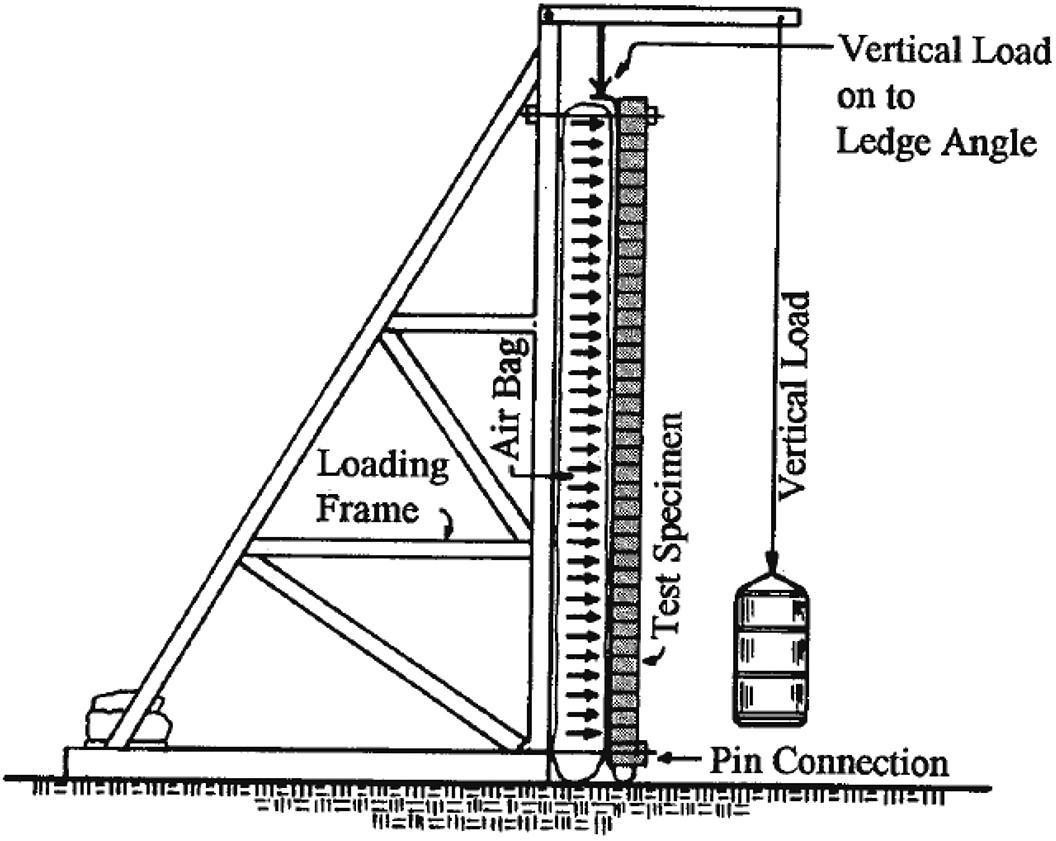
The original report was published by ACI-SC and SEAOSC. The results of this work were also reported as “Design of Reinforced Masonry Tall Slender Walls,” published by the Western States Clay Products Association in 1984. Finally, the Masonry Institute of America published the results in 1984 and updated them after the 1994 UBC was published.
These test reports resulted in the adoption of tall, slender wall strength design provisions, which first appeared in the 1985 UBC. Based on the “Task Committee on Slender Walls” testing program, the maximum h/t ratio was increased from 25 to 30 in the 1985 UBC, and the maximum axial capacity was limited to 4% of f' m In subsequent editions of the UBC, the 4% limit was raised to 5%. The 5% limit is in effect because the wall tests used very light axial loads. This procedure was introduced into the 2002 masonry standard and modified in the 2005 masonry standard. It has remained relatively unchanged between 2005 and 2022.
STRUCTURE magazine 44
Figure 1 Loading Frame Showing Drums of Water for Vertical Load and Air Bag for Lateral Load.
Photo Courtesy of the Masonry Institute of America.
The step-function design procedure first presented in the 1985 UBC is itself a second-order analysis. When the design moment is applied, the wall deflects. The axial load, acting on the deflected wall produces secondary moments, which increase the deflection. The secondary moment is added to the design moment and the wall is reanalyzed. Since the sum of the design moment and the secondary is larger, it produces a larger deflection. The analysis is repeated again with this larger deflection and increased secondary moment. The procedure is iterative. The secondary moments and deflections are typically smaller and smaller in each iteration. After several iterations, the increase in secondary moments and deflections typically are reduced to the point where the system can be considered stable. The commentary of TMS 402 states that “The designer should examine all moment and deflection conditions to locate the critical section…” This includes roof and, if appropriate, floor diaphragm deflections.
Structural engineers use second-order analysis to account for P-Δ effects in frames with lateral loads. There is, however, a way of avoiding the use of the step-function procedure, or any other second-order analysis. This is the third method mentioned at the beginning of this article. It uses a magnified first-order analysis.
One way of magnifying the moments derived from a firstorder analysis is to apply increased column buckling effective lengths. This methodology can be cumbersome. For masonry and concrete structures, the more common approach is the application of a moment magnifier. This method is used in the strength design of both concrete and masonry elements. TMS 402 has used a moment magnifier approach for P-Δ strength design of unreinforced walls since the 2008 edition of TMS 402. When the committee started looking for an alternate approach for the design of tall, slender reinforced masonry walls, the use of a moment magnifier was an obvious choice. In TMS 402/602-13, a new moment-magnifier analysis method was added at Section 9.3.5.4.3. It is in Section 9.3.4.4.3 in TMS 402/602-22.
Because the moment magnifier analysis is not iterative, it reduces design time substantially. The moment magnifier methodology eliminates the step function, the 20% of f' m limitation on the maximum strength design axial stress of the wall, the h/t limitation of the tall, slender wall design and tends to be conservative.
While providing an actual design example is beyond the space limitations of STRUCTURE Magazine, a design example from a 2018 seminar presented by the Northwest Concrete Masonry Association demonstrates the difference in the amount of effort required by these two methods. The out-of-plane wall design example was for a 22-foot tall, 8-inch nominal, concrete masonry wall. The wall was lightly loaded and did not exceed the 5% f' m limitation. Seismic loads controlled the out-of-plane design. The tall, slender design procedure resulted in vertical reinforcement of #5 at 24 inches on center. The design procedure included two iterations for service load deflections and four iterations for flexural capacity and strength level deflections. No iteration was required for the moment magnifier method
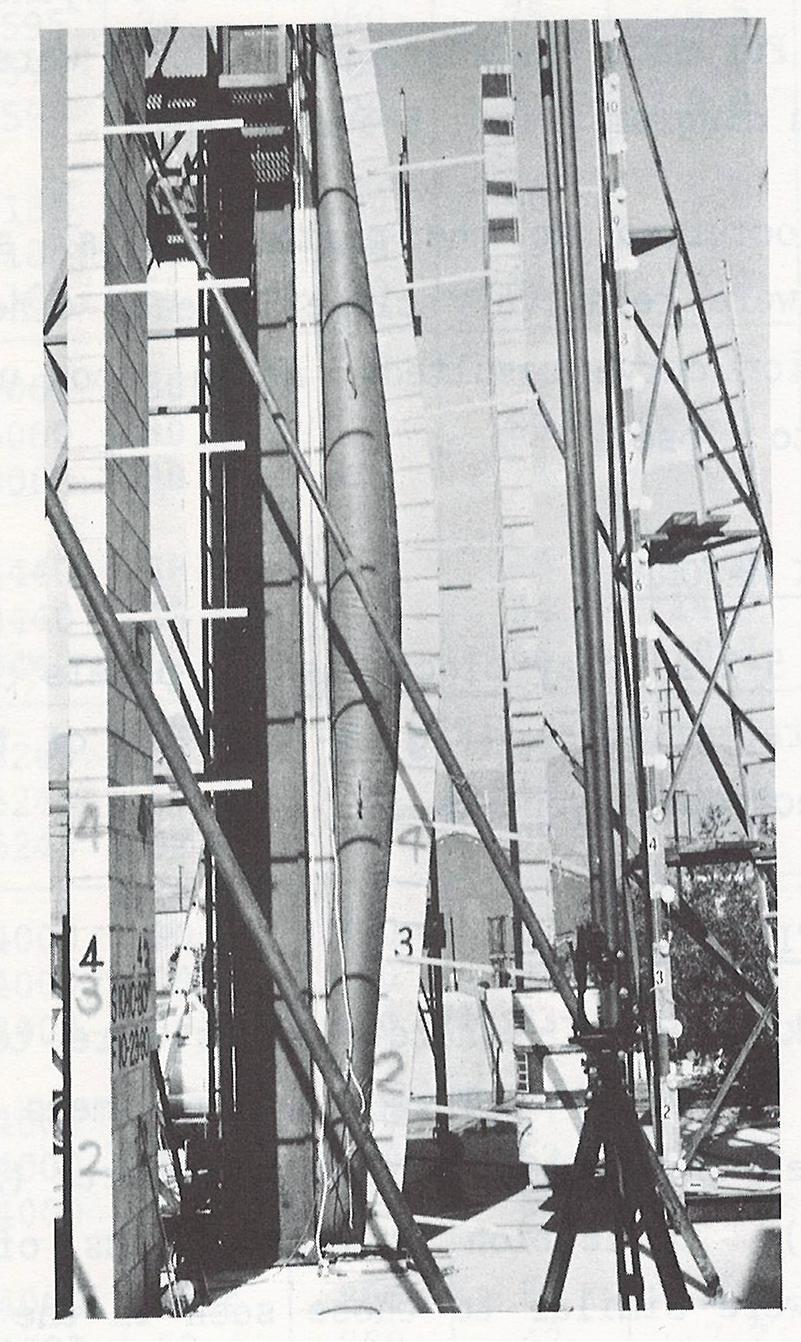
The strength level moment for the tall, slender wall procedure was 2.22 kip-ft per foot. The moment magnifier method was more conservative and had a strength level moment of 3.08 kip-ft per foot. However, both methods resulted in #5 at 24 inches on center for the vertical reinforcement. The service load deflection for the tall, slender wall procedure was 0.16 inches, which was less than the 0.20 inch service load deflection using the moment magnifier method. Both service load deflections were far less than the allowable deflection of 1.85 inches for this 22-foot tall wall.
Conclusion
This example highlights that moment magnifier method is conservative. In this case, conservatism did not result in additional reinforcement. There may well be cases where the moment magnifier method may require additional reinforcement, or an increase in masonry unit strength. Nonetheless, its savings in design time; and the elimination of the 0.5 f' m step function, the 20% of f' m limitation on the maximum strength design axial stress of the wall, and the h/t limitation of the tall, slender wall design should make it attractive to structural engineers designing tall, slender walls.■
SEPTEMBER 2023 45
Figure 2 Typical Test Panel. (This 10" CMU Wall Deflected 18".) Photo Courtesy of the Task Committee on Slender Walls.
Edwin Huston, P.E., S.E. is the principal of Huston Structural Engineering, PLLC. He served on TMS 402/602-22 and on ASCE 7-22.
structural RESILIENCE
Hollow Reinforced Clay Masonry Enhances Resiliency
HCM can effectively reduce the impact of stressors and stressing events.
By Steven Judd, S.E.
We’ll start with some definitions. “Resiliency” has become a popular buzzword in design circles, but it often has various meanings depending on the user and the target audience. For this article, we will use “resiliency” to define the human characteristic of the ability to return to normalcy after a significant stressful event, or the ability to bounce back to normalcy from a significant stressful event. Some stressors can permanently change the definition of normalcy, such as loss of life that is not something from which one can bounce back. Normalcy must be redefined in such instances. A stressful event can be anything of sufficient magnitude, time, or both, interrupting a person's normal daily routine, family, neighborhood, community, country, or even broader humanitarian base. As an example of a significant stressor, consider Covid-19. It impacted individuals, families, neighborhoods, communities, and many entire countries and is considered an example of a worldwide stressor. To some extent, it remains as such. All aspects of everyone’s lives have not returned to the pre-Covid-19 normal status. Some things will remain permanently redefined regarding normalcy. In terms of the audience, this article, focuses on building-related stressors and building responses to those stressors in relation to human resiliency.
Some common events that are significant stressors that impact individuals due to their consequential effects on structures are: high winds; tornadoes; hurricanes; tidal surges; tsunamis; wildfires; ground motion; earthquakes; explosions; civil unrest, and even terrorism. There are others. Natural occurring stressors and even human-caused stressors, impact individuals by impacting their ability to function normally. If a significant stressor destroys one’s home, and food is needed, but the grocery stores have all been destroyed, no food can be acquired. That is a significant stressor, and the longer the lack of food persists, the worse of a stressor the event becomes. If medical attention is needed and the hospitals, emergency rooms, and urgent care facilities are all destroyed, that is a significant stressor. If communication necessary for survival is disrupted, that is a significant stressor and worsens with time.
The impact of stressors and resiliency can be represented by a graph that identifies the stressor disruption to normalcy, and the recovery period, called the resiliency triangle, as in Figure 1.
The dashed red line represents a minor disruption or stressor, whereas the solid red line is a significant disruption or stressor.
When a stressor or disruption occurs, that event reduces the ability to function normally by some amount – the vertical drop in functionality. After the stressful event, the return to normalcy can be quick or prolonged. Suppose goods and materials need to be acquired, and there is a disruption in the supply chain for needed supplies or materials. In that case, the duration of the stressor can be extended, which may actually amplify and/or acerbate the stressor. Initial injuries experienced during the stressor can become infected due to lack of proper
medical attention, which can reduce one’s ability to recover, so the impact of the event (degree of reduction of normalcy and duration of recovery) is increased. See Figure 2, which represents a large stressor that takes an extended time to mobilize and restore normalcy. This becomes a resiliency trapezoid (still referred to as a resiliency triangle).
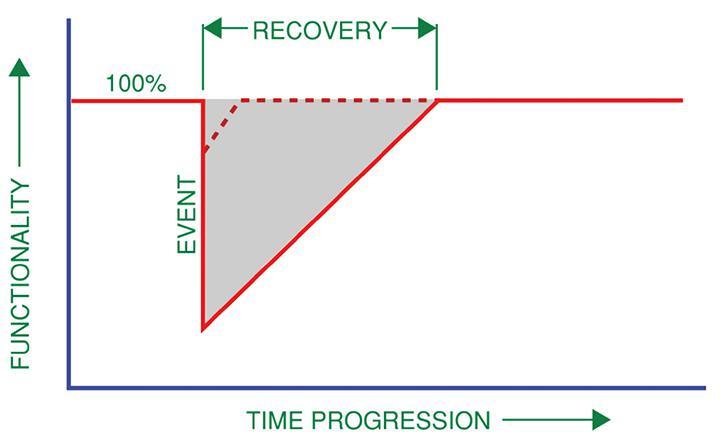
Figure 3 represents a scenario where a return to normalcy is not possible, and a new level of normalcy is defined, such as permanent loss of functionality – loss of limb, loss of life, building collapse, etc. Natural occurring stressors and even human-caused stressors, tend to be random and often unpredictable. Some events broadcast themselves days in advance – hurricanes, while others only make themselves known minutes or hours in advance – tornadoes. Earthquakes, wildfires, civil unrest, and terrorism are often spontaneous and unforeseen events without much warning. How can one design for those, one might ask?
In most cases, designers generally have a performance history for recurring events. Academic research can provide enlightenment. Worst-case scenarios can be investigated. All of these scenarios are used to inform codes that, in turn, require or prescribe minimum requirements to be used to design facilities/buildings/structures that are intended to preserve life. There is recognition in the model building codes for what has been deemed performance design, which describes the anticipated functionality of a facility after a given design event (stressor). Functionally, model building codes have always primarily focused on preserving the lives of the building occupants, not the preservation of property; collapse avoidance and preservation of building function were the goals. Model building codes have recognized for some time that the functionality of some buildings is extremely valuable in post-stressor periods. This design concept crosses the threshold of designing for collapse prevention to designing for sustained performance.
Preserving the functionality of a structure is of major importance when talking about services that are needed after a significant stressor.
STRUCTURE magazine 46
Figure 1 Resiliency Triangle
Hospitals, police stations, telecommunications equipment, governmental buildings, command and control centers, etc. The challenge is defining the correct design event because naturally occurring events do not have predictable repeatability; they have probabilities of recurrence for a given magnitude. Any given design event has at least some probability of being exceeded in any given period. A ”100-year-storm”, for instance, can occur several times in any given year, and data is then used to redefine what is a “100-year-storm”. Historical data is continually being analyzed to inform future design.
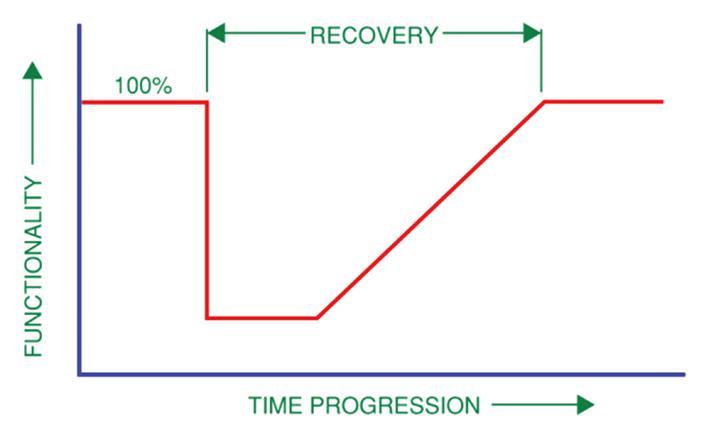
In many cases, the typical way to enhance performance or increase durability – to give the nod to the likelihood that any given design event can be exceeded - is to design for higher design loads, provide continuity and connectivity to the load paths in the building via special detailing, add redundancy (more load paths), add ductility, and use higher strength materials. Making more robust force-resisting systems and tying all the parts and pieces of the building together to avoid partial or cascading collapse is the goal. These concepts increase the durability of the building – the ability of the building to withstand the assigned or prescribed design forces or even forces that exceed those assigned or prescribed. One can easily equate increased durability to enhanced resiliency. Suppose a structure has sufficient capacity to withstand prescribed or assigned forces with little or no damage. In that case, individuals needing to use those facilities can more easily and quickly return to normalcy when the facilities remain functional. The resiliency of those individuals has been enhanced. Structural durability equates to enhanced resiliency.
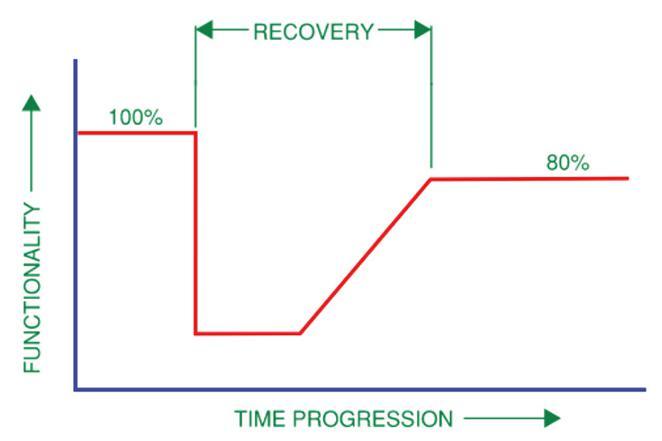
So, how does all this relate to Hollow Clay Masonry (HCM)? Those familiar with structural masonry probably deal primarily with Concrete Masonry Units (CMU) and probably design for units that comply with the minimum design strength required by ASTM C90 – Standard Specification for Loadbearing Concrete Masonry Units, which requires a minimum net compressive strength of 2,000 psi (13.8 MPa). This, in turn, equates to the masonry wall assembly design strength (f’m) of 2,000 psi (13.8 MPa) per TMS 602-16, or TMS 602-22, assuming the use of either Type M or Type S mortar and grout strength (f’g) equal to the assembly strength of 2,000 psi (13.8 MPa). Some CMU designers use f’m of 2,500 psi (17.3 MPa), as most CMU manufacturers can easily make units with a minimum net compressive strength of 3,250 psi (22.4 MPa) that is needed to achieve f’m = 2,500 psi (17.3 MPa).
If one wants a more robust structure, one chooses higher-strength materials. This is a well-known and historically proven axiom. HCM is routinely made with gross compressive strength far in excess of the ASTM C652 – Standard Specification for Hollow Brick (Hollow Masonry Units Made From Clay or Shale) minimum requirements;
3,000 psi (20.7 MPa), which works out to around 6,000 psi (41.4 MPa) for the net compressive strength. Typical net compressive strengths for modern fired clay (and shale) structural masonry units range from 8,000 psi (55.2 MPa) upwards of 20,000 psi (138 MPa), depending on the clay (and shale) materials, the material mix, and the firing temperature(s), used by brick manufacturers. This high HCM unit compressive strengths generally produce wall assembly design strengths (f’m) of 3,500 psi (24.2 MPa) to 4,000 psi (27.6 MPa) using Type M or Type S mortar and using grout strength (f’g) equal to the wall assembly design strength (f’m) as per TMS 602-16 or TMS 602-22.
Similar to the steel design concept of using ASTM A992 Gr 50 rather than ASTM A36 steel to increase capacity, using HCM to provide enhanced capacity, as compared to CMU, is as easy as using f’m = 3,500 psi (24.2 MPa) or 4,000 psi (27.6 MPa) rather than 2,000 psi (13.8 MPa) or 2,500 psi (17.3 MPa). All the same masonry design philosophies and masonry design equations are used for the two materials. Stiffness (modulus of elasticity) of structural masonry, as prescribed by TMS 402-16 and TMS 602-22, is a function of the wall assembly design strength, f’m. For CMU EmCMU = 900 x f’m. For HCM, EmHCM = 700 x f’m. That would lead one to believe that HCM buildings are more flexible than CMU. However, because the typical or common wall assembly design strengths (f’m) for HCM are around 40% to 60% higher than for typical CMU, the stiffness of the two systems is very similar. With similar stiffness, similar seismic forces are delivered to the structure, whether it be HCM or CMU.
For the following wall shear capacity and axial load capacity comparisons, common structural masonry wall assembly design strengths (f’m) of 4000 psi (27.6 MPa) for HCM and 2500 psi (17.3 MPa) for CMU will be evaluated.
SHEAR CAPACITY
The TMS 402-16 (or TMS 402-22) shear capacity equations for Allowable Stress Design (ASD) (for other than special reinforced shear walls) and Strength Design (SD) are as follows:
ASD: Fvm = (1/2) x [(4.0-1.75(M/Vd))√f’m] + axial load component Eqn. 8-26; 8-23
SD: Vnm = [(4.0-1.75(Mu/Vudv))Anv√f’m] + axial load component Eqn. 9-20; 9-18
For a given wall geometry: (4.0-1.75(M/Vd)) and (4.0-1.75(Mu/Vudv)) are the same for CMU and HCM in ASD and SD, respectively; the
SEPTEMBER 2023 47
Figure 2 Resiliency with extended recovery period
Figure 3. Resiliency Triangle showing recovery not able to reach full pre-stressor functionality
axial component is the same for CMU and HCM in ASD and SD, respectively. The two equations simplify the comparison of √f’mCMU vs. √f’mRHCM . In both ASD and SD, for a given shear wall geometry (without reinforcing contribution), the HCM wall has 26.5 % higher shear capacity/strength than the same wall configuration in CMU. Reinforcing will add the same augmented strength to both wall types, but the HCM wall will generate higher capacity/strength, and require shorter lap lengths, saving some steel weight. HCM can, in many instances, reduce the shear reinforcing required to attain the same wall capacity/strength, which reduces cost.
The image below is a comparison of the unreinforced grouted wall capacity contribution of HCM and CMU in ASD for reinforced masonry shear walls. For higher shear demand, HCM walls may be able to avoid increasing the wall thickness to attain the needed capacity, as compared to CMU. Of course, reinforcing increases the strength/capacity, but less reinforcing is possible using HCM to reach the same degree of capacity.
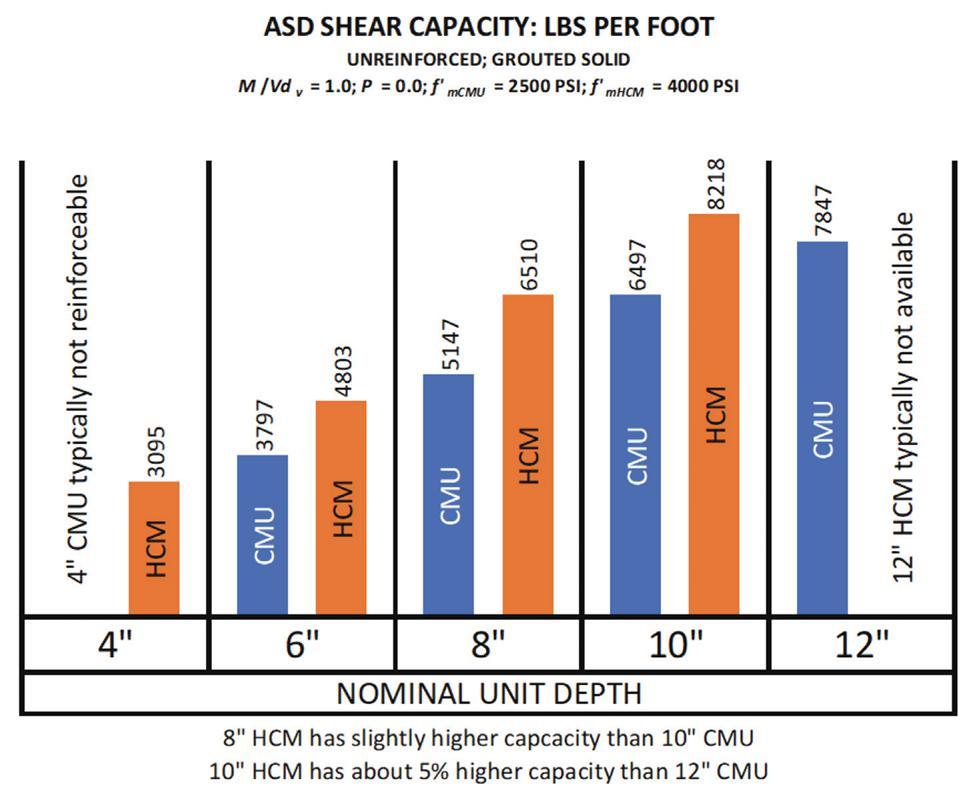
AXIAL CAPACITY:
The TMS 402-16 (or TMS 402-22) axial capacity equations for ASD and SD, for h/r ≤ 99, are as follows:
ASD: Pa = (0.25†f’mAn + 0.65AstFs)[slenderness reduction]
Eqn. 8-18/19; 8-16/17
SD: Pn = 0.80[0.80f’m(An-Ast) + fyAst][slenderness reduction]
Eqn. 9-15/16; 9-9/10
†: The multiplier of 0.25 in TMS 402-16 changes to 0.30 in TMS 402-22
For a given wall configuration: A
Fs, and fy are the same for CMU and RHCM in ASD and SD, respectively; the slenderness reduction is the same for CMU and HCM in ASD and SD, respectively; and the multipliers of 0.25 [0.30], 0.8 and 0.8 are the same for CMU and HCM in ASD and SD, respectively. The capacity/strength equations simplify down to the comparison of fmCMU l vs. fmRHCM l . In both ASD and SD, for a given wall configuration (without reinforcing contribution), the HCM wall has 60% higher axial strength than the same configuration in a CMU wall. This higher capacity can, in many instances, reduce the reinforcing required to get the same wall performance. For a given wall height, the HCM wall can carry more load. The HCM wall can generally span farther vertically for a given wall load, or a thinner wall may be possible. However, the slenderness reduction can become more significant for those cases. EleMasonry software, by Ensoltech, was used to produce the above interaction curves. Of note: the area enclosed by the HCM curve for this wall is more than twice the area enclosed by the CMU curve. Also of note, for lightly loaded walls (low demand: ≈ 25% of the CMU axial capacity), there is little advantage of HCM over CMU as the curves are almost coincidental. The great advantage of the higher strength achievable with HCM is illustrated by the dual interaction diagram. When axial loads exceed roughly half the axial capacity of the CMU, then HCM has much more capacity available, up to roughly 60% higher than the axial capacity of the CMU.
For any given design in CMU, swapping HCM for CMU while maintaining the same wall thicknesses and reinforcing generates an immediate increase in capacity and durability, which increases the ability to resist induced forces, which equates to the potential for less damage, less repair, and faster recovery, culminating in improved resiliency.
In addition to the higher strength that can be provided by common HCM for a given wall geometry, HCM, like CMU, has proven fire-resistance ratings, up to 4-hour fire-resistive ratings for 8-inch-thick filled walls. Grouted HCM walls, 6-inch-thick and 8-inch-thick, by one manufacturer have passed the FEMA projectile test for tornado wind speeds up to 250 mph. HCM has been used as the exterior reinforced façade on a Federal Court Building in compliance with General Services Administration blast resistant criteria. Lastly, special profile HCM produced by one manufacturer has passed a producer-specified 17-protocol ballistic resistance test including .22 caliber, .223 caliber, 9mm, .308 caliber (including armor piercing), .30-06 (including armor piercing), .357 caliber magnum, 44 caliber magnum, and .50 caliber shots, including 12-ga shotgun - slugs and buckshot, all fired from a distance of 15 feet.
When used in at least modest amounts in buildings, structural masonry - HCM and CMU - routinely produce facilities that
STRUCTURE magazine 48
n, Ast,
Figure 4 Shear strength comparison
embody high durability and increased redundancy. The masonry elements help resist the spread of fire, with 8” walls able to achieve up to 4-hour fire-resistive ratings that function 100% of the time at no extra cost. Less fire spread can mean reduced property loss and reduced loss of life. Both reductions enhance resiliency. The structural masonry walls have high projectile and ballistic resistance, with some HCM systems able to resist extremely high-energy munitions. HCM has a highly durable surface that is color-fast, does not fade, and does not need routine painting or touchup as maintenance, which reduces downtime for repairs after certain stressing events, like flooding, projectile impact, or abuse. Reduced downtime increases resiliency. In 2017, Hurricane Harvey hit Houston in late August 2017, just before schools were to open in the fall. Roughly 30 school campuses could not open on time due to flooding damage. At least nine campuses were so badly damaged that new locations needed to be found. Portions of interior gypsum board walls that were underwater had to be removed, and mold mitigation methods were employed; gypsum board had to be replaced and painted to match existing walls. If the interior walls had been made of structural masonry, as in many schools, once the water was pumped out, the walls could have been pressure washed and dried quickly and schools opened without delay to the school year. Resilience of the school district employees and students could have been enhanced by using structural masonry in those schools for quicker recovery from the flooding.






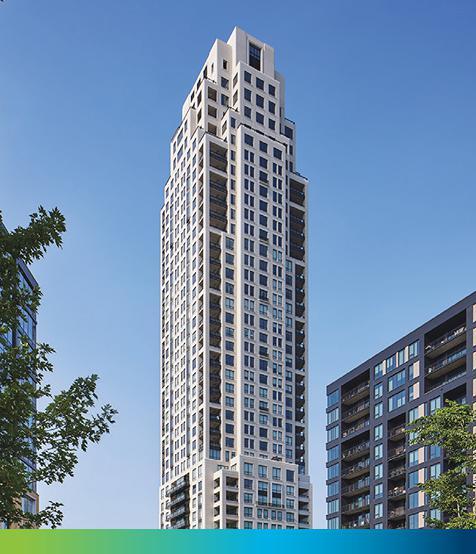
HCM can provide higher capacity/strength using commonly available materials for any given wall geometry. HCM can be used in common sizes to produce more robust structures that are more durable than other common masonry building materials. More durable facilities can withstand higher loads, incur less damage, and reduce repair time and costs. In other words, HCM can effectively reduce the impact of stressors and stressing events and shrink the resiliency triangle for faster recovery, which equates to enhanced resiliency.■






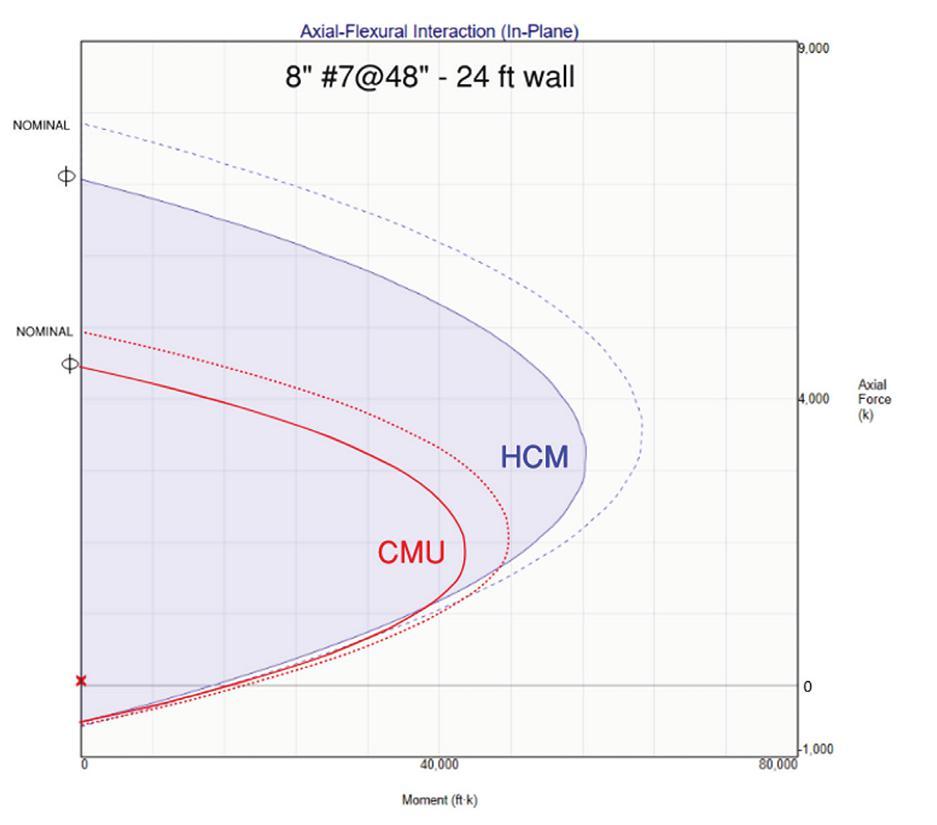
SEPTEMBER 2023 49
Steven Judd, S.E., CBS Technical Director, Interstate Brick (steven.judd@interstatebrick.com).
ALL P RFOR .
C
VERSATILE LOW-CARBON CONCRETE
more at Holcim.us/ECOPact ADVERTISEMENT–For Advertiser Information, visit STRUCTUREmag.org
Figure 5 Interaction diagram capacity comparison
3 % L SS
R N. THE
Learn
SEA Grant Program Open for Applications
The NCSEA Grant Program was developed to assist Member Organizations (SEAs) in growing their Association and promoting the structural engineering field. The Grant Program is supported by the NCSEA Foundation, which was established to support the non-profit activities of NCSEA and its Member Organizations. The purpose of the Foundation is to fund qualifying initiatives and activities that are intended to aid in the advancement of the science and practice of Structural Engineering as well as promote technical development, education, outreach, and engagement within NCSEA’s Member Organizations.
SEAs have been previously awarded grants to:
•Start a new Young Member Group for college students, recent graduates, and young engineers to connect, network, and learn.
•Enhance the Emerging Leaders event, providing an expanded mentorship program
•Create an outreach program to build STEM awareness and support a local Structural Engineering Engagement and Equity (SE3) Symposium.
• Participate in a collaborative construction competition where 30+ teams of engineers, architects, and officials build gingerbread structures in one day using tabletop shake tables, aiming to introduce students to the A/E/C industry through hands-on activities.
•Establish an Engineers Alliance for the Arts and Student Impact Project at a local high school.
Applications must be submitted by September 30, 2023.
Visit http://www.ncsea.com/awards/grants/ for more information and to apply.
Recognizing Excellence: NCSEA’s Young Member Group of the Year Award Finalists

Annually, NCSEA presents the Young Member Group of the Year award during the Structural Engineering Summit. This accolade recognizes an exceptional Young Member Group (YMG) affiliated with one of the Structural Engineering Associations (SEAs). The primary focus of this recognition is to acknowledge YMGs that contribute to the advancement of their young members, SEAs, and communities. The chosen YMG will be unveiled at the Summit and will be granted an extra $2,500 to support their future activities.
The finalists for this year’s Young Member Group of the Year award are:
•Structural Engineers Association of Colorado (SEAC)
•Structural Engineers Association of Northern California (SEAONC)
•Structural Engineers Association – Metro Washington (SEA-MW)
For more details regarding the Young Member Group of the Year Award, please visit www.ncsea.com/awards. NCSEA extends its gratitude to Computers & Structures, Inc. (CSI) for their sponsorship of this year’s travel allowances for representatives from the finalists of the Young Member Group of the Year. Their commitment to nurturing the engineering profession’s future is highly commendable.
NCSEA News STRUCTURE magazine 50
2023 Structural Engineering Summit: Where Magic Meets Engineering Excellence!

Prepare to be amazed by the brightest minds in the industry as we gather in the happiest place on earth to network and learn from each other. Engage with leaders, problem solvers, and expert speakers who will share their knowledge, experience, and passion for the field. Get the latest insights and best practices in structural engineering with over 14 hours of expert-led education sessions and the biggest exhibit hall dedicated to structural engineering.
Former NASA Engineer to Help Launch the 2023 SE Summit!
It’s true! Maureen Zappala, former NASA engineer, is joining the Summit this fall. In her inspirational keynote, Confidence is Not Rocket Science: How to Defeat the Self-Doubt of Imposter Syndrome, she will teach us the powerful strategies of “The Fraud Free Framework” to help recalibrate our thinking and begin believing that you really are as smart as everyone thinks you are.
NCSEA Webinars
September 12
What Happens in Vegas…
September 14 New Buildings < $30 Million: m.o.r.e. Cabin
September 19 Managing Risks in Adjacent Demolition, Excavation, and Construction
September 21 Understanding the “3-Es” Path to Licensure and Why SE Licensure Matters

Purchase an NCSEA webinar subscription and get access to all the educational content you’ll ever need! Subscribers receive access to a full year’s worth of live NCSEA education webinars (25+) and a recorded library of past webinars (170+) – all developed by leading experts; available whenever, wherever you need them!
Courses award 1.0 -1.5 hours of Diamond Review-approved continuing education after completing a quiz.

Recommendations for Performing Structural Engineering Quality Assurance Reviews



News from the National Council of Structural Engineers Associations 51 SEPTEMBER 2023 follow @NCSEA on social media for the latest news & events!
for Performing Structural Engineering Quality Assurance Reviews
Recommendations
more
and to register. Visit www.ncsea.com/education for the latest news on upcoming webinars and other virtual events. Thank You to Our Sponsors!
Visit ncseasummit.com for
information
ASCE Pathways to Resilient Communities Toolkit
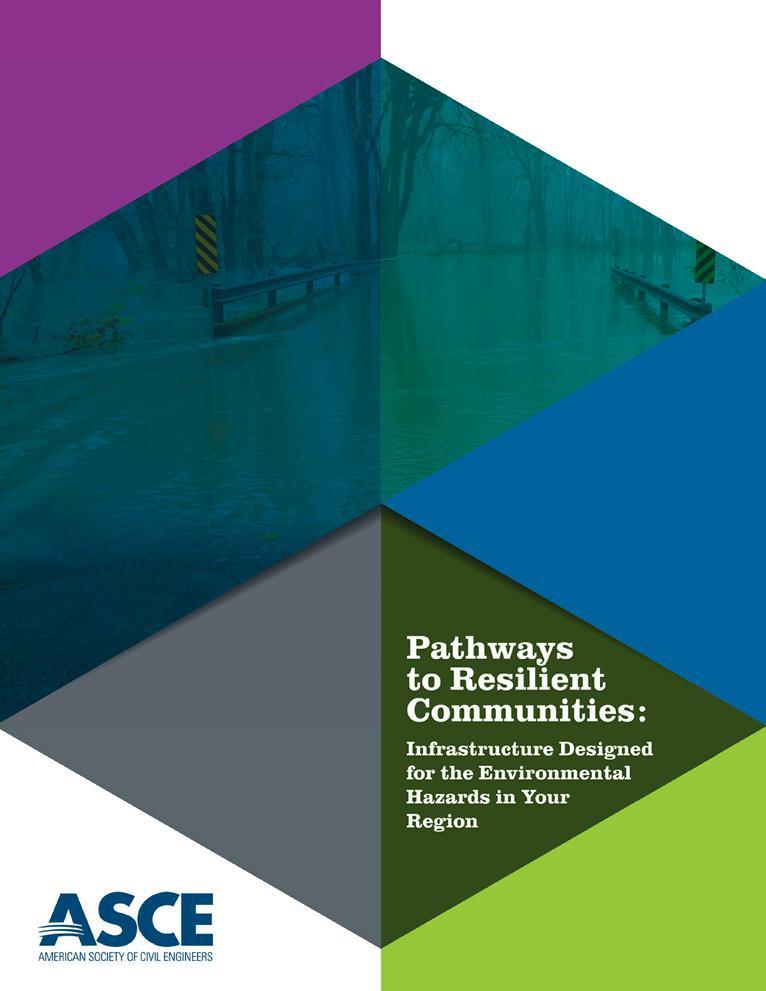
“Civil engineers are trusted to protect the safety and health of the public through the construction and maintenance of infrastructure systems people rely on every day. This new toolkit will help decision makers understand why modern codes and standards matter when improving current infrastructure and building for a more resilient future.”
Ð Maria Lehman, ASCE President
ASCE’s new online toolkit, Pathways to Resilient Communities, summarizes the difference between codes, standards, and manuals of practice and denotes where local leaders can take action to ensure these resources are put into practice. It features our hazard-specific standards including flooding, earthquakes, wind, hurricanes, tornadoes, tsunamis, winter weather and more.
You can download this Toolkit for free and learn more by visiting https://go.asce.org/ResilienceKitSM
Education
Call for New Members: ASCE 11
Are you looking to get involved in the revision of an ASCE/SEI Standard? The ASCE/SEI 11 – Structural Condition Assessment of Existing Buildings Committee is seeking new members to participate in updating this standard. Practicing engineers, researchers, building officials, contractors, and construction product representatives are all needed and welcome. Young professionals (35 and younger) are encouraged to apply to participate in this revision effort. If you’re interested in applying for the committee, please submit your application by October 31 via the online form at https://go.asce.org/ASCE11CallSM.
Public Proposals for ASCE 7-28
SEI is currently accepting proposals to modify the 2022 edition of ASCE/SEI 7 Minimum Design Loads and Associated Criteria for Buildings and Other Structures, as the committee prepares for the 2028 revision cycle.
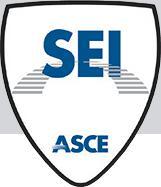
The committee has extended the deadline and will accept public proposals until December 1, 2024. Email SEI Staff at sei@asce.org for the form to submit a public proposal.
Follow SEI on Social Media:

STRUCTURE magazine 52 SEI Update
Advancing the Profession
Join Us for Standard Series
On September 14, 2023, mark your calendars from 1:00 – 2:30 pm, for ASCE/SEI 41 Seismic Retrofit. This updated standard introduces cutting-edge performance-based seismic rehabilitation techniques to enhance building performance in future earthquakes. Discover the latest generation of methodologies aimed at improving safety and resilience.
Then, on October 12, 2023, from 1:00 – 2:00 pm, don’t miss ASCE 7-22 & IBC 2024 Update. Gain valuable insights into ASCE 7-22 including understanding the difference between the document and the International Building Code 2024, especially for the seismic and snow hazards.
Learn more and register at https://collaborate.asce.org/integratedstructures/sei-standards.
Peer-to-Peer Standards Exchange Forum
Come join the discussion about ASCE Standards! Our Peer-to-Peer Standards Exchange is an ASCE Collaborate forum to discuss technical issues about ASCE standards. Ask questions and discuss with your community. ASCE/SEI Members can ask and answer questions (nonmembers have view-only capability). Join the conversation today at https://collaborate.asce.org/standards-exchange/home.
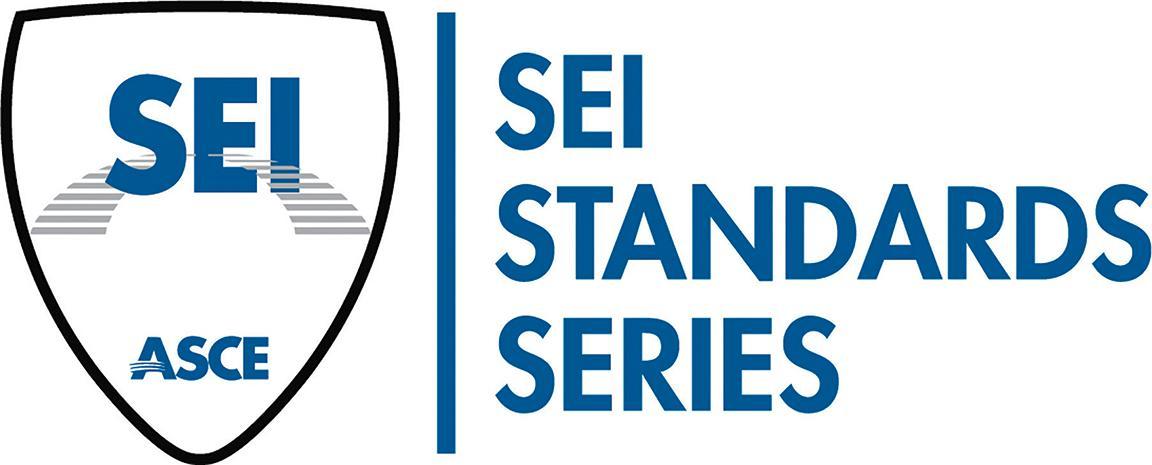
SEIFutures Fund Donor Impact Event
Tuesday, September 26,2023,1-2 pmET
Please join SEI Futures Fund Board Chair Jon Magnusson, fellow donors, and members to learn about funded efforts benefiting the future of the structural engineering profession that you make possible through your generous giving. Participants will hear updates from and interact with funded effort leads, including:
•SEI President Don Scott on Climate workshop effort
• SEI Managing Director Jennifer Goupil and Dr. Elaina Sutley on Scholarships to SEI Conferences and Codes & Standards Young Professional program
•Dan Bergsagel on Building the Next Engineers Register for this free event at https://go.asce.org/3KQEfQo
Errata
SEPTEMBER 2023 53 News of the Structural Engineering Institute of ASCE SEI Standards Supplements and Errata including ASCE 7. See www.asce.org/SEI. To submit errata, contact sei@asce.org.
CASE in Point
Tools To Help Your Business Grow...
CASE has committees that work together to produce specific resources available to members, from contract documents to white papers, to help your business succeed.
If you are a member of CASE this tool and all publications are free to you. NCSEA and SEI members receive a discount on publications. Use discount code - NCSEASEI2022 when you check out.
Check out some of the brand new CASE Publications developed by the Guidelines CommitteeÉ
CASE 976-C: A Review and Commentary on the American Institute of Steel Construction 2022 Code of Standard Practice for Steel Buildings and Bridges
The importance of the AISC Code of Standard Practice (AISC 303-22), referred to herein as the Code or COSP) to the construction community is manifested in its almost 100 years of use and development. This Code establishes the trade practices for the steel industry. Generally, this involves the acceptable practices and responsibilities of the Fabricator and Erector and the responsibilities of others such as the Owner’s Designated Representative for Design (ODRD) – (usually the Structural Engineer of Record), the Owner and the Owner’s Designated Representative for Construction (ODRC) – (usually the General Contractor or Construction Manager or similar authority at the jobsite) as they relate to the work of the Fabricator and Erector. The 2022 COSP addresses many recent changes in the practice of designing, purchasing, fabricating and erecting structural steel and is therefore a continuation of the trend of past improvements and developments of this standard.
CASE White Paper
Beyond the Code: Shrinkage Cracking
CASE recognizes that the International Building Code or other governing codes do not address all aspects of structural engineering and design. Often, the most common issues where the owners, or the contractor or the design team are not aligned deal with what is not clearly addressed by the various codes or design guidelines. This is the second in a series of “Beyond the Code” white papers that will attempt to collate design considerations that need to be discussed with the owners at the beginning of a project to establish a clear Basis-of-Design for the project. By proactively bringing up the design consideration in front of the owners, the Structural Engineer can set up realistic expectations and discuss the cost impact of alternative designs.This white paper in the “Beyond the Code” series discusses shrinkage cracking in concrete with an explanation of why it occurs, common locations they occur, and strategies to mitigate them becoming a risk in your project

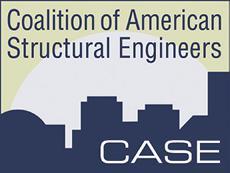
You can purchase these and other Risk Management Tools at www.acec.org/bookstore
You can also browse all of the CASE publications at www.acec.org/coalitions/coalition-publications/
Is there something missing for your business practice? CASE is committed to publishing the right tools for you. Have an idea? We’d love to hear from you!
Follow ACEC Coalitions on LinkedIn: www.linkedin.com/in/acec-coalitions


STRUCTURE magazine 54
Upcoming Events
ACEC Fall Conference
October 15 – 18, 2023
Austin, TX
The ACEC Fall Conference taking place October 15-18 in Austin, Texas is the engineering and design services industry's leading event focused on the business of engineering. 900+ engineering professionals attend educational sessions, major networking events, forums, roundtables, and ACEC/PAC fundraising events.
Registration is open now! Visit https://www.acec.org/education-events/events/fall-conference/

Managing Small Projects Successfully: How to Prevent Small Projects from Becoming Big
October 31 – November 9, 2023
Online Course
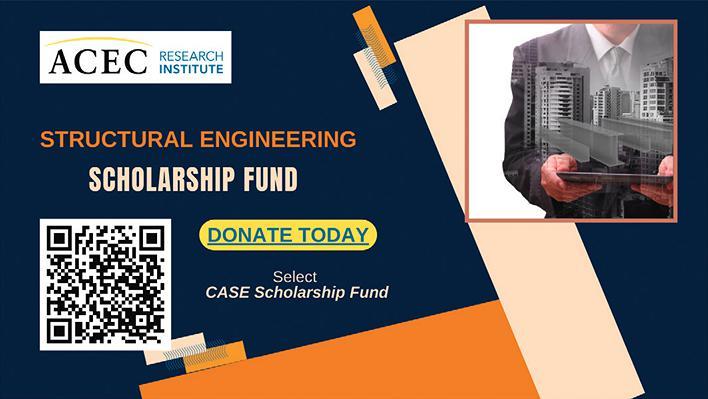
For engineering firm project managers and firm principals, smaller projects can be a core revenue driver. But, smaller projects still have the potential to carry big risk that can be a drag on resources, profitability, and client satisfaction. The good news is that, with the right set of skills in your toolbox, you can ensure that even the smallest projects deliver maximum profits. Register now for Managing Small Projects Successfully: How to Prevent Small Projects from Becoming Big Problems and learn the skills, hacks, secrets, formulas, trouble-shooters and problem-solvers that make engineering firm executives and clients delighted with small project progress and outcomes.
From planning, scheduling and budgeting to risk control and crisis management, this live online program packs everything you need into just 8 hours of instruction, broken into two-hour sessions to work with your busy schedule. Even better, it is packed with proven insight from the engineering project management experts at PSMJ Resources, Inc.
Earn up to 8 PDHs!
55 SEPTEMBER 2023 News of the Coalition of American Structural Engineers
Now more than ever we need to support the upcoming generation of the workforce.
Give to the CASE Scholarship today!
INSIGHTS
The Future of Concrete BIM
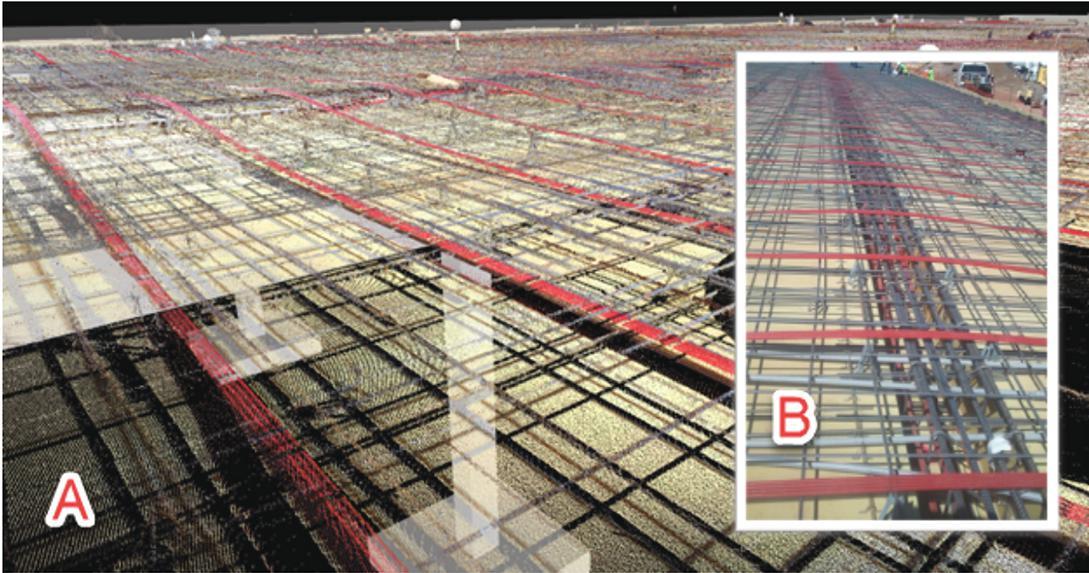
Thoroughbreds, donkeys, & dead horses.
By Dr. Will F. Ikerd, P.E., Ph.D.
ÒThe Importance of Building Information Modeling (BIM) in Structural Engineering” was the title of a 2008 October article in this magazine that stated, ‘In varying ways, in less than ten years, BIM will permanently change the structural engineering profession and its universities, firms, clients, markets, design codes, digital tools, contracts, insurance policies, global recruitment of staff, work process, and many other aspects.’ The readers may judge the merit of that past 2008 article. Today, this article in 2023 looks forward with the belief that the Structural Engineering (SE) profession, and concrete BIM, specifically, will see more changes over the next seven years leading up to 2030 than seen in the previous three decades. Fortune will favor Structural Engineers with a vision to see the trends in concrete and technology.
Past Three Decades
The ’90s saw the early concepts of low-resolution 3D modeling emerge in concrete even though much of the SE process was still analog. The field still used pencils to work out formwork on the structural drawings. SE firms produced the Contract Documents (CD) as a shaken but not stirred cocktail of base Computer-Aided Design (CAD) work, sticky back details, and notes with a little hand lettering/linework sprinkled throughout for spice. Simply printing a set of CDs could take a full day on the plotters. By the end of the decade, most of the CDs were pure single malt CAD produced for the initial Issued For Construction (IFC) set but quickly turned into the good ‘old fashion’ cocktail with hand sketches and notes in the record set as Requests For Information (RFIs) and addendums were mixed in during construction. None of the ‘as-builts’ were ever served ‘neat’ to the owner and often looked like they were on the rocks for a while and a little watered down in the information gathering between the field and office. Young engineers of the time will remember that concrete shop drawings sometimes had up to seven copies requiring manual hand transfer of red marks to all the sets with a wet submittal review stamp. These were then rolled up and rushed out to a courier or overnight shipping roll to get the submittal off the clock of the SE’s review logs. RFIs were often answered by intuition, wisdom, and experience by the SE initially over the phone with the GC’s field engineer. The SE would follow this up ‘formally’ with confirming hand calculations that went late into the day. They had to
pencil-whip a hand sketch they would then throw in the fax machine to help the GC adjust the final rebar placing before that week’s concrete pour in some cases. The GCs had limited internet at the job trailers, and often the SEs would visit the site when an issue arose. Following site visits, the SEs might take a roll of film to be developed for the photos until digital cameras emerged at the end of the ’90s. Many of the reproduced drawings were still blue line copies with the familiar aroma of ammonia from the diazo printing when they were first unrolled. The concrete design was analog with engineers flipping through their paper copy of ACI 318-95 as they moved through different software applications to address the different concrete elements for floor plans, beam schedules, column schedules, pier schedules, etc. Young SEs of the time will also remember the heated debates among principals as to whether Engineers-In-Training (EITs) should be allowed company email addresses and access to web browsers at their work computers, given the firm’s limited bandwidth on 56k/s dial-up modems. Full 3D models of frames and 3D Finite Element Analysis (FEA) models of complete two-way flat plates with irregular openings were emerging. By the mid-2000s, some SEs began issuing their first projects with commercially available structural-focused BIM applications. They could immediately see the limitation in structural BIM applications: computer model size and detail capabilities with concrete. Around the mid-2010s some SEs began seeing robust full 3D rebar models of irregular complex concrete shapes such as hydro-electric dams. These complex rebar models were developed by progressive detailers working at larger rebar fabricators. These advancements of the time were due to rapid growth in computer power, operating systems,
STRUCTURE magazine 56
and BIM application capabilities to handle larger concrete models.
Figure 1 Laser scan by IKERD of the firm’s PT parking garage project with elevated retail above, circa 2013. The firm’s inhouse SE team coordinated the PT with their in-house reality capture scan team to aid the owner in developing an as-built PT tendon mapping for future coring of the slab. Laser scanning was performed the day before the pours of each section of the deck and brought into the 3D BIM models to develop LOD 350+ concrete BIM content. Such laser scanning technology as this has increased in efficiency and capability over the last decade since the data collected in the image above.
Near the end of the 2010s, the use of cloud-based team models began to expand rapidly, and 4G and 5G networks began taking concrete BIM to the field. In the 2010s, the use of laser scanning of concrete and rebar began to be utilized for field validation and creating as-built PT tendon locations for owners, for example (Figure 1).
The 2010s also saw the emergence of clearly defined areas of BIM in design and construction litigation. Since the early 2010s, the author has been requested by attorneys as an expert on the topic of BIM and Virtual Design & Construction (VDC) in building design and construction litigation cases in the US and Canada on a variety of project types. While this article cannot address specific cases, it does share an SE’s perspective of common trends and lessons learned from BIM litigation with emerging technology. Themes in BIM disputes typically involve miscommunication of the scope, schedule, fee, Level of Development (LOD), and firms’ marketing around BIM. Even with all the changes noted above, there remains one area of the SE profession that has not consistently advanced with BIM over the last three decades. It is the sociology and attitudes of SE firms and the principals who own those firms that has lagged the technology changes with BIM. Too often, SE firms begrudgingly admit that BIM helps them produce 2D documents. At the same time, they see any further use or innovation of BIM as someone else’s issue and none of their business
Level of Development (LOD)
LOD has played such a central role in BIM disputes that it should be addressed first. The American Institute of Architects (AIA) has a wellestablished set of definitions for LOD beginning in 2008 with the AIA E201 document. AIA updated their definitions in 2013 and, most recently, in 2022 with the AIA E202-22 ‘BIM Exhibit for Sharing Models with Project Participants’
It is understood that LOD may seem tedious, like the ‘excitement’ of reading a dictionary. However, LOD provides the terminology needed in contracts with BIM. LOD is how BIM scope is defined for claims against SE firms for both errors and omissions as well as breach of contract when SEs do not provide what they knowingly (or unknowingly) commit to with BIM in writing. Ignorance of BIM and LOD by SEs has not typically been a good business model or defense when claims are made against them. Moving forward, SEs should consider an informed use of AIA 2022 LOD definitions in their scopes and avoid any home-grown definitions of LOD from their firm or the architects or builders they work with. When considering the Level of Development (LOD) for Model Elements (ME) in BIM, consider a promisor who committed to provide a thoroughbred horse (ME LOD @ 300~300+) to a recipient who placed a bet to complete a race in a given time for a given effort (project bid) before the promisor let them look at the beast. If the promisor then provides a donkey, mule, old crippled horse (ME LOD @ < 300), or even worse, a dead horse (LOD 000) for the recipient to race instead of the recipient’s entitled thoroughbred (ME LOD @ >= 300), then the promisor may be in breach of contract to the recipient. The takeaway is that dead horses (ME LOD = 000) are good for making glue for those working with only 2D paper and are the correct type of horse for only 2D. The donkey, etc. (LOD 100~200) serve
a purpose and are better than the dead horse in carrying a burden (BIM process). The thoroughbred (LOD 300~300+) is the most useful in running a race (O/A/C BIM process) for a given schedule and duration, especially if that is what the recipient was promised and entitled to. Finally, don’t contractually promise thoroughbreds (LOD 300~300+) if you are not going to deliver them and know the difference between a thoroughbred and a donkey, etc. (Figure 2)
At the risk of beating a dead horse, Figure 3 provides a more concrete example to illustrate the ME progression in BIM from LOD 100 to LOD 400 from the BIMForum Global LOD Specification (bimforum.global). SE firms need to be very comfortable stating that their content is approximately at LOD 200 if that is the case and never state that a whole model is at LOD 300 if they have not verified that all of their objects are in specific locations and can be measured from the model without referring to 2D documentation. LOD 300 is not a trivial loose definition for model elements that means ‘kinda sorta close’ for the SE to wiggle around with. Instead, it is a contractual commitment to an object being specific in terms of (1) quantity, (2) size, (3) shape, (4) location, and (5) orientation within the element’s construction tolerance. If an SE firm does not intend to model an element at LOD 300 (specific), state it as such in the CDs and contract that the element is LOD 200 (approximate).
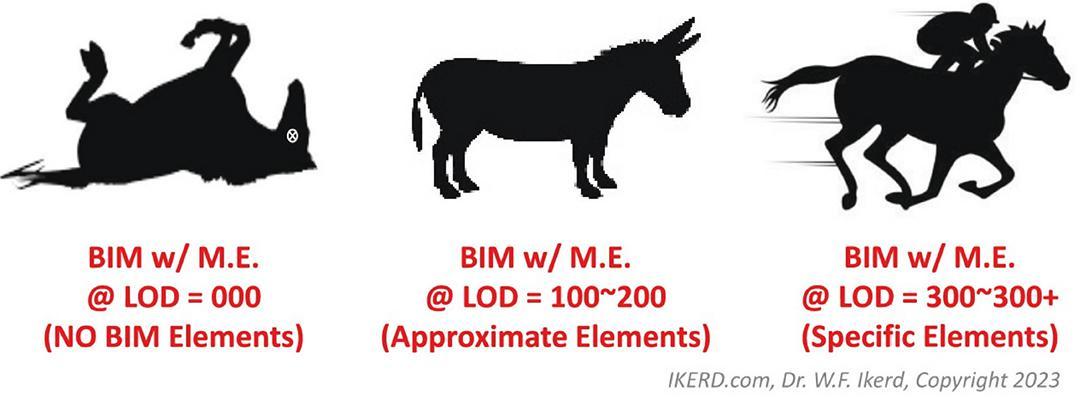
Regardless of the LOD SEs provide today, the evidence suggests they will be asked to provide higher LOD in the future.
Present Emerging Concrete Technologies
Structures, in general, and concrete, specifically, are expanding their use of many emerging and advancing technologies. Some of these include reality capture laser scanning, drone imaging, thermal data collection during curing, cloud-based multi-stakeholder models, digital 3D shop model reviews of rebar, field data collection from trades and testing agencies on tablets, and the emergence of predictive analytics (PA). The author believes the emergence of predictive analytics, which includes the buzzword of artificial intelligence (AI), will be one of the most remarkable changes coming to the structural engineering profession and concrete industry. For PA and AI to flourish, large data sets are needed. It was only when BIM matured as a relational database over the last decade that such structure for this data was organized. With cloud-based models, PA and AI engines now have the data sets they need for such statistical work. The technology exists for owners, architects, and builders to begin benchmarking quantities and comparative designs for pounds of rebar per cubic yard of concrete. SEs with many simplifying assumptions that result in a little extra rebar will begin to see such solutions transparently illuminated and possibly deemed
SEPTEMBER 2023 57
Figure 2 Analogy of a dead horse, donkey, and thoroughbred (LOD 000, 100~200, & 300~300+ respectively) for Level of Development (LOD) of Model Elements (ME) in BIM. The moral of the analogy is that you should not contractually promise that someone is entitled to receive a thoroughbred from you and then only deliver a donkey or a dead horse.
by O/A/C as overly conservative. Other emerging concrete innovations are ‘bendable’ ductile concrete, or engineered cementitious composite (ECC) with polymers, UltraHigh-Performance Concrete (UHPC) that adds fibers for greater tension capacity, and many other material advances. These technologies are advancing 3D concrete printing with early structural concrete applications. Research is being done in highly complex 3D voided slab system designs for floors with minimal concrete per square foot of slab. Additionally, the trends for lower carbon footprints on structures will add pressure for more highly optimized concrete systems with more complex geometries. All this effort will partly minimize the material used - not for cost savings but for environmental carbon reduction considerations. Architectural and structural precast will continue to blur as the industry combines them to reduce the overall material, i.e., lower carbon footprint. Other trends in concrete are ‘intelligent equipment’ and the use of robotics in field and precasting operations. Off-site construction demand will increase with a desire for greater use of modular formwork planning that can be automated with detailed 3D structural concrete models. Additionally, other market economic forces may lead to larger concrete contractors with advanced BIM capabilities absorbing smaller non-BIM regional concrete companies through mergers and acquisitions. This consolidation of concrete companies with advanced BIM departments will regionally increase the demand for more advanced concrete BIM earlier in the project in many markets that have not used concrete BIM. These advancements and many others in material and forming technology, along with external environmental and economic forces, will continue to fuel the O/A/C desire and pressure for more developed concrete BIM earlier in projects. SE firms will be asked to do more with less material, with new properties, in more complex, thinner concrete systems requiring greater analysis with designs that are highly integrated with the enclosure of the building than they ever have before by 2030.
In the coming years, a possible sleeping giant in BIM structures will be when building codes, jurisdictions, sureties, bonding companies, insurance carriers, and government agencies such as Occupational Safety and Health Administration (OSHA) begin considering if buildings designed and constructed with higher LOD in BIM have lower risks. SEs will see more BIM requirements with concrete when building permitting begins using BIM with AI to automate code compliance reviews. Scheduling and estimating concrete projects will also see notable advancement and changes in BIM over the next few years, with the rapid emergence of AI being applied to models with elements at higher LOD.
Now What Should SE Firms Consider
For CDs, SEs need to establish key BIM parameters in their general notes and specification: (1) SE’s origin of the model that trade models will reference, (2) what is modeled, (3) what is not modeled, (4) what is the level of
reliance on the elements that are modeled, (5) what is expected to be used by the trades in BIM as part of a quality control process that the SE will specify, and (6) what level of model testing for the trade’s concrete BIM will the SE, owner and/or general contractor require before the model is used to create formwork and rebar shop submittals (drawings and/or models). Such testing could include but is not limited to coordination testing and clash detection of concrete systems with other trades’ content as well as phased modeling of pour sequencing, 4D scheduling, and 5D cost estimating.

Several resources are available for SEs to learn more about concrete BIM and what they should consider in their general notes and specifications. Since 2008, the SEI Digital Design (formerly BIM) Committee (SEIbim.org) has maintained BIM resources. Since 2017, Ascend Building Knowledge Foundation (AscendBKF.org/STRUCTURES), a 501c3 non-profit, began focusing on research and training that included work in structures from design to construction. Resources for SE firms are provided at this site with sample general notes, BIM specification language, and sample BIM Execution Plans. In early 2022, the American Concrete Institute (ACI) published ACI PRC-131.3-22, TechNote “BIM Level of Development for CIP Concrete” (ACI BIM LOD 22), which does have some valuable information for SEs to consider, particularly the seven subcategories of concrete. These categories are (1) Concrete, (2) Reinforcing bar, (3) Specialty reinforcements, (4) Prestressing, (5) Specialty systems, (6) Embedments, and (7) Formwork. However, the ACI document references older AIA LOD 2013 definitions. In late 2022, AIA published its updated LOD definitions, which are the current definitions for new projects that reference them. SE firms should address the ACI BIM LOD TechNote-22’s seven categories of concrete BIM in their contracts, general notes, and specifications and clearly state what LOD they will provide using the AIA 2022 definitions. BIMForum Global (BIMForum.global) has published the 2022 LOD Specification that provides the most current and comprehensive documentation of structural LOD. The BIMForum Global 2023 LOD Specification is scheduled to be published in the fall of this year (BIMForum.Global/LOD).
SEs moving forward will need to be more informed on topics such as reality capture, design automation, AI, and delivering BIM with higher LOD elements as the contract deliverable to communicate design intent. From this informed position, they can better decide what is best for their SE firm’s business. Concrete BIM is a topic that is not going away with the drivers presented in this article. Paraphrasing Heraclitus, “There is nothing permanent except change.” Concrete BIM is not the same today as it was a decade ago, and it will be very different for SEs by 2030.■
STRUCTURE magazine 58
Figure 3 Sample image of Concrete BIM Model Element Level of Development of Concrete. Courtesy of BIMForum Global (bimforum.global), Ascend Building Knowledge Foundation (AscendBKF.org), and the author Ikerd, WF, copyright 2023.
Dr. Will Ikerd, PE, Ph.D., is Director of Research and Education at BIMForum Global (501c3 Nonprofit Foundation) and Principal at IKERD Consulting, LLC; multi-discipline engineers. (wikerd@IKERD.com), 214-382-9811.
WE’RE CEMENTING OUR COMMITMENT TO SUSTAINABILITY
cementprogress.com
PCA’S ROADMAP TO CARBON NEUTRALITY. IT’S POSSIBLE. AND IT’S HAPPENING.
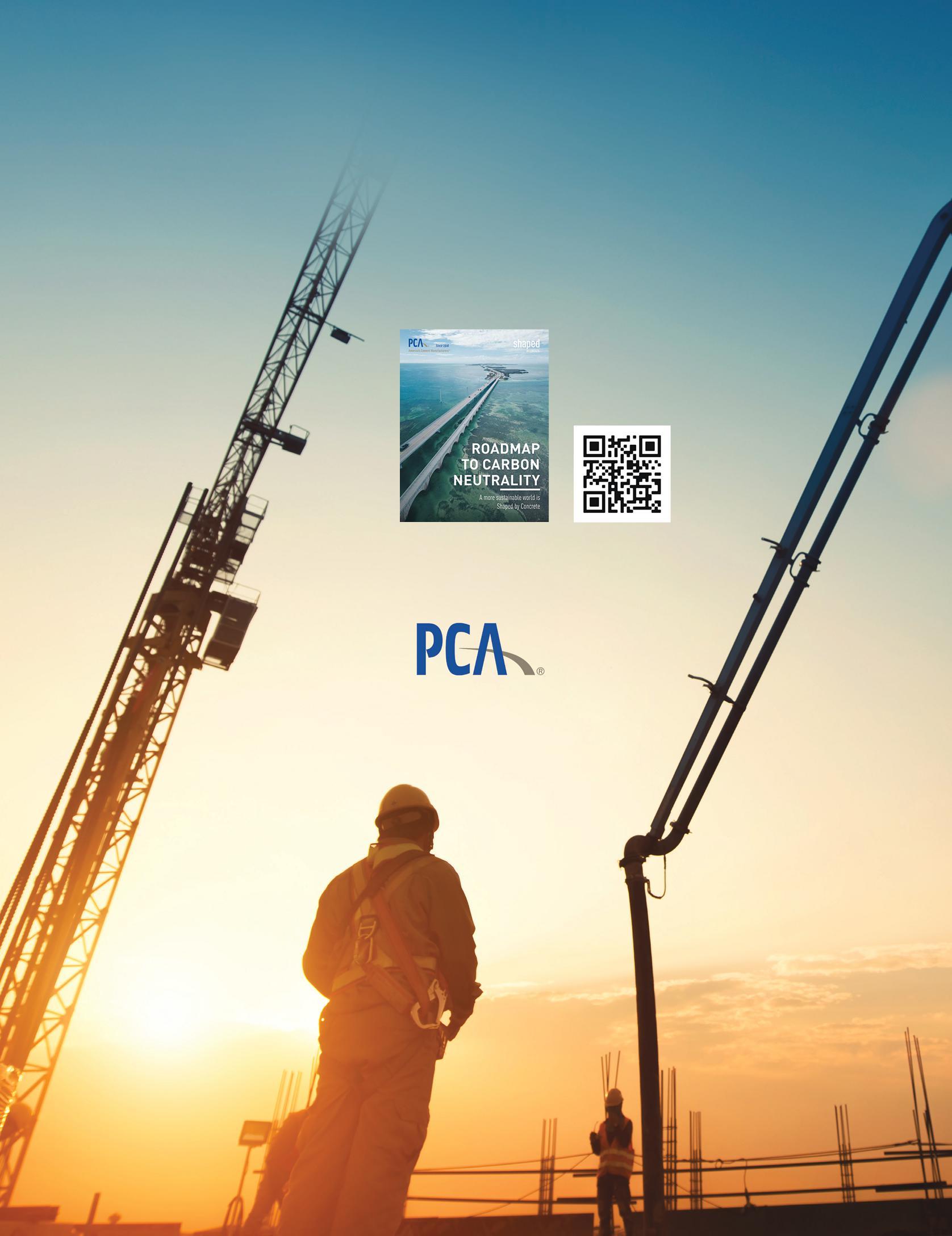
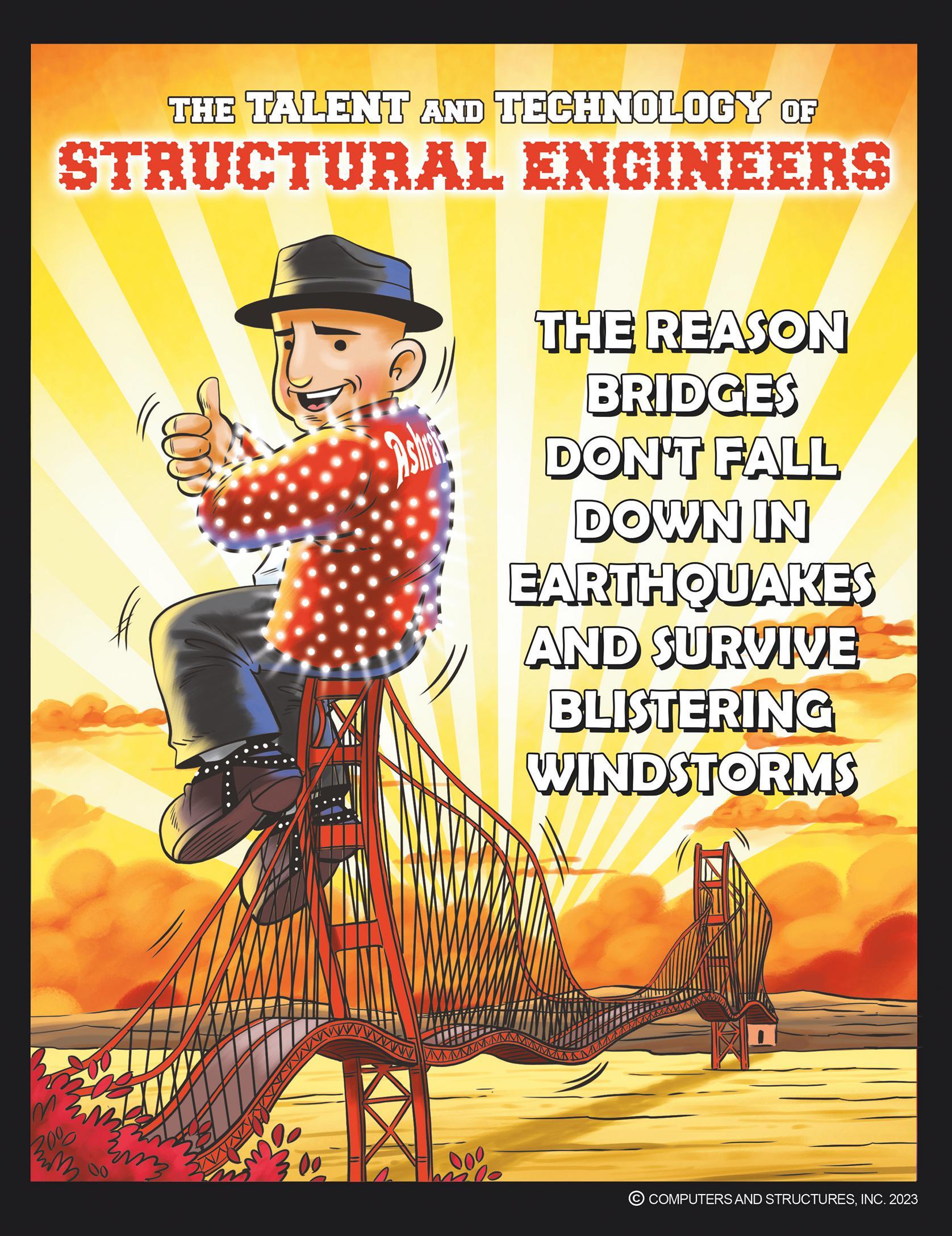



































 By Christopher Pitt, P.E., S.E., LEED A.P., Associate, KPFF
By Christopher Pitt, P.E., S.E., LEED A.P., Associate, KPFF










 By Cortney Fried, P.E.
By Cortney Fried, P.E.



















































































































































































































 By Christopher Pitt, P.E., S.E., LEED A.P., Associate, KPFF
By Christopher Pitt, P.E., S.E., LEED A.P., Associate, KPFF
























































